FALL 2024

PRIMATE MEMORIAL MONARCHS, MARIGOLDS AND MUMS
EDUCATION EVENTS
CONSERVATION THROUGH PHILANTHROPY
GATOR GETAWAY


FALL 2024

PRIMATE MEMORIAL MONARCHS, MARIGOLDS AND MUMS
EDUCATION EVENTS
CONSERVATION THROUGH PHILANTHROPY
GATOR GETAWAY

Primate Memorial
Births, Hatchings and Aquisitions
Who's Who at the Zoo
Monarchs, Marigolds and Mums
Celebrating Global Conservation
AZA Accreditation Matters
Animal Highlights
Collaborative Conservation
STRATEGIC OPERATIONS TEAM
Jeff Ettling, Ph.D., President and CEO
Holly Ellis, Chief Financial Officer
Paula Shields, Chief People and Culture Officer
Nikki Smith, Chief Philanthropy & Marketing Officer
David Hagan, Chief Life Sciences Officer
EXECUTIVE COMMITTEE
Lucia Lindsey, Chair
Chuck Ged, Immediate Past Chair
Kelly Coker-Daniel, Secretary
Anne Marie Cushmac, Vice Chair, Governance
Donna Deegan (COJ)
George Mikes, Treasurer/Vice Chair, Finance
Missy Peters, Vice Chair, Community & Culture
Paula Renfro, Vice Chair, Education
Paul Sandler, Vice Chair, Philanthropy
Karen Estella Smith, Vice Chair, Gardens & Art
Kerri Stewart, Vice Chair, Special Projects & Properties
Salmaan Wahidi, Vice Chair, Animal Care, Conservation & Wellness
Kelli O’Leary, Mayoral Appointee (COJ)
John Hayt, Honorary Advisor
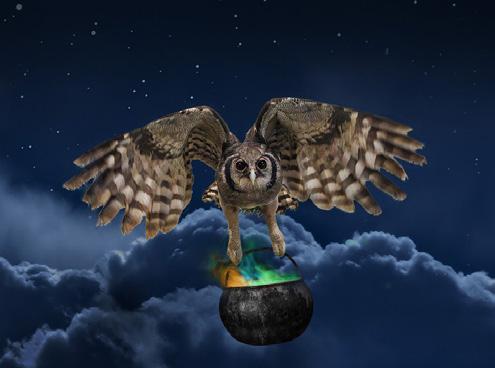
Spooktacular Page 24
Education Events
Jax Zoo Tube
Spooktacular
Nature Agents
Nighttime Events at the Zoo
Snapshot Society: Learning Light
Garden Highlight
Conservation On Draft Recap
GENERAL BOARD
Ken Amaro (COJ, Alternate)
Scott Chamberlayne
Kenyonn Demps
Dan Fields
Mike Gay (COJ)
Wilfredo Gonzalez
LeAnna Gutiérrez Cumber
René Kurzius
Barnwell Lane
Pamela Phillips
Clint Pyle
Param Sahni
Joel Swanson
Scott Witt
HONORARY BOARD
Danny Berenberg
Ivan Clare
Dano Davis
Diane David
Lenore McCullagh
Elizabeth Petway
Herbert Peyton
Clifford Schultz
Frank Surface
Janet Vaksdal Weaver
HONORARY PAST
CHAIRS COUNCIL
Martha Baker
J.F. Bryan
Carl Cannon
Howard Coker
Charles Commander
Jed Davis
Matt Fairbairn
Chuck Ged
Joseph Hixon
J. Michael Hughes
Lewis Lee
David Loeb
Richard Martin
Frank Miller
John A. Mitchell
Thomas Schmidt
Bill Rowe
Carl “Hap” Stewart
James Stockton
Penny Thompson
Courtenay Wilson
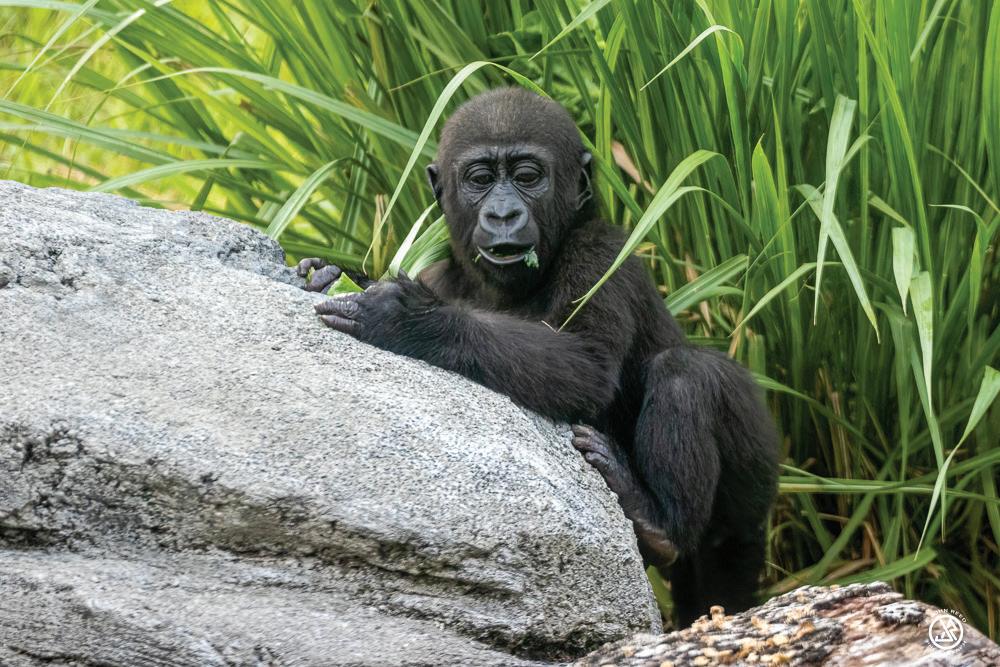
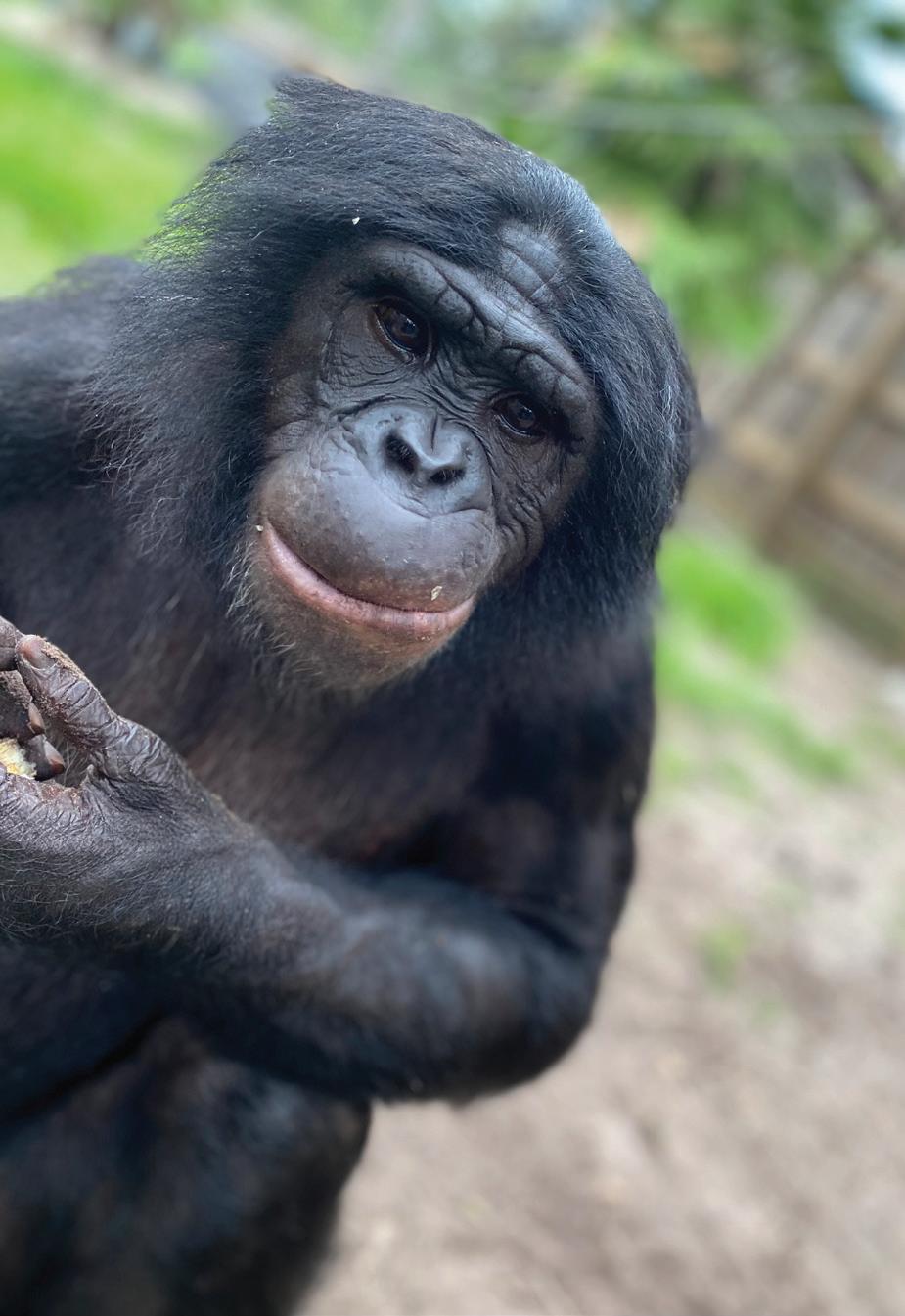
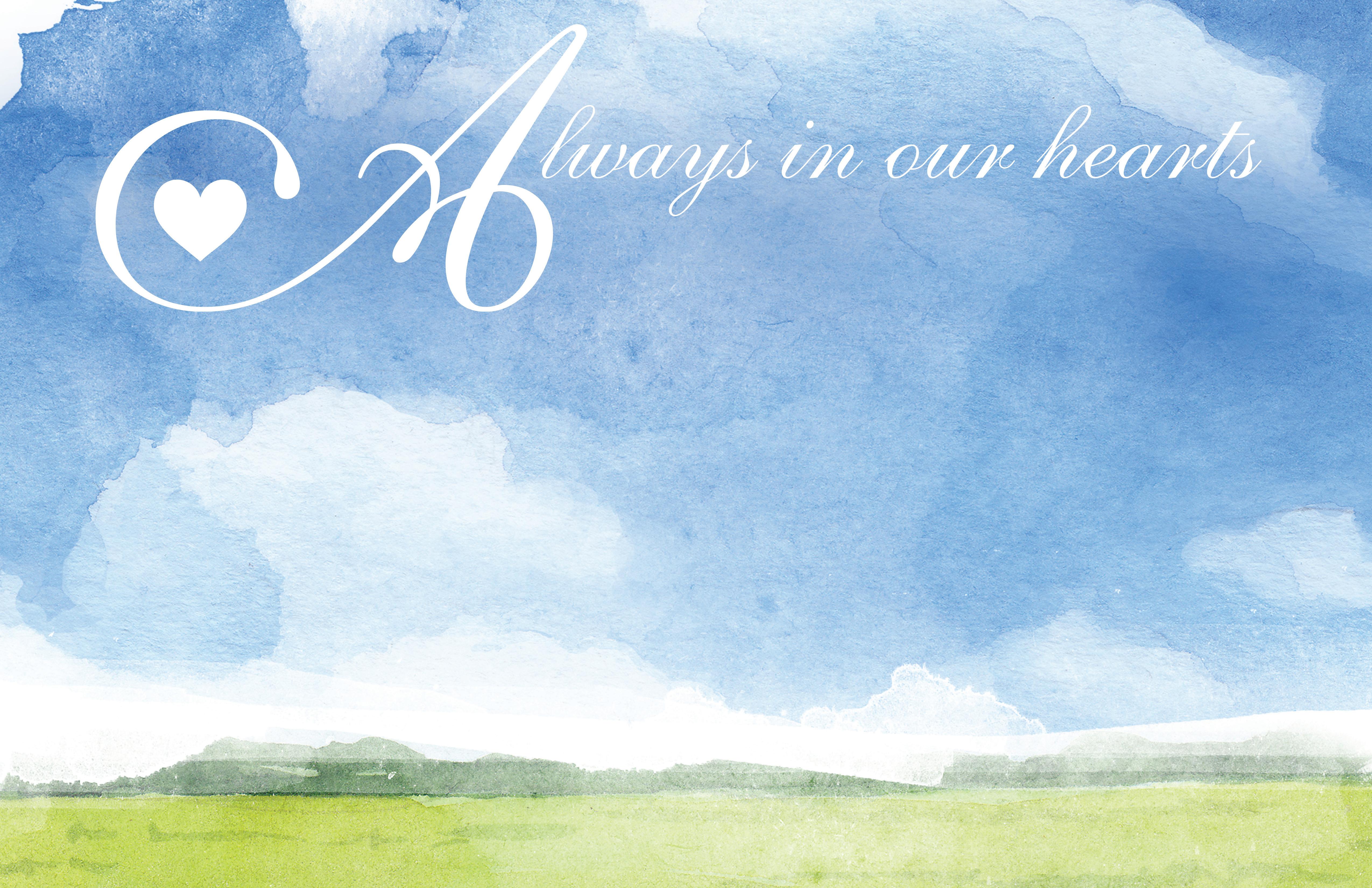

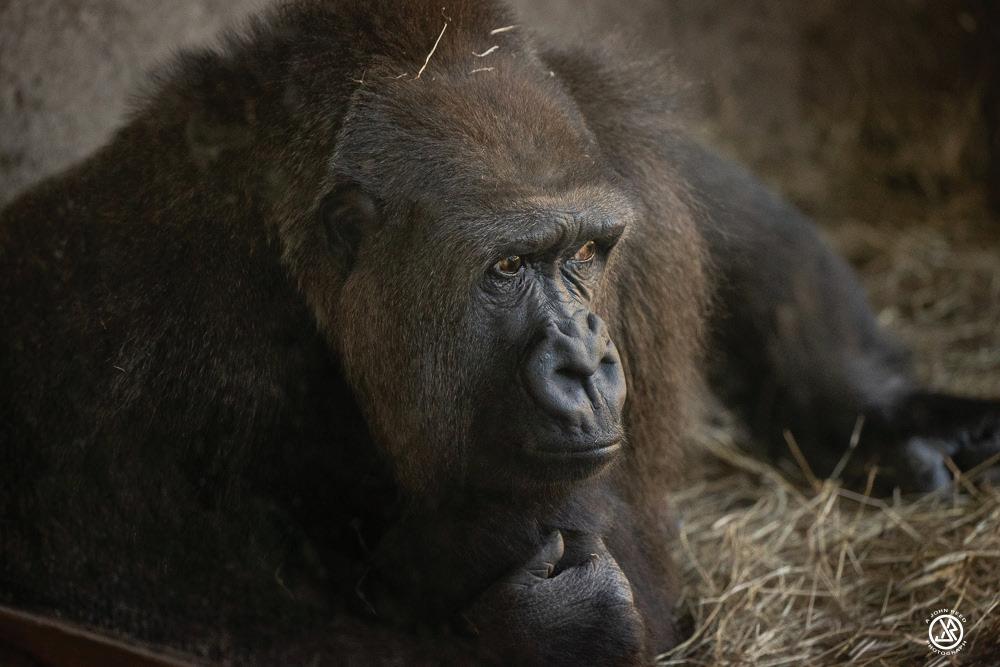
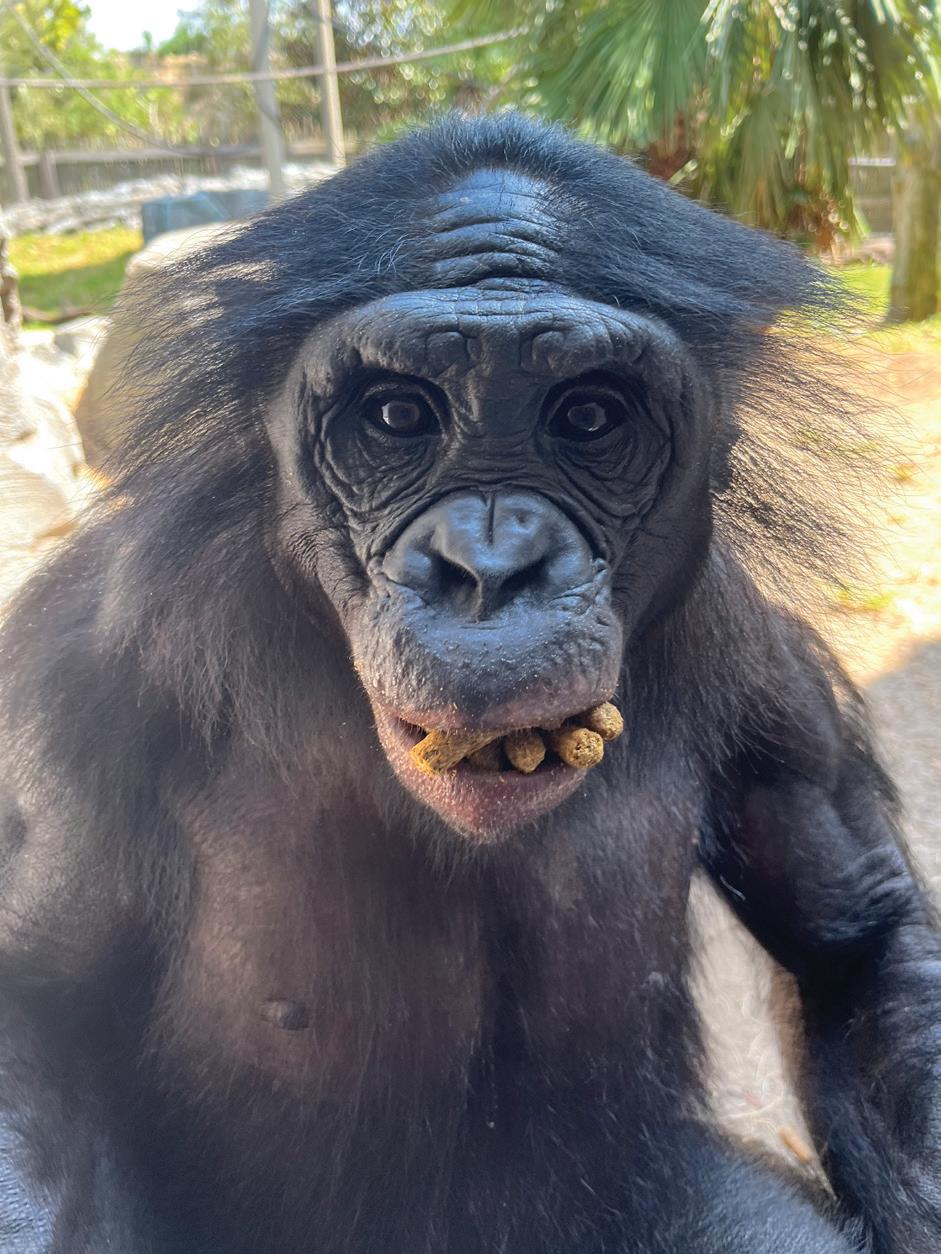
By Donna Bear, Curator of Species Management and Jasmine Alvarado, Species Management Officer

(Colobus angolensis )
Angolan colobuses are herbivores, who mostly eat leaves, but occasionally fruits and flowers. They are naturally found in central Africa, throughout the Democratic Republic of the Congo and southwestern Uganda. Their distinctive appearance, characterized by black fur on their upper bodies and white fur around their faces and shoulders, makes them easily recognizable. Perfectly adapted for arboreal life, Angolan colobuses use their mantle of hair like a parachute as they leap from tree to tree. They’ve also learned to use branches to aid in their travel, allowing them to jump distances of up to 50 feet. Another characteristic that helps in their swinging ability is their hands. They may look like they only have four fingers, but in fact, their thumb is just small, almost nonexistent, making it easier for them to shape their hands into “hooks” so they can traverse the trees unencumbered. See these distinctive monkeys for yourself at Primate Forest.
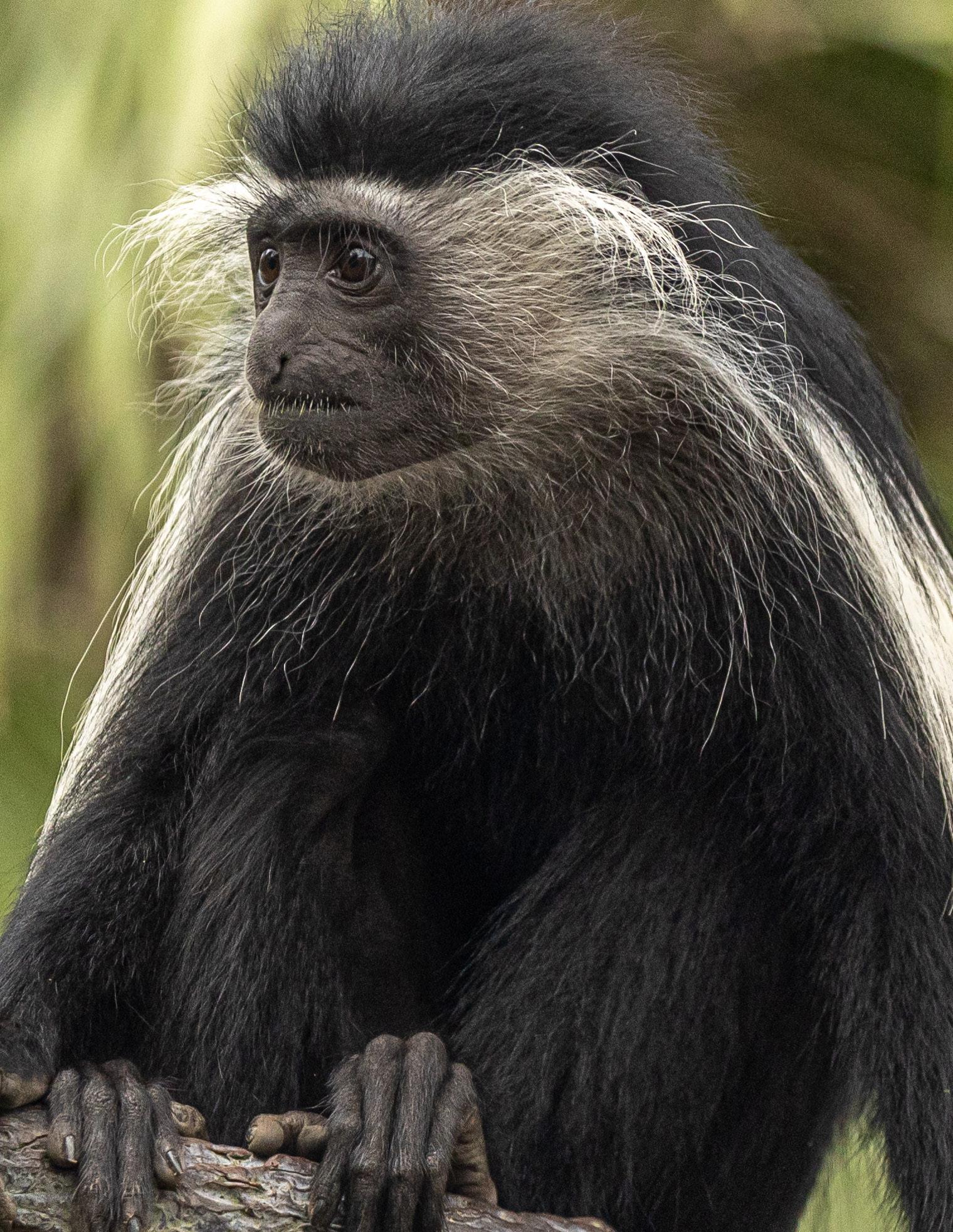
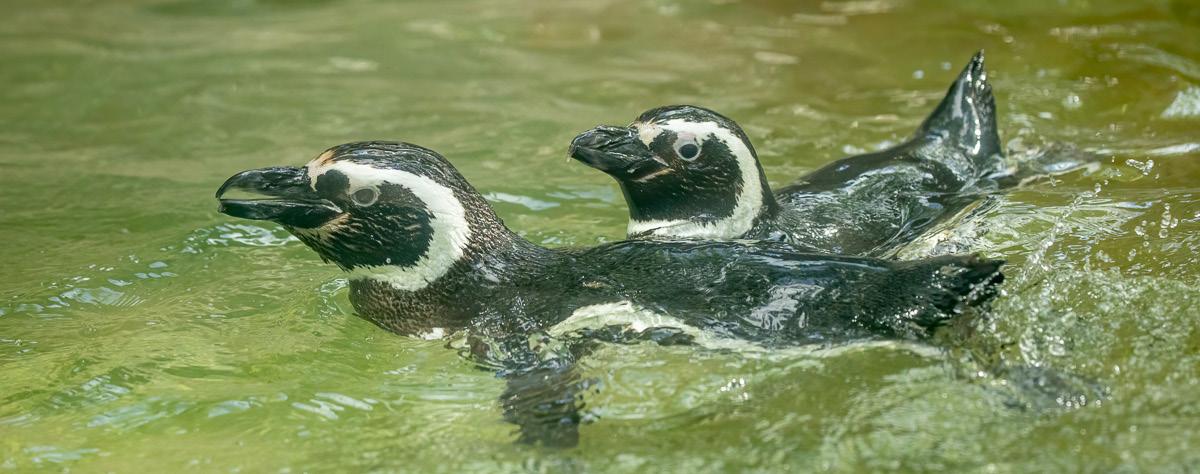
(Spheniscus
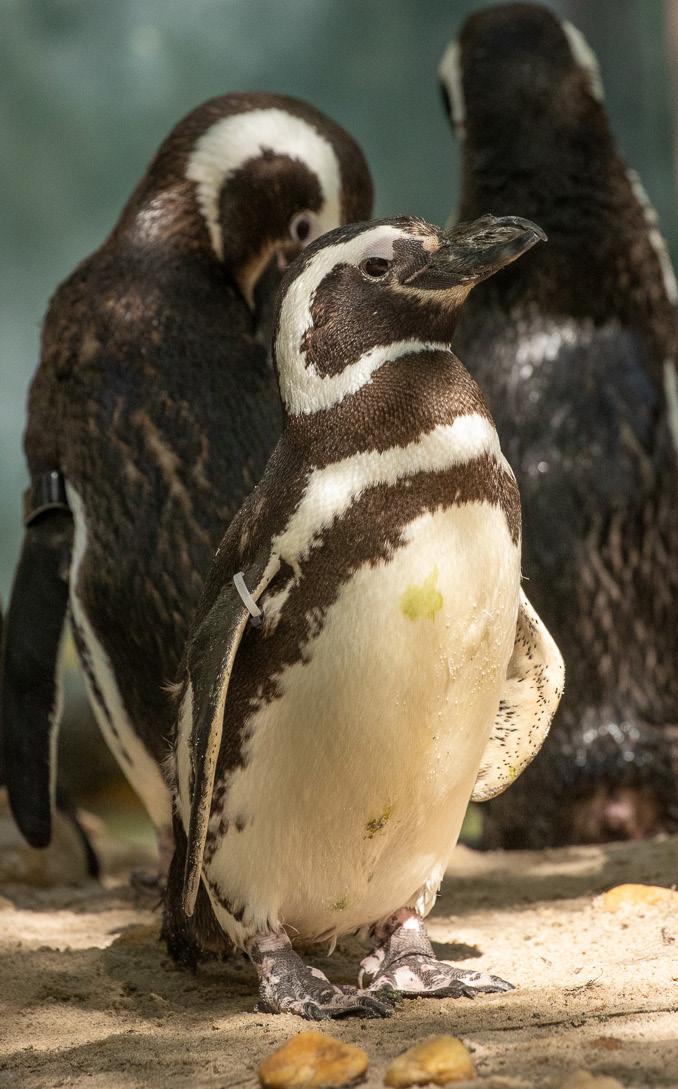
Named after the Portuguese explorer Ferdinand Magellan, the Magellanic (pronounced Ma-juh-la-nic) penguin was first spotted in the year 1519 in South America. While remarkably similar looking to other banded penguins (the Spheniscus genus), you can differentiate Magellanic penguins from the others based on the black band they have across the front of their necks and the longer, curved black band at the top of their chests. However, newly hatched Magellanic chicks are born with two layers of brown, down feathers before they develop their swimming plumage as adults. The collective name of a group of penguins is colony or rookery. But on land, they can be specifically referred to as a waddle or a huddle. And in the water, they can be called a raft of penguins. See what a day in the life of a Magellanic penguin is like at the Tuxedo Coast.
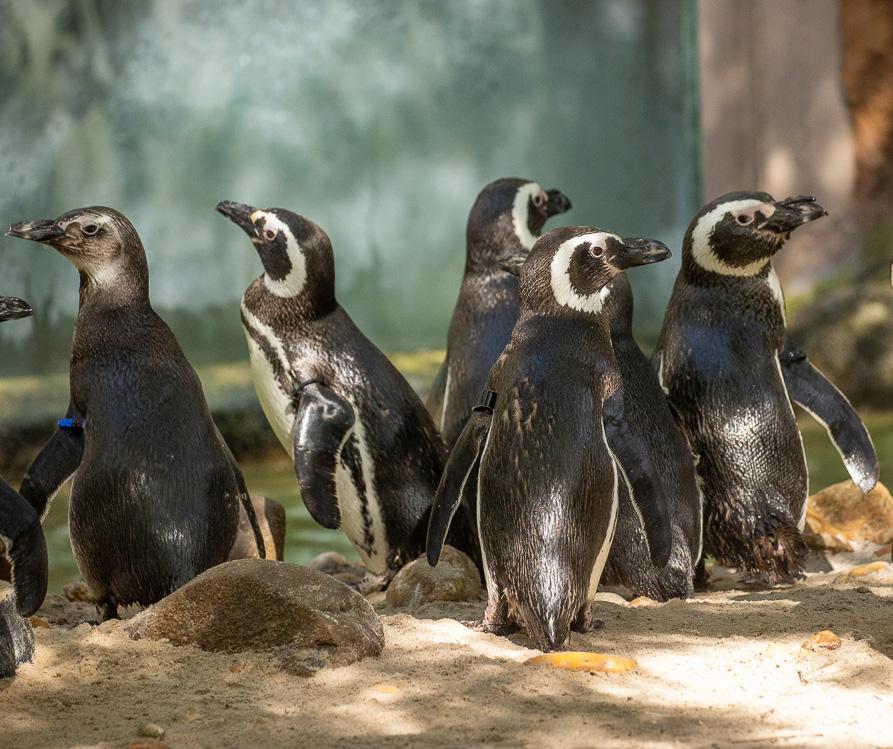
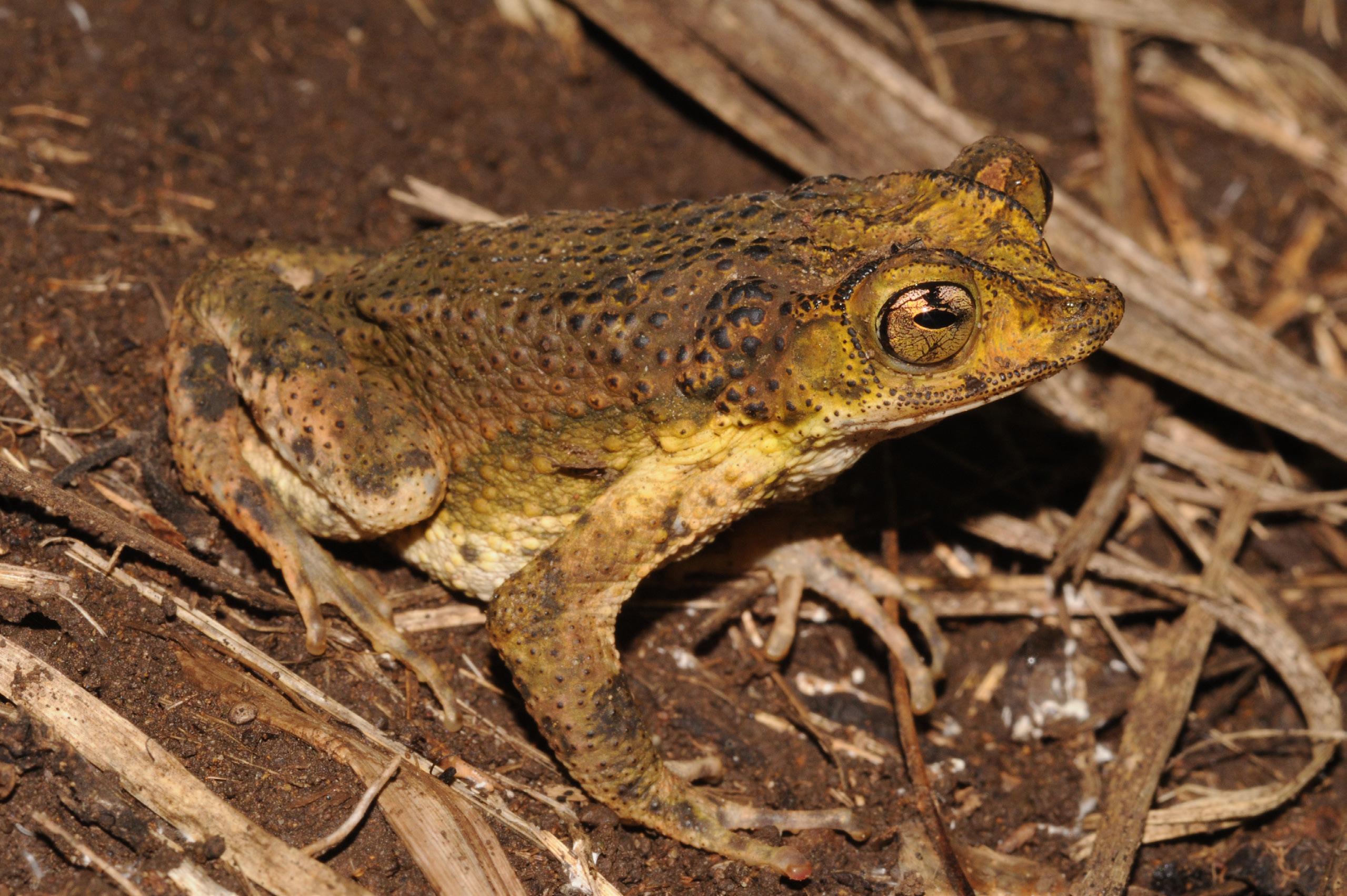
As the name suggests, the crested toad has a notable ridge or crest above each eye. These toads can grow up to 4.5 inches in length, vary in color, from yellowish green to dark brown, and have pebbled skin. Males are smaller than the females and have less prominent crests. Known by the locals as the sapo concho Puertorriqueño, this is the only toad native to the island of Puerto Rico. They can be found all throughout the island, in rainforests, grasslands and
even arid land. Since crested toads are nocturnal, during the day they hide and sleep protecting themselves from the heat. Depending on the time of year, the average maximum temperatures can go between 82 to 90 degrees. Just this year, we released 4,124 toads to Puetro Rico, bringing the total number to 26,722 since 2011. Drop by the Amphibian Conservation Center to learn more about the resurgence of these fascinating toads.
First digit male
Second digit female
Third digit sex unknown
Two digits only represent male and female
CAPS = Endangered Species
* (Asterisk) = First time at the Zoo
†(Dagger) = Released back into the wild
‡ (Double dagger) = Stillbirths
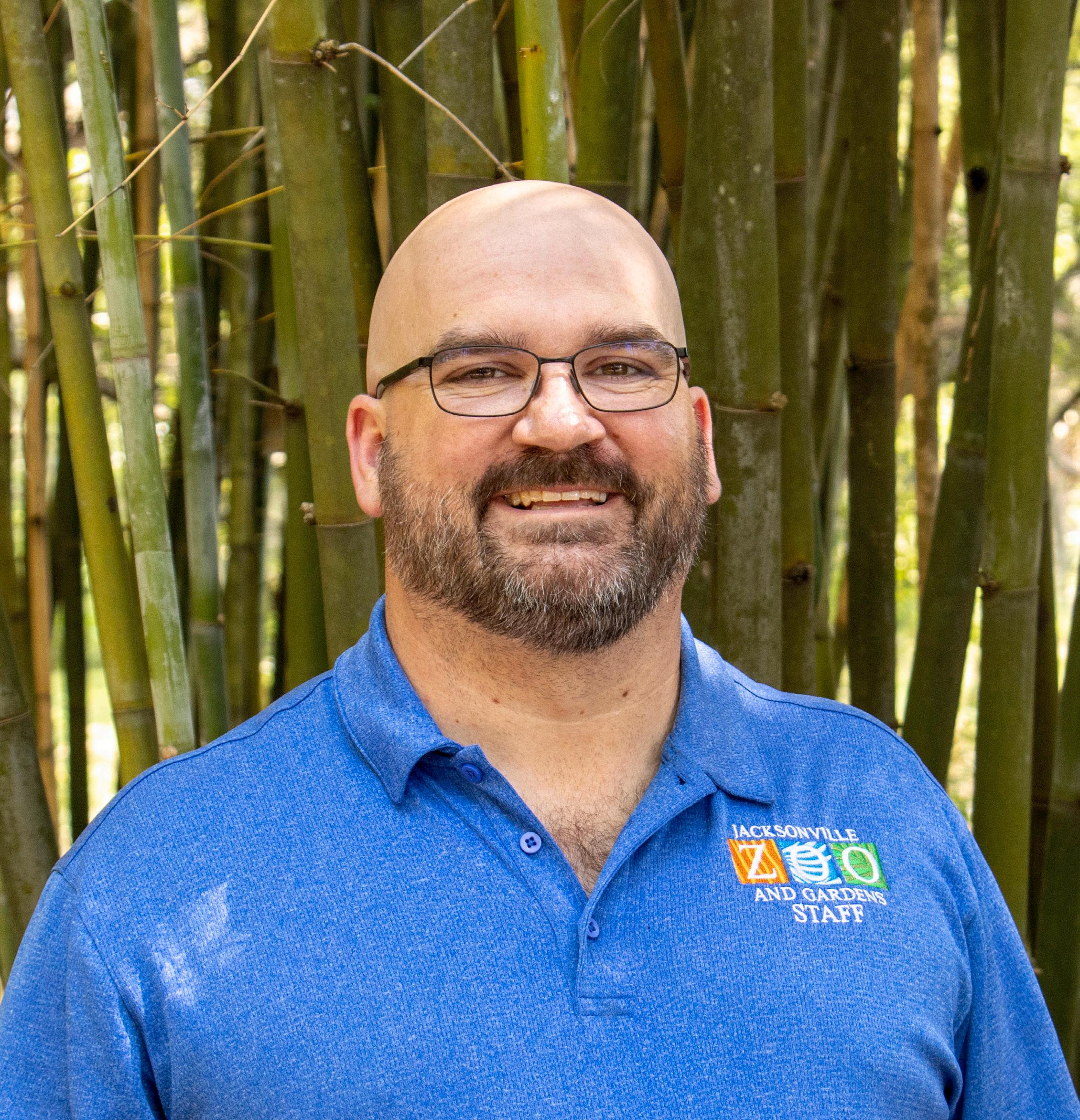
How long have you worked at the Zoo?
I started at the Zoo in October 2017. So, I am approaching my seventh year.
What were your previous jobs/career paths and how did they lead you here?
I spent about 10 years working in restaurants, but eventually, I grew tired of the industry and wanted a change. That’s when I discovered the Zoo was hiring for Nighttime Park Services, and that's how my career at the Zoo began.
What does a day in your shoes look like?
I typically arrive at work around 1:30 p.m., sometimes earlier, and first check in with my Supervisor, Callie Hawk. We review any key points or updates from the morning meeting that I might have missed. I then go through my emails to identify any new work orders. I prioritize those that require innovation or detailed attention and begin investigating them. The more straightforward tasks are completed promptly throughout the day. Recently, much of my work has involved preparing components for the Scare Zone for Spooktacular, ensuring the Facilities team can assemble them with minimal issues.
What is your favorite animal?
Squirrel Monkey, because they are cute and fascinating little animals.

What is your favorite exhibit?
My favorite exhibit is Land of the Tiger because of its design, which makes you feel as though the tigers are right there with you. The central tree and the overhead trail enhance that immersive experience.
When or how did you first develop an interest in animals/the zoo world/education?
I've always loved animals, but I never intended to make a career out of it. Initially, this was just a job for me when I moved to Jacksonville in 2017. However, it has grown into much more. When I transitioned to the Facilities team, I saw an opportunity to develop skills that could turn this into a long-term career. Over the years, I’ve honed various abilities—some more than others—with electrical work and lighting being areas where I've really excelled.
Are you native to Florida? If so, where? If not, where did you grow up?
I'm originally from Columbia, Maryland, but I moved to Jacksonville in 2017 when my family relocated here. Since I didn't have any ties keeping me in Maryland, I decided to join them.
What is your favorite part of your career or what is your most memorable experience at the Zoo (or your old zoo)?
My favorite part of my job is when I get to work on projects that directly benefit the animals. Whether it's something simple like changing an outlet, installing a fan or setting up a heater, knowing that my work helps improve their environment is incredibly rewarding.
One of my most memorable experiences was meeting Lash, our silverback gorilla at the time, up close. I was struck by his sheer size—his hands and feet were enormous. I remember being reminded by the Animal Care Specialist that staring is considered a challenge to him, but it was hard not to. Whenever he caught me staring, he would become aggressive. Even though there was protection between us, it was clear that I wouldn't want to test its limits.
Spooktacular is my favorite event because it truly showcases my hard work and creativity. This year, the Facilities team and I are building the Scare Zone based on ideas contributed by myself, the team and leadership. This event significantly impacts my day-to-day work since it's my primary focus. While I still handle other work orders, I only dedicate a small portion of time to them until the Scare Zone is completed and approved.
What do you like to do in your free time?
I'm a pretty simple person. I enjoy going to the movies, staying home playing video games, doing puzzles or reading.

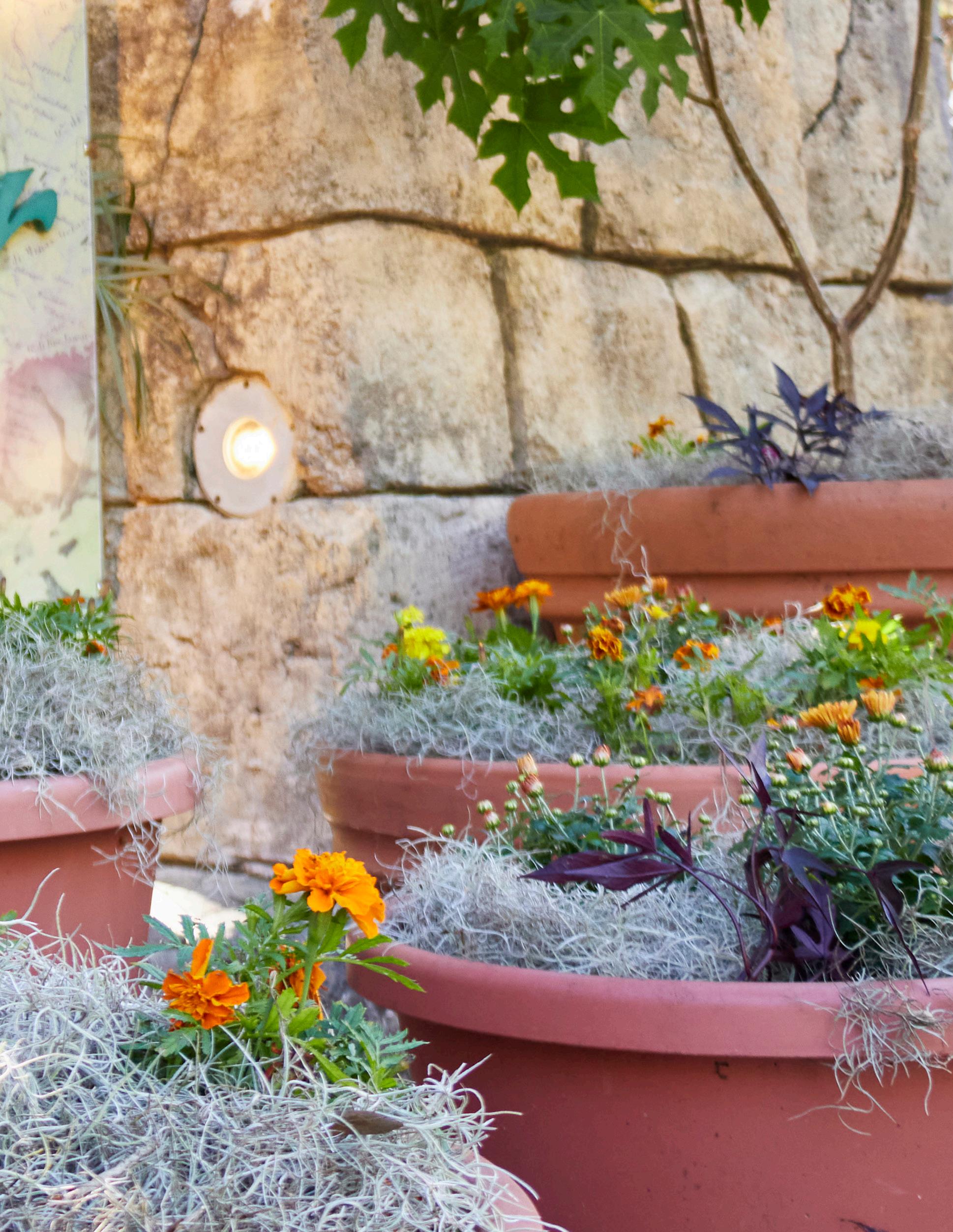
By Avery Cadell, Horticulture Technician 2
As the Zoo prepares for the autumn season, Events and Horticulture are excited to unveil a new theme for this year’s Spooktacular in Range of the Jaguar. To coincide with Latin American Heritage Month and the Mexican holiday, Día de los Muertos, we'll be highlighting three cherished fall traditions shared by Mexico and Florida: the migration of monarch butterflies, the vibrant blooms of marigolds and mums and the cultural richness of these celebrations.
To bring the monarch migration to life, these iconic butterflies will be projected in Range of the Jaguar. This stunning display will simulate the thousands of monarchs that journey to a small area in Mexico during their overwintering period. There, they completely cover the evergreen pine trees in an orange, fall color. This incredible journey is taken by the eastern population of monarchs, where the butterflies travel from as far north as Canada all the way to a mountain village aptly named Mariposa, Mexico. Throughout their journey, they are seen by many,
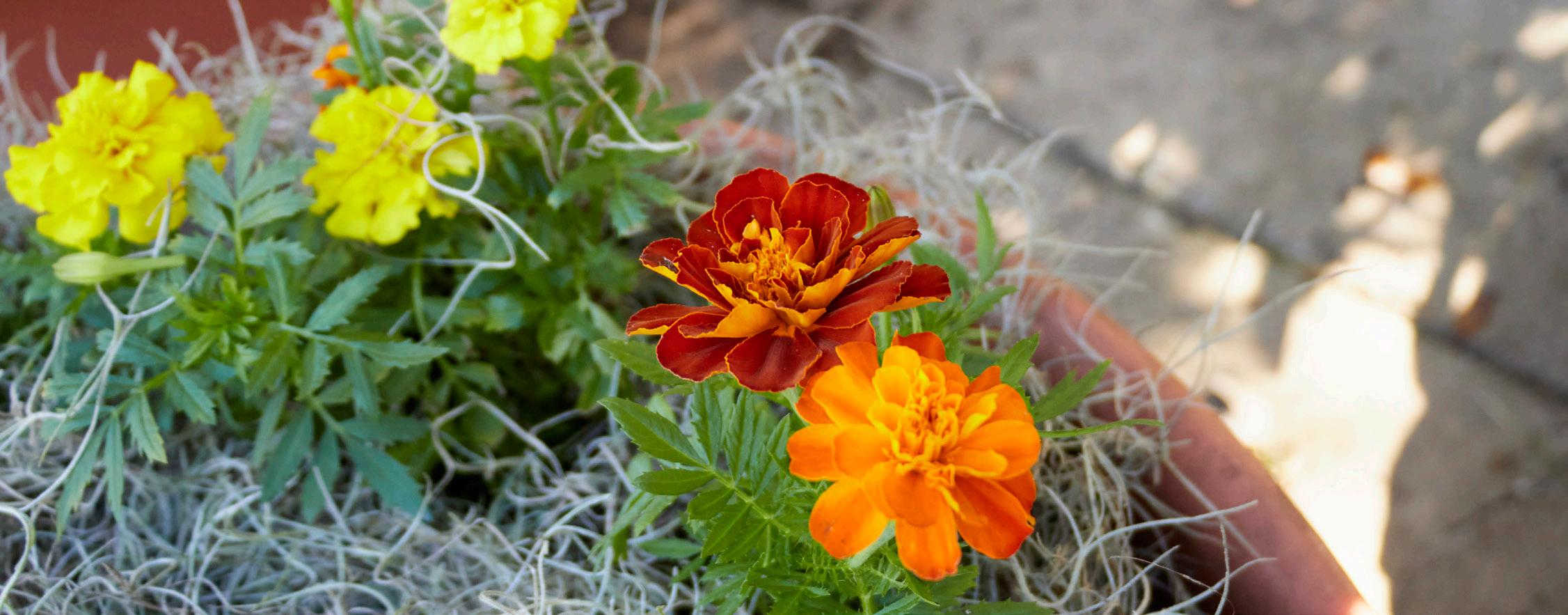
connecting several different countries. Their presence has not only stimulated the economy of the small town but also holds significant cultural importance, as many believe that butterflies represent the souls of the deceased. Unfortunately, this population of monarchs faces steep declines due to the loss of breeding habitat and pesticide overuse. However, an international effort has mobilized to plant milkweed for their caterpillars and to reduce pesticides. At Jacksonville Zoo and Gardens, live monarchs may also be seen thanks to our own pollinator-friendly practices, such as Integrated Pest Management and planting of milkweeds.
In addition to the vibrant projections and native fauna, fall colors will also be showcased through various flowers, including the marigold, which is native to Mexico. This colorful flower belongs to the Tagetes genus, which encompasses many different species, similar to how all big cats are members of the genus Panthera. The most prevalent pompom-like marigolds are Tagetes erecta and Tagetes patula. Despite their origin, they have been widely adopted around the world and are respectively known as African marigold and French marigold. They are known for being edible and for having a quick growth from seed, making them a common introductory plant to gardening. While often seen as just a pop of seasonal color, marigolds are still used today in Mexican cuisine as herbs, like Mexican tarragon and Huacatay. Beyond their culinary uses, marigolds hold significant cultural and symbolic importance. In ancient Aztec art, they adorned goddess headdresses, and today they remain the most common altar flower during Día de los Muertos. Marigolds are even used medicinally due to their prominent levels of antioxidants. To this day, they still thrive in their pine-oak forest habitat, resisting peccaries and deer while providing a source of nectar for pollinators.
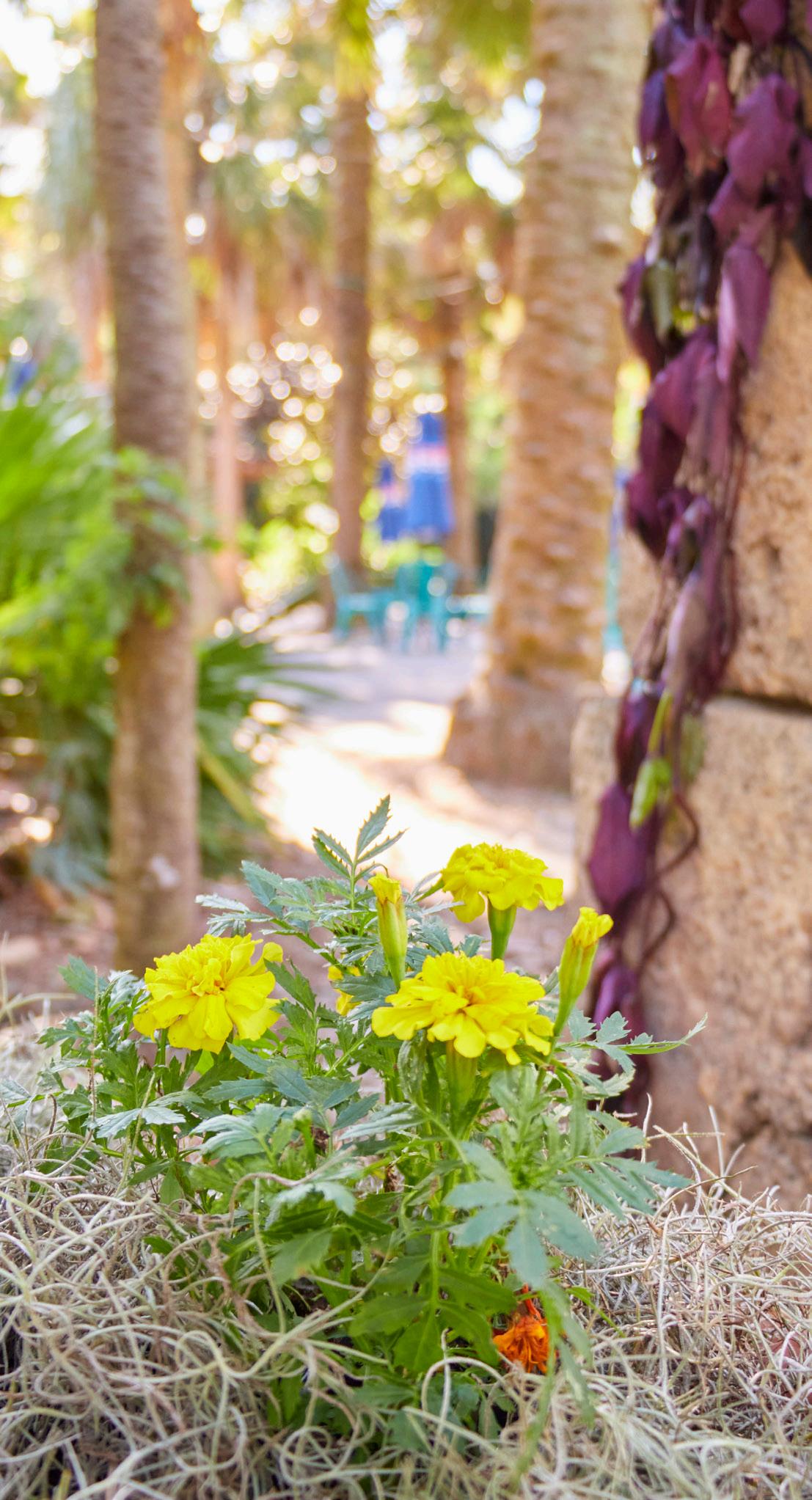
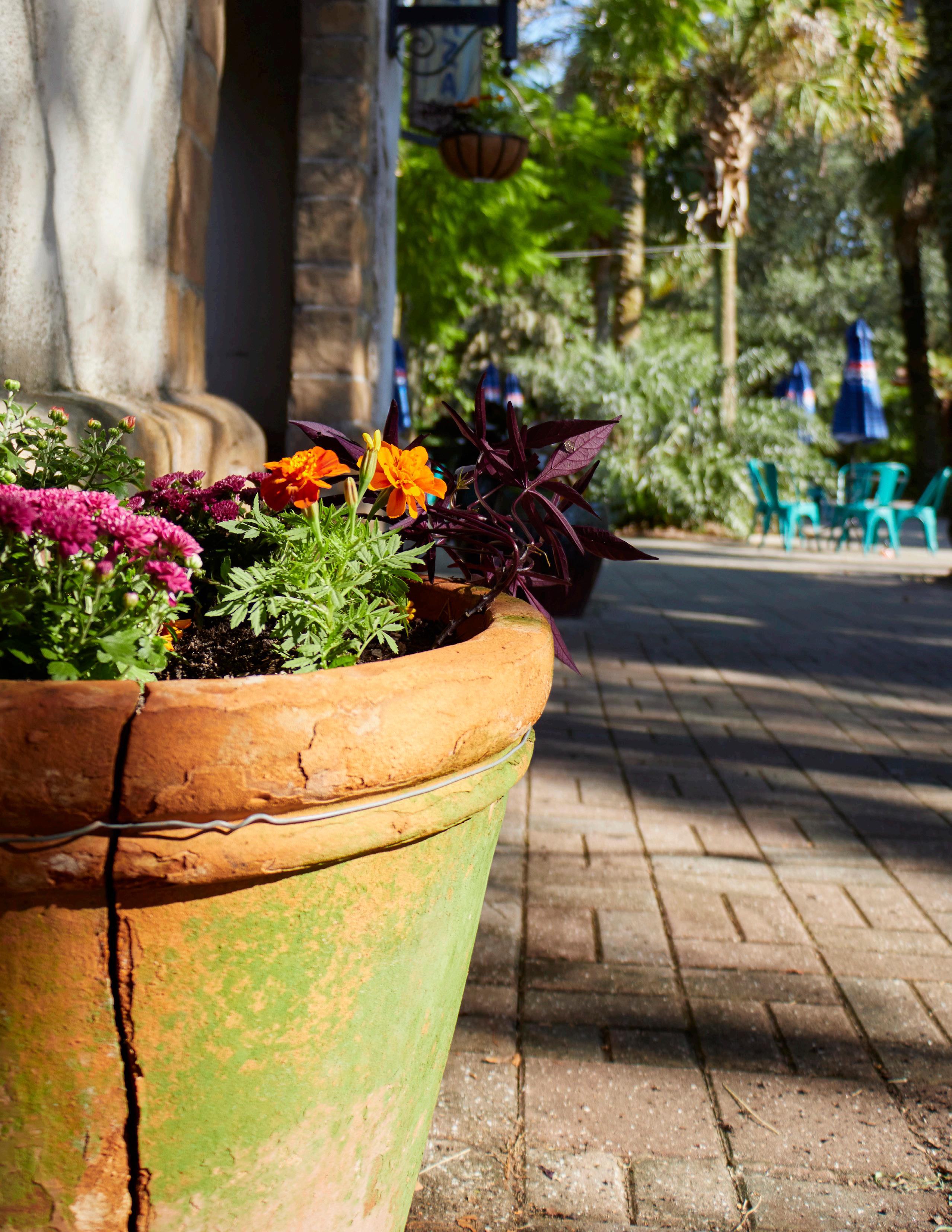
Another prominent flower that will be featured in this year’s event is mums, short for Chrysanthemum. As a member of the daisy family, mums are closely related to marigolds and sunflowers. Mums have been cultivated for a very long time, dating back at least 16,000 years starting in ancient China. In traditional Chinese art, there were four plant motifs that corresponded with the seasons, known as the “Four Gentlemen,” with the chrysanthemum representing fall, just as it does today in the West. They have also been adopted by Mexicans as part of the Día de los Muertos festival, and in Europe, some varieties are associated with honoring the dead, such as during Poland's All Souls' Day. While certain species of mums are used in tea blends and as vegetables, the common modern hybrids are not edible. However, they are perennial plants and can be planted permanently in the garden. It is recommended to remove old flowers to stimulate rebloom and they may benefit from afternoon shade during Florida summers.
Together, Range of the Jaguar’s Spooktacular theming of monarchs, marigolds and mums highlights the beautiful colors of nature and celebrates the changing of seasons. From the spread of garden flowers to the international efforts to protect the monarch, these elements also underscore our interconnectedness in the modern world and the importance of collaboration.
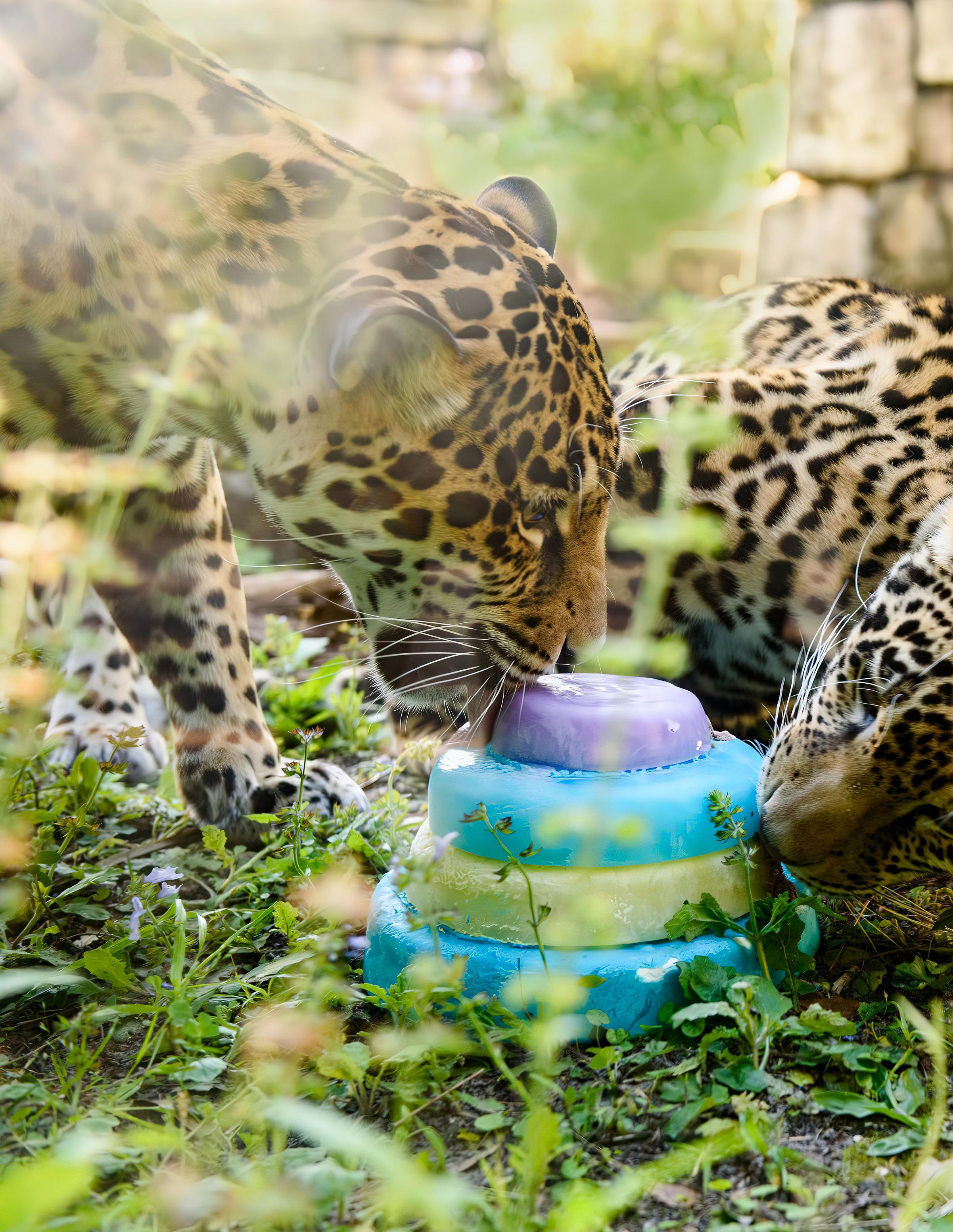
By Kamille Cooper, Philanthropy Events Officer

Philanthropy has always been at the core of our mission to connect our communities to wildlife and wild places. Events like Toast to Conservation exemplify our commitment to critical efforts of protecting threatened animals, plants and ecosystems worldwide. This signature event not only celebrates our dedication to wildlife conservation but also highlights the vital role our community plays in supporting these initiatives.
Since 2017, we have proudly donated over $1.25 million to both local and global organizations through this event and others like it. These funds are essential for saving incredible and irreplaceable species across the globe. By attending and contributing to our philanthropy-focused events, guests actively participate in the preservation of biodiversity, helping to ensure that future generations can experience the wonders of the natural world.
Toast to Conservation is just one example of the many philanthropic events that drive our mission forward. ExZOOberation, our spring fundraiser, showcases specific initiatives, exhibits and community happenings in a fun and interactive way. This year’s theme, Down in ZOOOval, highlighted Jacksonville Zoo and Gardens' 110th anniversary. Guests enjoyed a stroll down “memory lane” with signage commemorating important events in Duval history and celebrated our jaguar, Banks’ first birthday.
We also host a variety of events in a smaller, exclusive environment that allows guests to connect directly with our partners in the field, learn about ongoing initiatives and discover new ways to contribute to the cause.
"Forge stronger connections to our natural world and inspire a new generation of conservationists."
By supporting these philanthropic events, you become part of a larger community committed to making a difference. Together, we can continue to protect the world’s most vulnerable species and ecosystems, forge stronger connections to our natural world and inspire a new generation of conservationists. Join us in raising a glass at Toast to Conservation this year on November 8, and at other upcoming events—because when we come together for conservation, we create a better world for all.
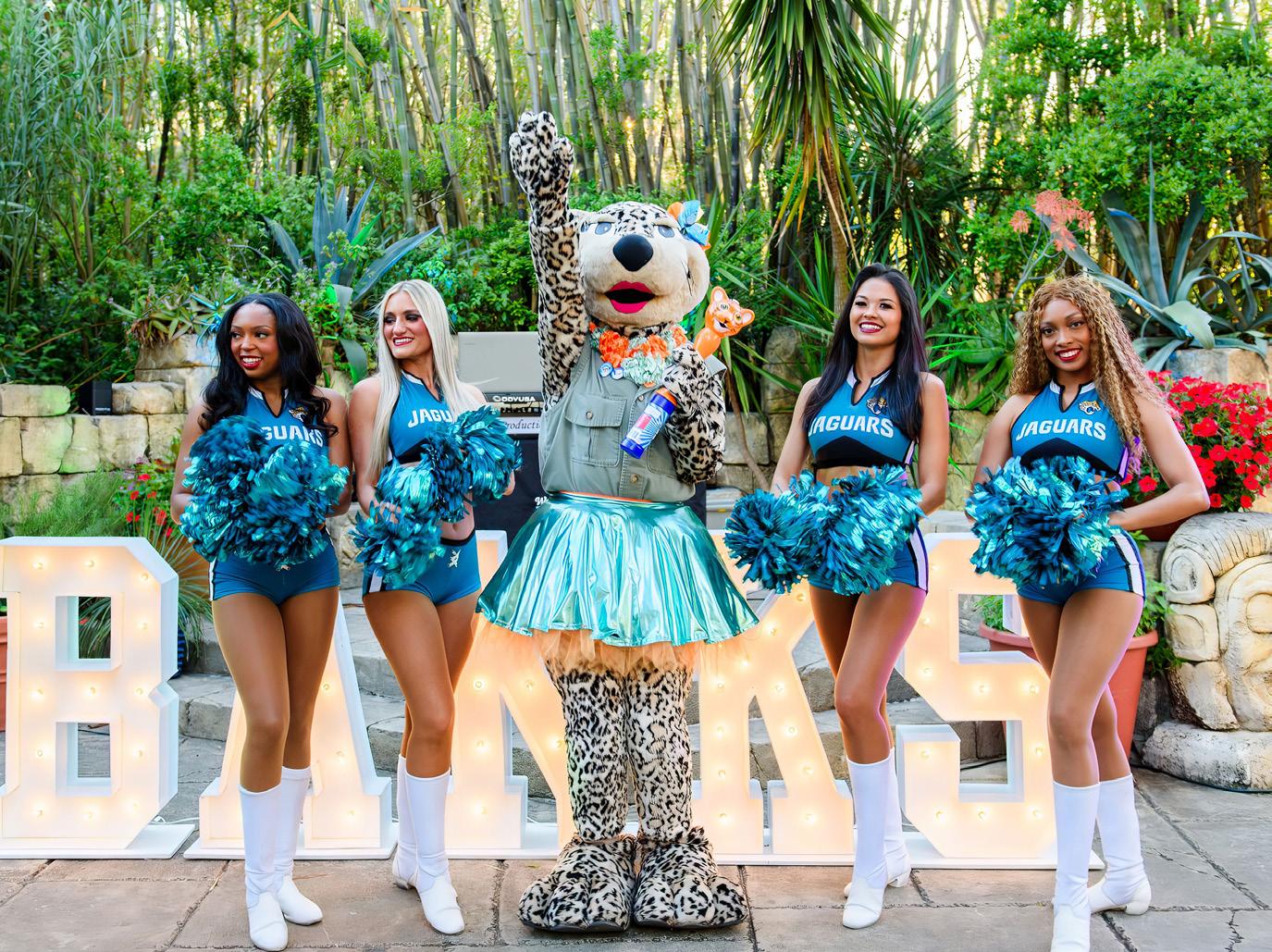
By Nikki Smith, Chief Philanthropy and Marketing Officer
At Jacksonville Zoo and Gardens, our commitment to excellence is reflected in our dedication to the highest standards of animal care, conservation and education. Achieving and maintaining accreditation by the Association of Zoos and Aquariums (AZA) is a key component of this commitment.
AZA accreditation is the gold standard in the zoo and aquarium industry, signifying that we meet or exceed rigorous standards in areas such as animal welfare, veterinary care, conservation efforts and visitor experience. It’s not just about ensuring that our animals are healthy and well cared for but also about demonstrating our role as leaders in wildlife conservation and education.
This accreditation process also ensures that our animals are thriving in environments that closely replicate their natural habitats, where they receive the highest quality care and enrichment. Our animals’ well-being is our top priority, and the AZA’s comprehensive standards help us to
provide the ideal conditions for them to flourish.
Every five years, the AZA accreditation process requires us to undergo a thorough review that evaluates all aspects of our operations. This includes a detailed application process, a multi-day on-site inspection by a team of experts and ongoing assessments to ensure we continuously meet these high standards. It’s a challenging process, but one we embrace because it ensures we are providing the best possible environment for our animals and the most enriching experiences for our visitors.
For our members and supporters, AZA accreditation is a reassurance that Jacksonville Zoo and Gardens is committed to the well-being of our animals, the quality of our programs and the impact we have on global conservation efforts. It’s a reflection of our ongoing dedication to making a difference, not only within our Zoo but also in the broader context of wildlife conservation and education.
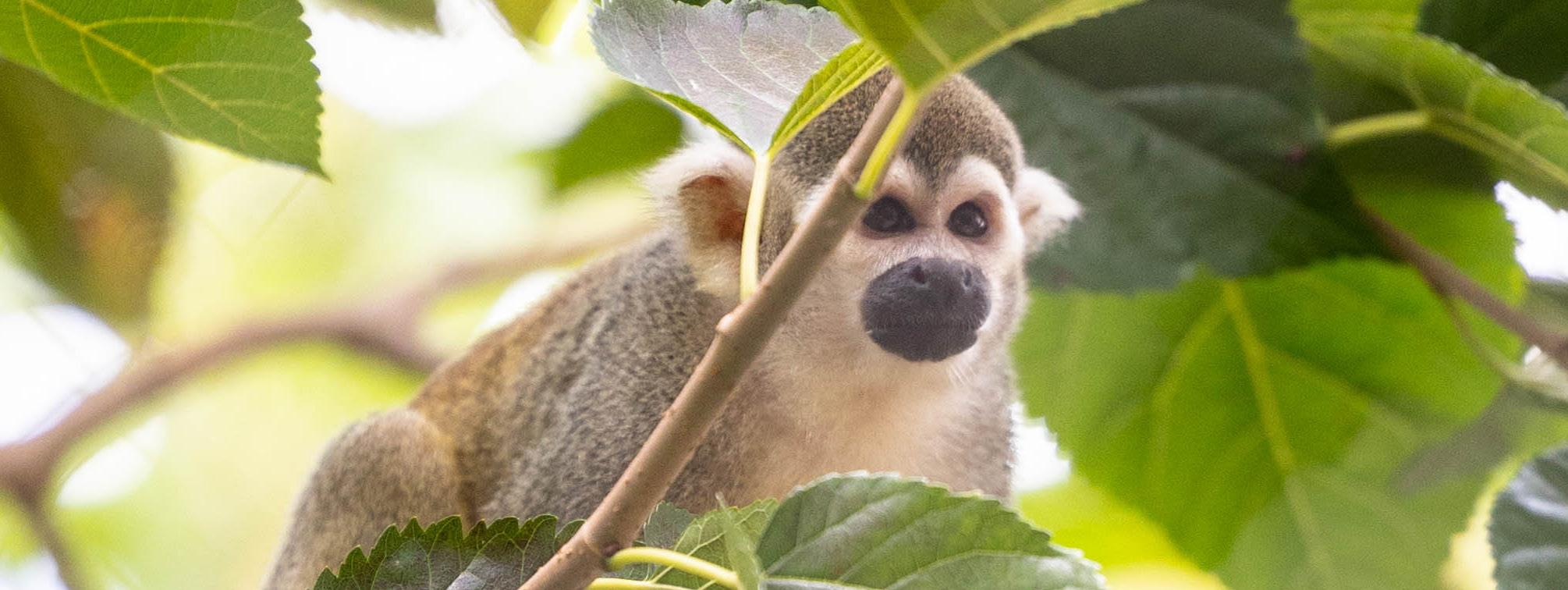
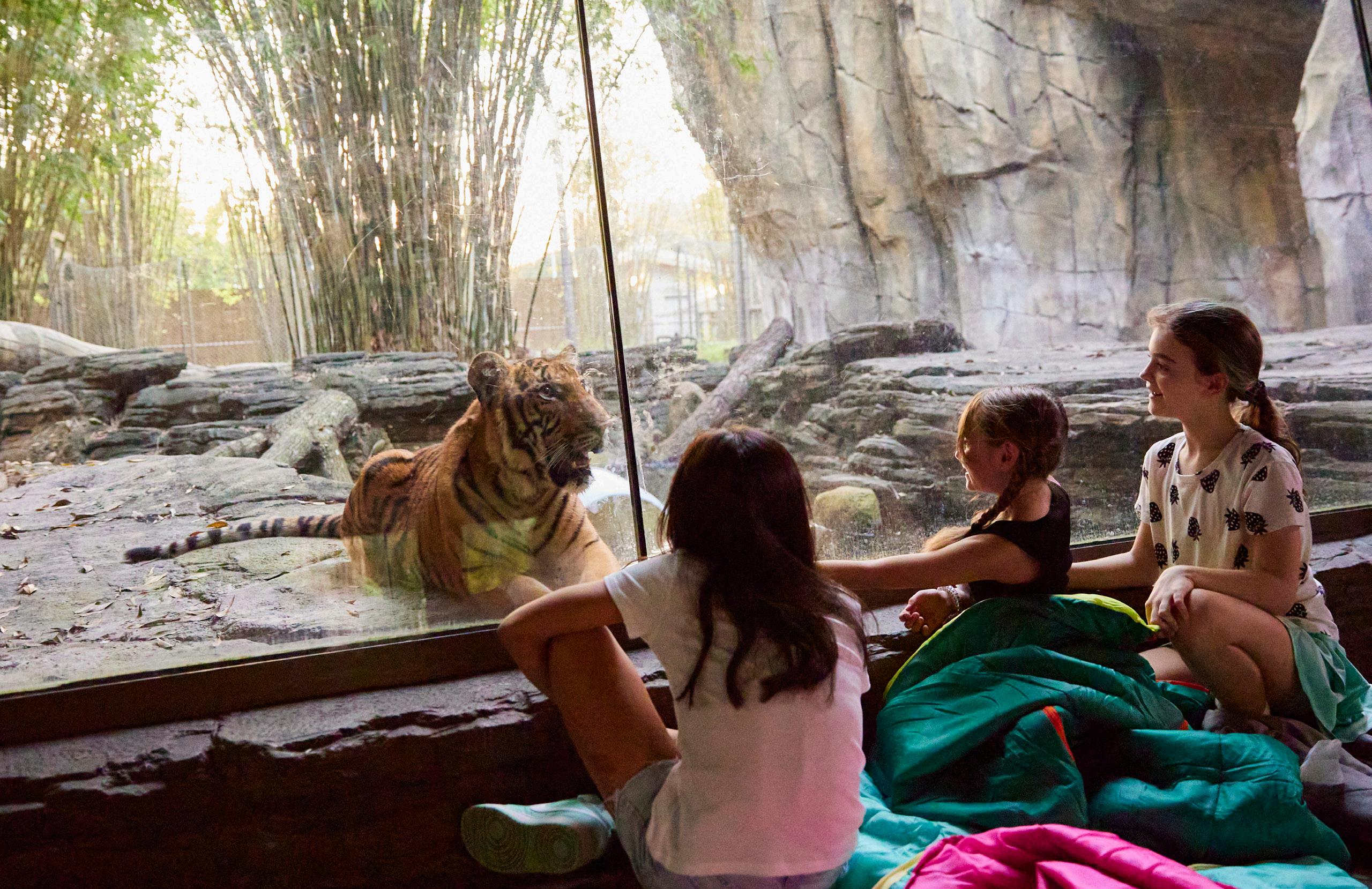
Maintaining these high standards requires significant resources, and we rely on the generosity of donors like you to continue our work. Your support directly impacts our ability to provide top-notch care for our animals, advance critical conservation initiatives and offer educational programs that inspire future generations.
By making a donation, you help ensure that Jacksonville Zoo and Gardens remains a leader in the zoo and aquarium community, meeting the rigorous standards of AZA accreditation and making a lasting difference in the world of wildlife conservation. Whether it’s a one-time gift or ongoing support, every contribution counts.
We invite you to join us in our mission by making a donation today. Together, we can continue to uphold the excellence that AZA accreditation represents and make a lasting impact on the future of wildlife. To learn more, please contact us at philanthropy@jacksonvillezoo.com.
Thank you for your continued support!
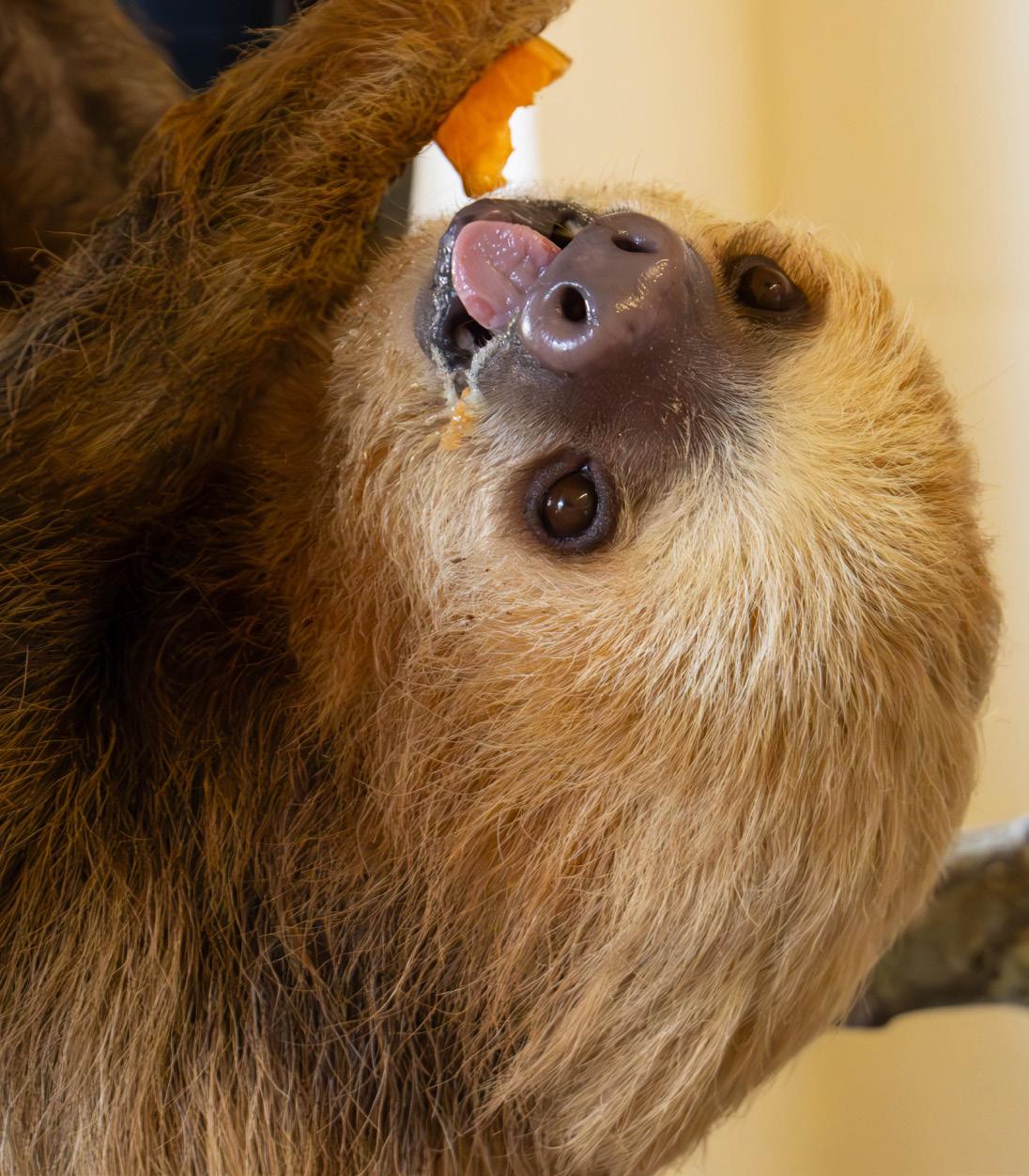
American alligators Cipowitz and Patty are enjoying a temporary staycation at Range of the Jaguar while their habitat at Wild Florida undergoes renovations.
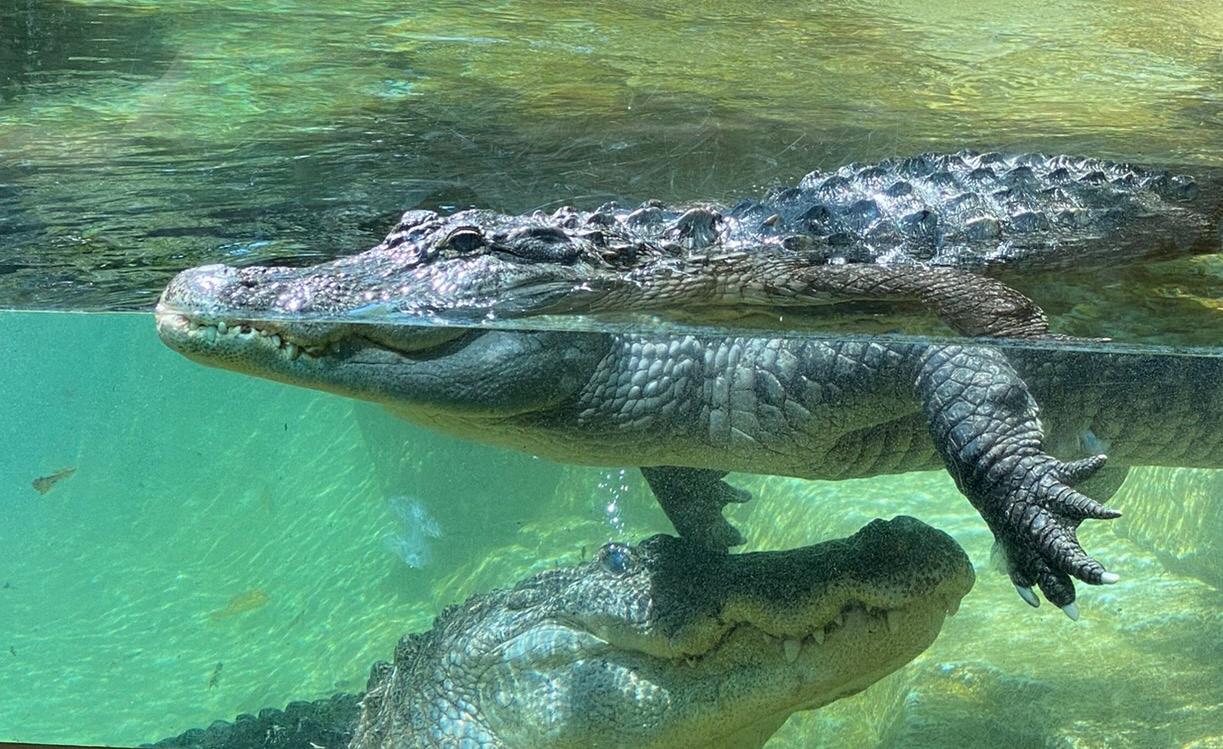

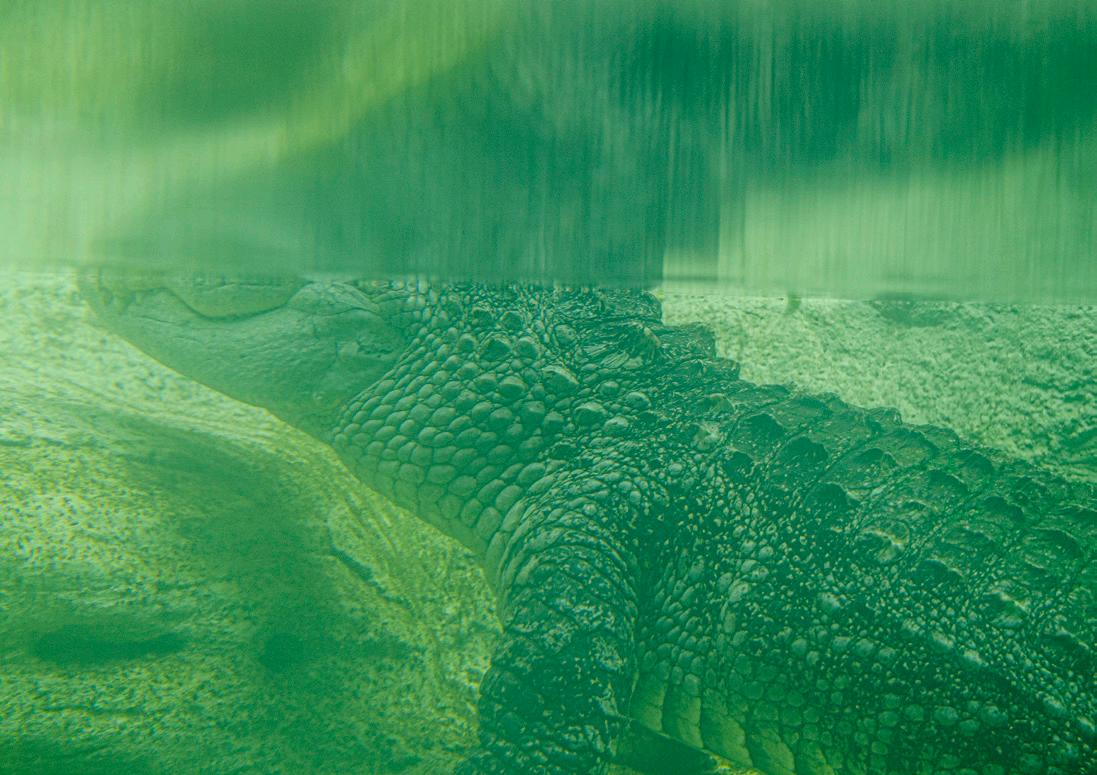
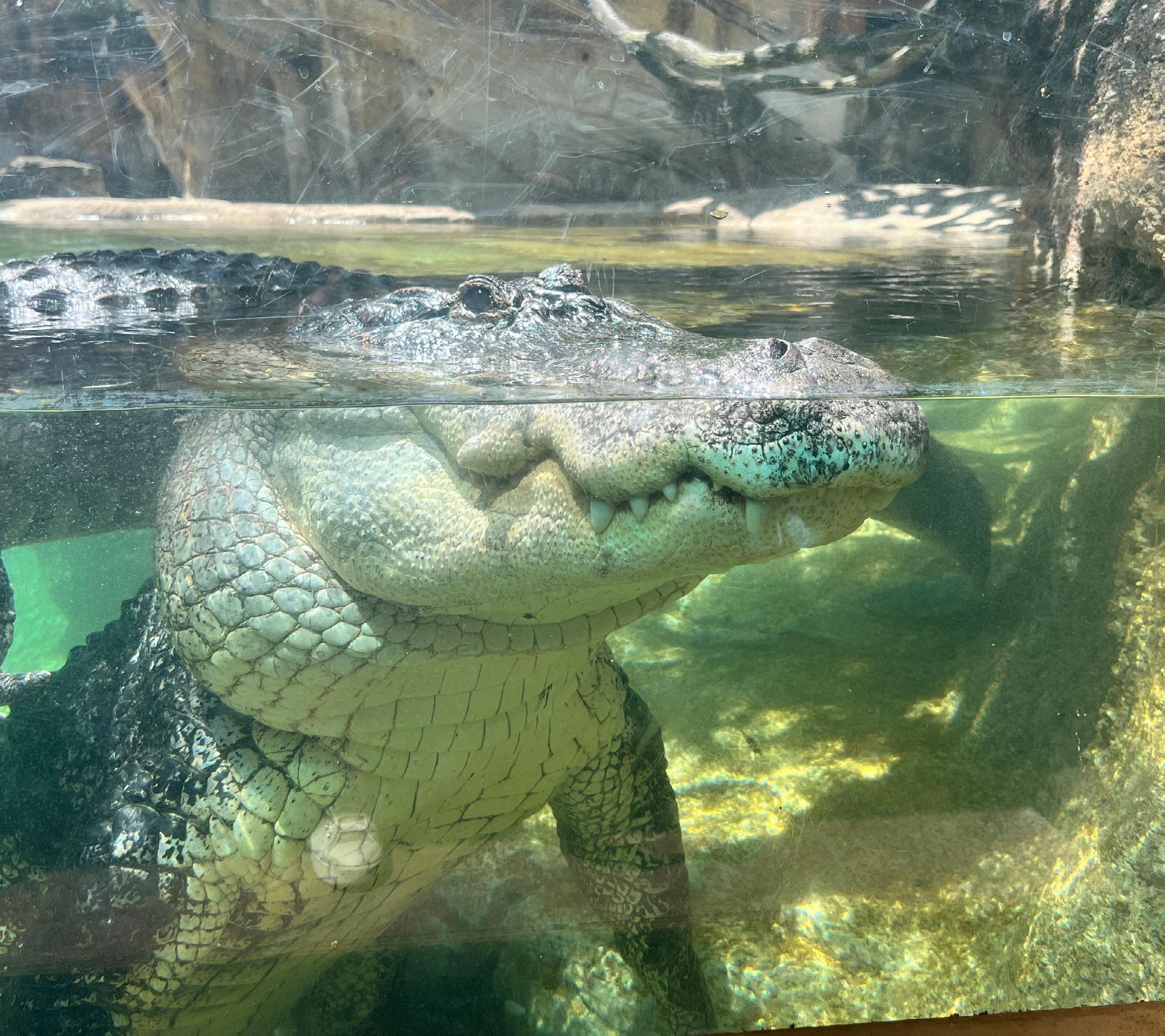


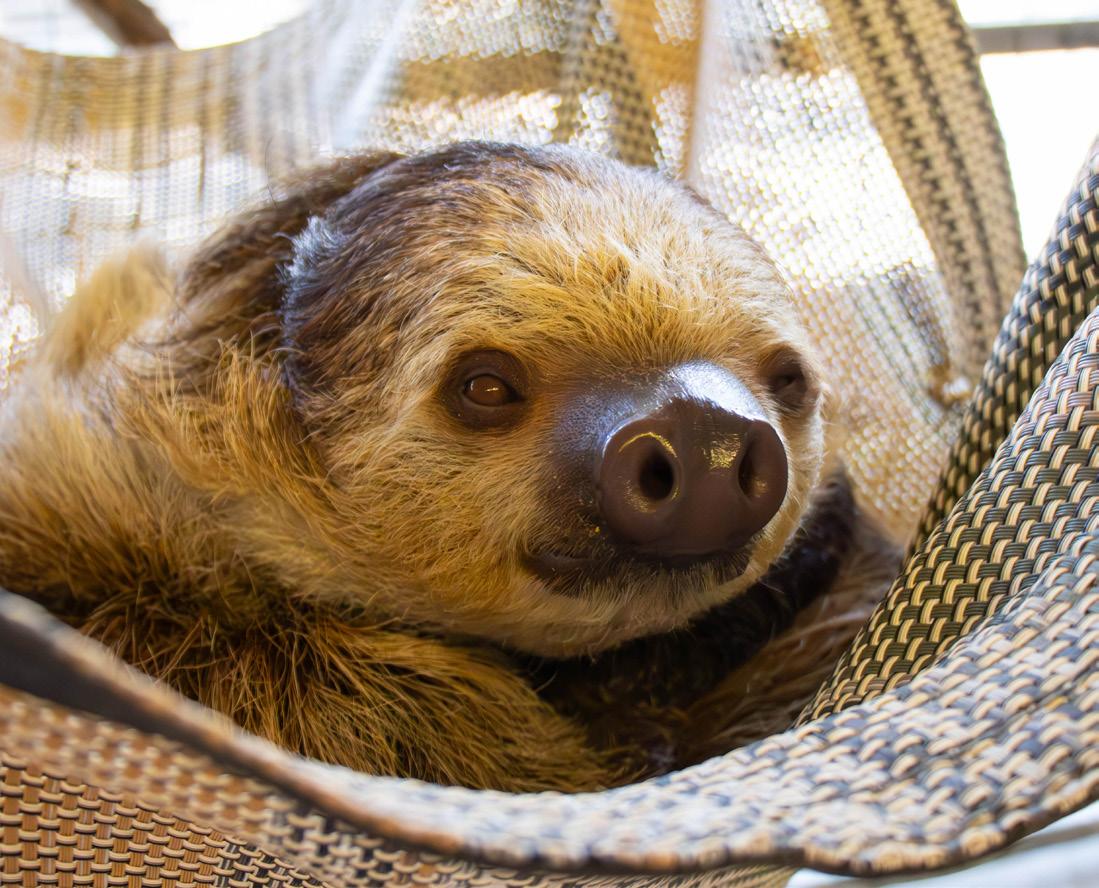
Gardens
sloths, Chata and Baby Ruth. Follow one of our Interpretive Specialists behind the scenes for an exclusive sloth meet and greet while their amazing new habitat is being constructed. A Sloth Care Specialist will introduce you to this charismatic animal which can only be seen on this behind-the-scenes experience.
Additionally, the Zoo is currently offering a limited edition sloth adoption. When you symbolically adopt an animal from Jacksonville Zoo and Gardens, you become an Honorary Zoo Keeper whose donation provides much-needed funding to support the care of our animals. In return for your generous support, you’ll receive a personalized Honorary Zoo Keeper certificate, a color photo, facts about your animal, a plush animal and more.
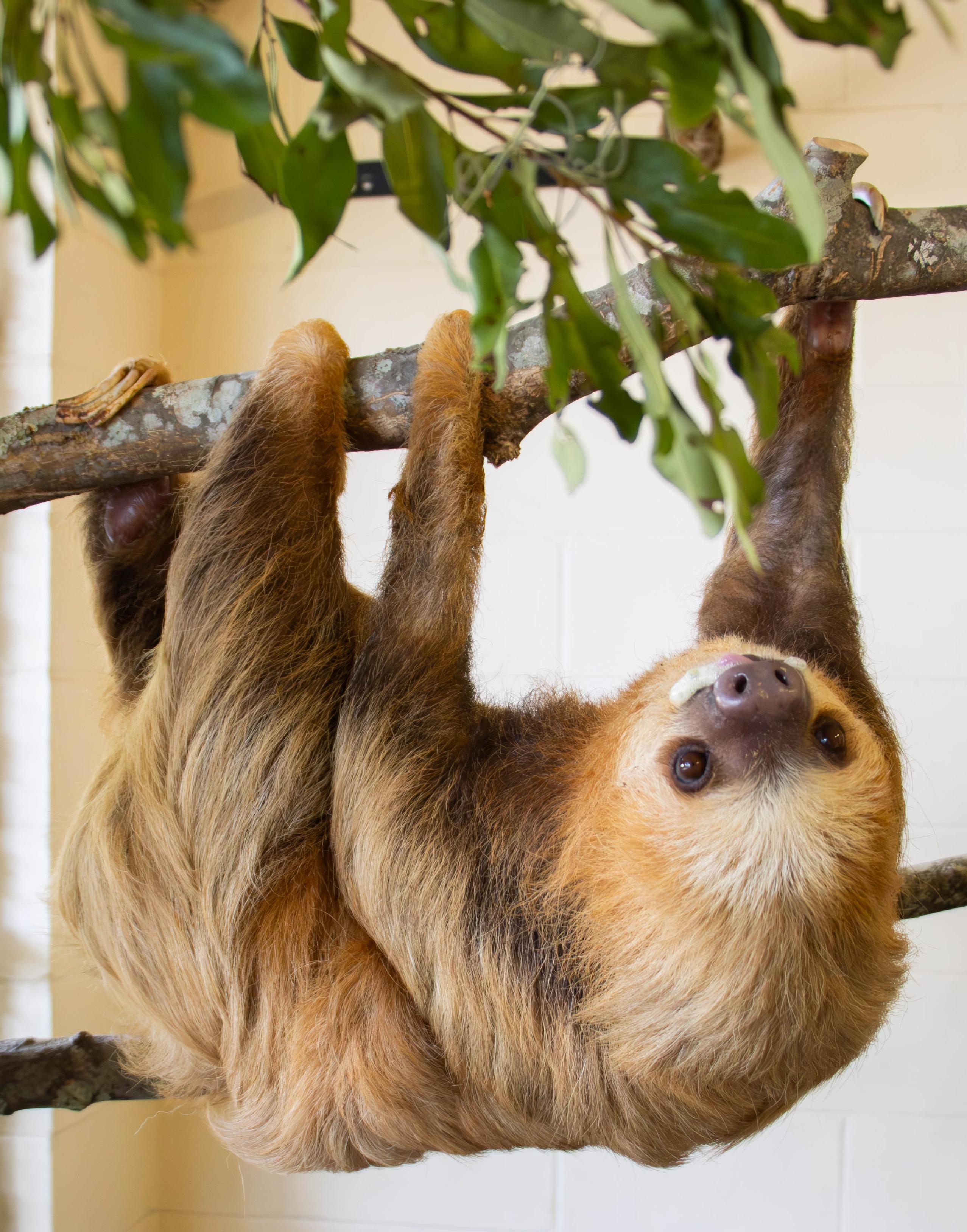
Book a sloth encounter today. Adopt a sloth now.
By Shannon McNeil, Conservation Program Officer
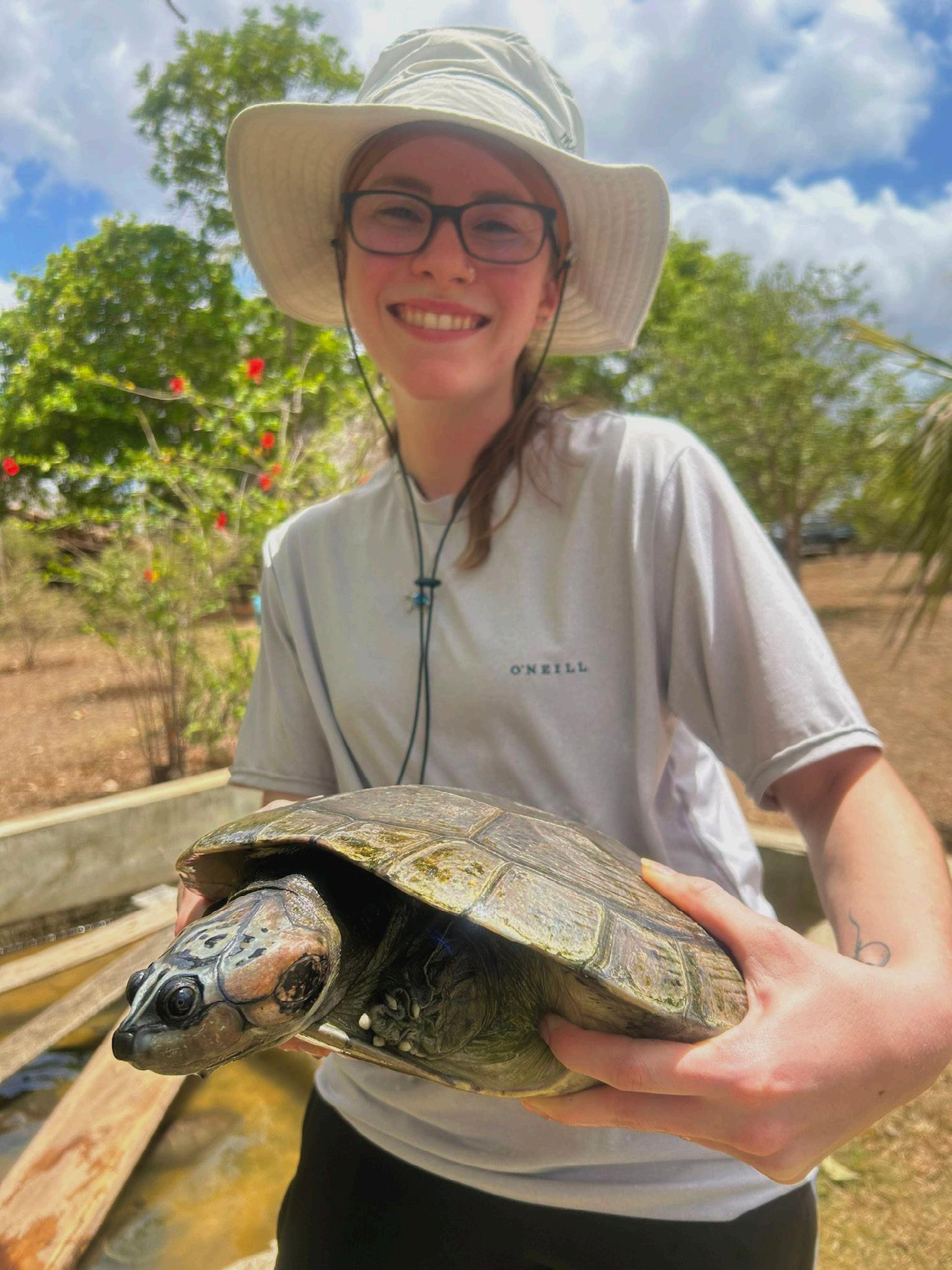
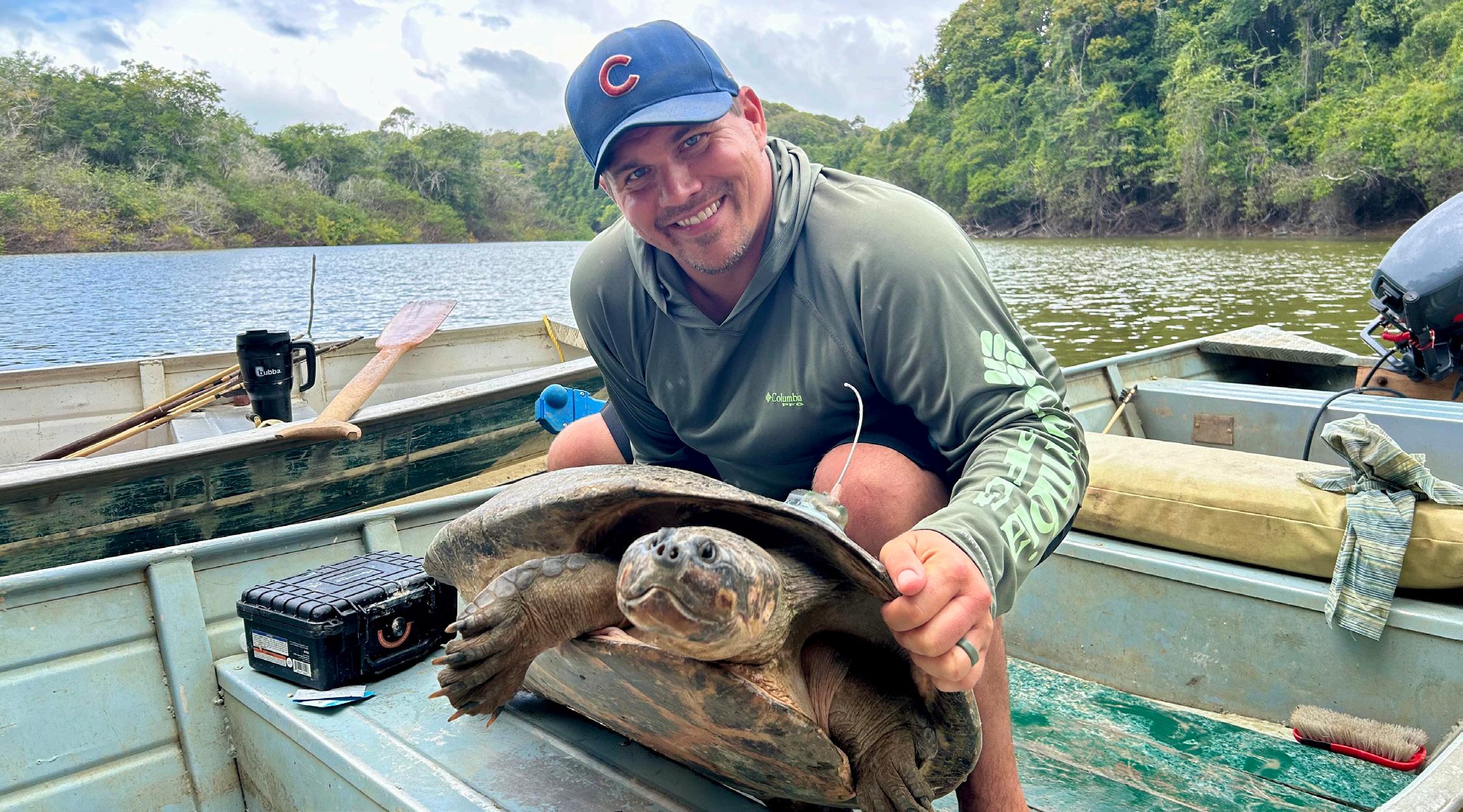
In March 2024, Jacksonville Zoo and Gardens partnered with the University of Florida for a collaborative conservation mission in Guyana.
Led by Dr. Matt Hallett from the Zoo, the team focused on exploring the Essequibo River and investigating its potential as a nesting site for the South American giant river turtle, or Arrau turtle (Podocnemis expansa).
This mission supported ongoing conservation efforts, led by the University of Florida, which initiated and continues to oversee key projects in the region. The primary goal was to assess whether the expansive sandbanks of the Essequibo River serve as significant nesting sites for Arrau turtles, as indicated by local reports. The team observed distinctive craters and drag marks on the sand, which could suggest important nesting activity.
The collaboration also aimed to expand the existing tagging program, initiated by the University of Florida. Earlier in the year, eight Arrau turtles were tagged in the Rupununi River, with future plans to increase this number by 2025. The Zoo's involvement included exploring the feasibility of applying the tagging program to the Essequibo River to gain insights into potential interactions between different nesting populations.
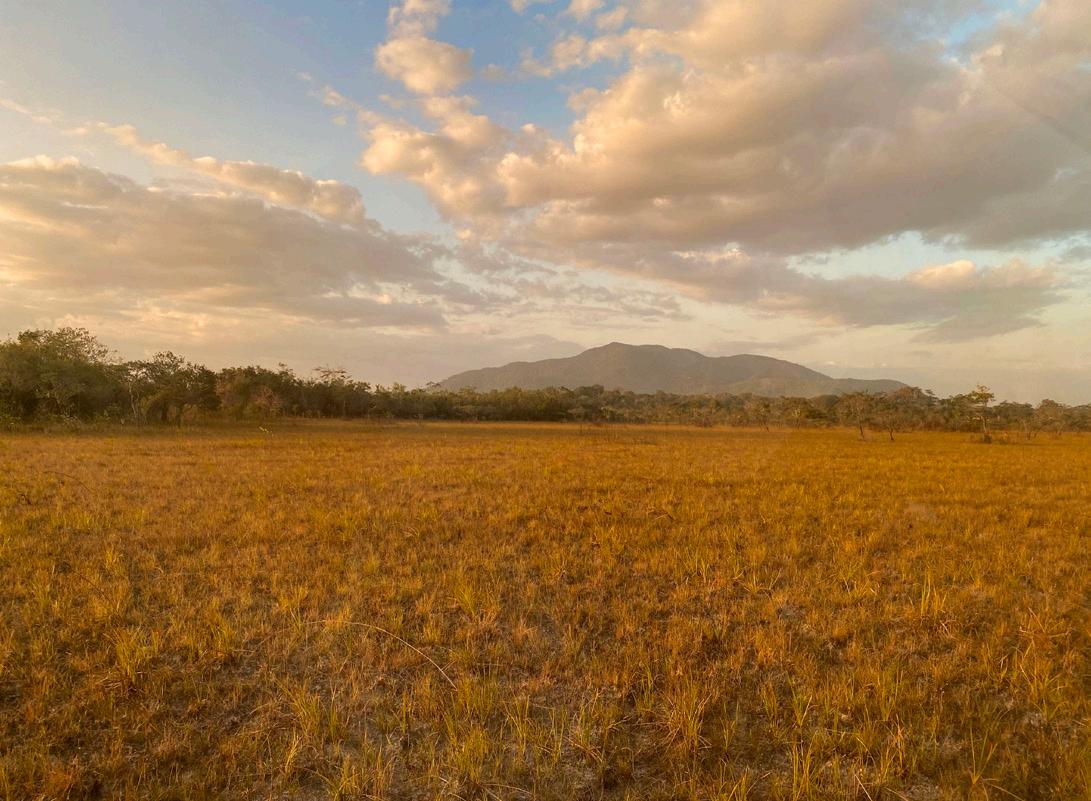
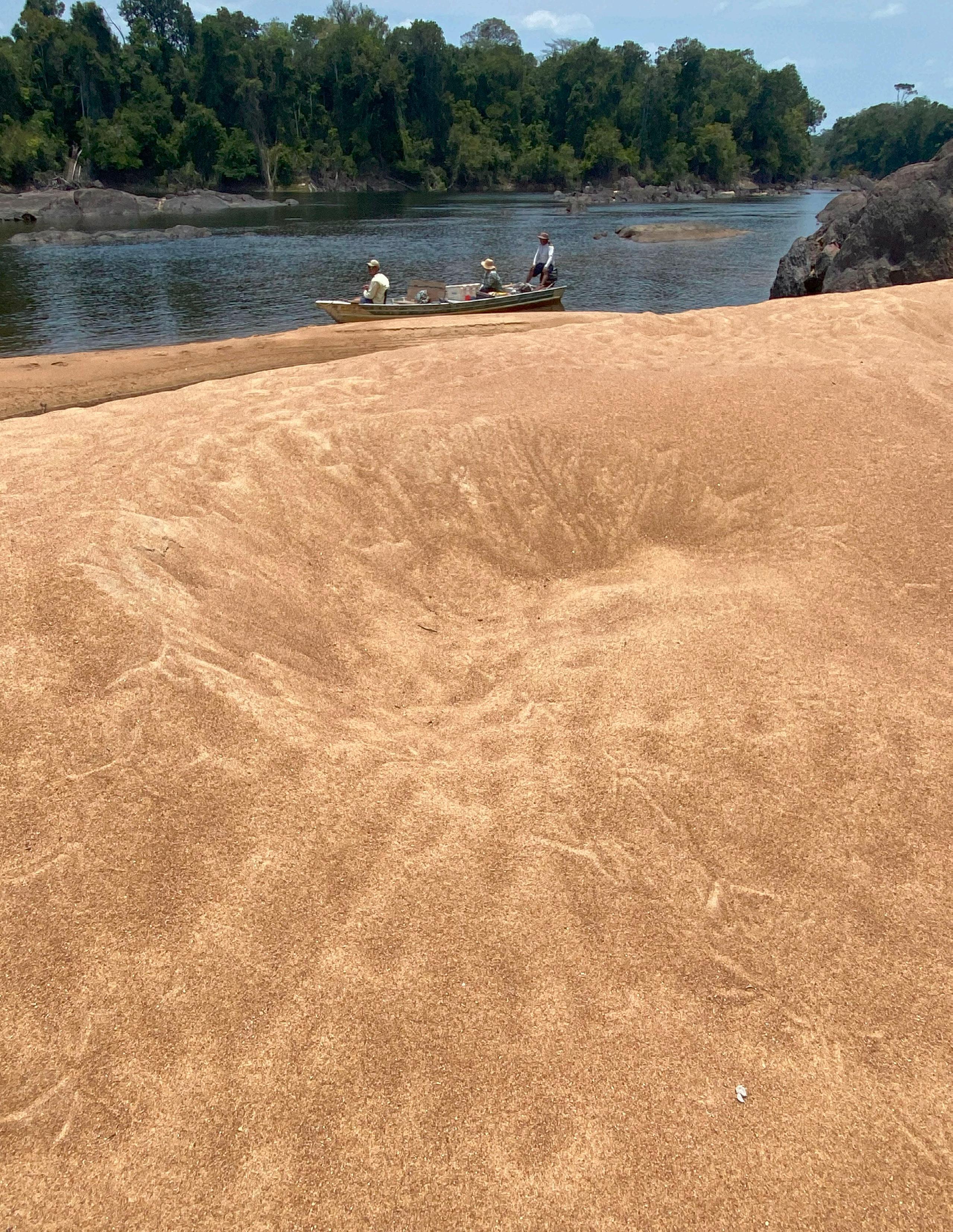
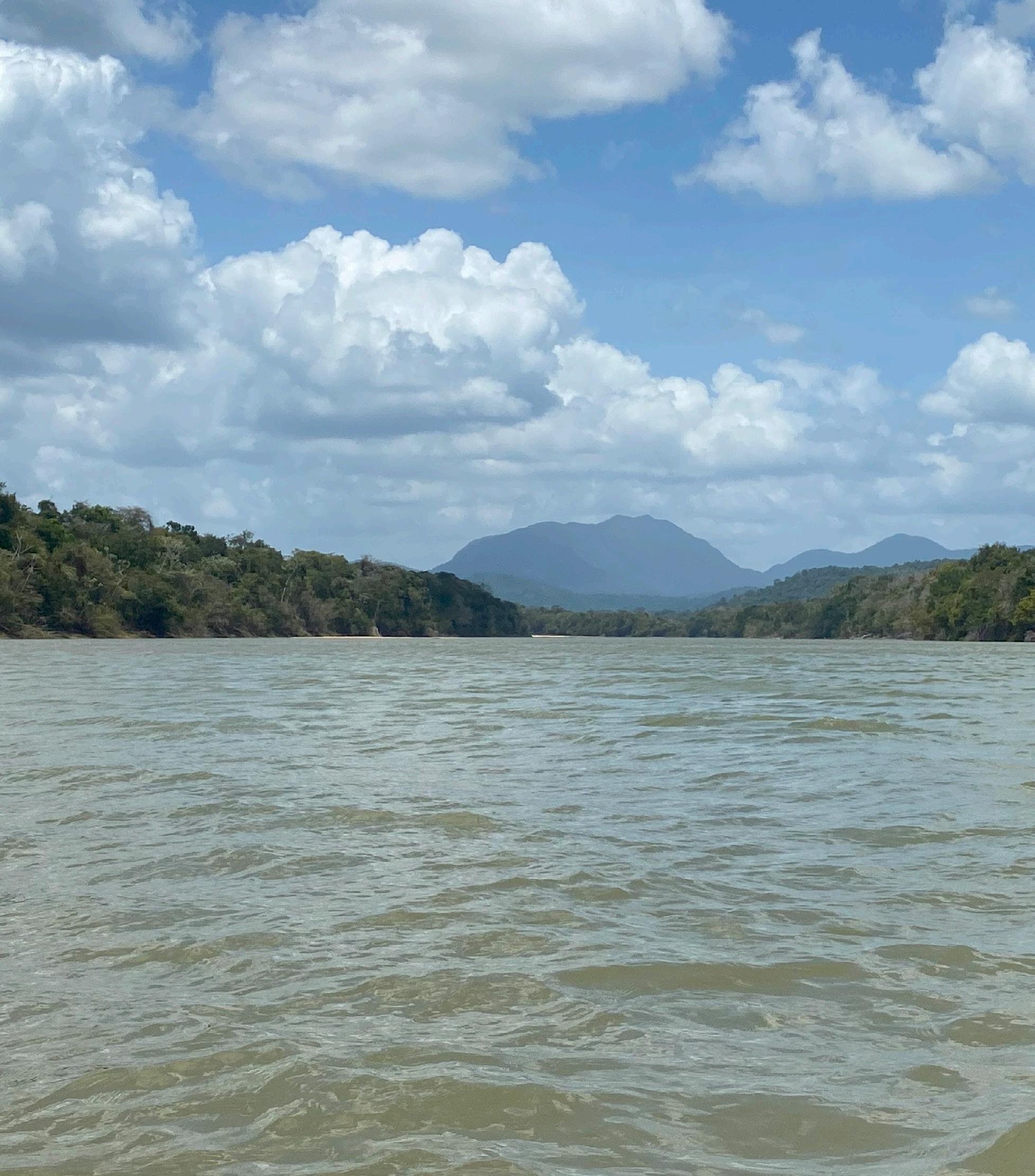
During their expedition, the team identified five potential camp sites and four areas where turtles might gather. They also assessed shallow pools near the river for easier turtle retrieval and study. These efforts are integral to planning the next phase of the conservation work, ensuring effective fieldwork and improved safety in this remote region.
The collaborative work between Jacksonville Zoo and Gardens and the University of Florida underscores a shared commitment to advancing conservation efforts and understanding the Arrau turtle’s habitat. By supporting the University of Florida’s ongoing initiatives, the Zoo contributes to essential efforts aimed at protecting endangered species and enhancing conservation strategies.
As a 501 (c)(3) nonprofit organization, a portion of ticket and membership sales goes directly to the care and feeding of our animals and the protection of animals and plants around the world. Therefore, you are also contributing to these efforts!
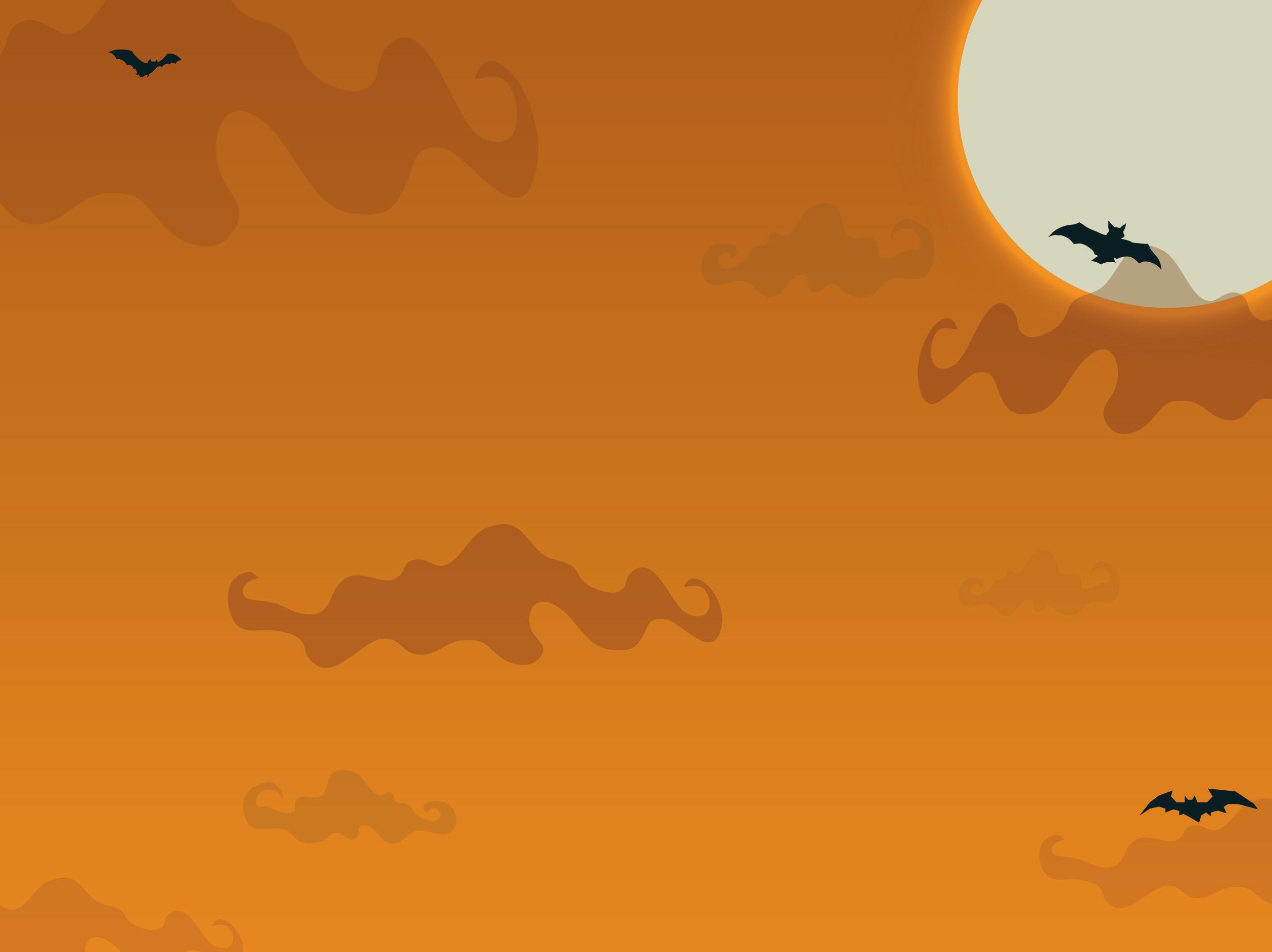

October 29 and 30
Ages 0 to 3
Boo! Spooktacular can sure be frightening. Join us for a toddler friendly Stroller Safari: Spooktacular. This family event will avoid the scary side of the Zoo's Halloween event while still getting all the sweet treats. Our private event will include a personal tour of the Zoo, story time, encounter with one of our ambassador animals and a gift for your little one. Grab your costumes and your stroller for a fun-filled not so spooky night.
October 26
Ages K through 5th
Creep on down to Jacksonville Zoo and Gardens for some spooky camp fun. For one day only, enjoy fall crafts and fun outdoor play with our Spooktacular Zoo Camp. Campers will spend the morning expolring the Zoo with one of our education staff, and after lunch campers will spend the afternoon meeting Ambassador Animals, playing camp games, doing fall arts and crafts and particpating in a variety of fun educational themed activities outside in nature. All Zoo Camps include behind-thescenes encounters and up-close experiences with some of our amazing animals.
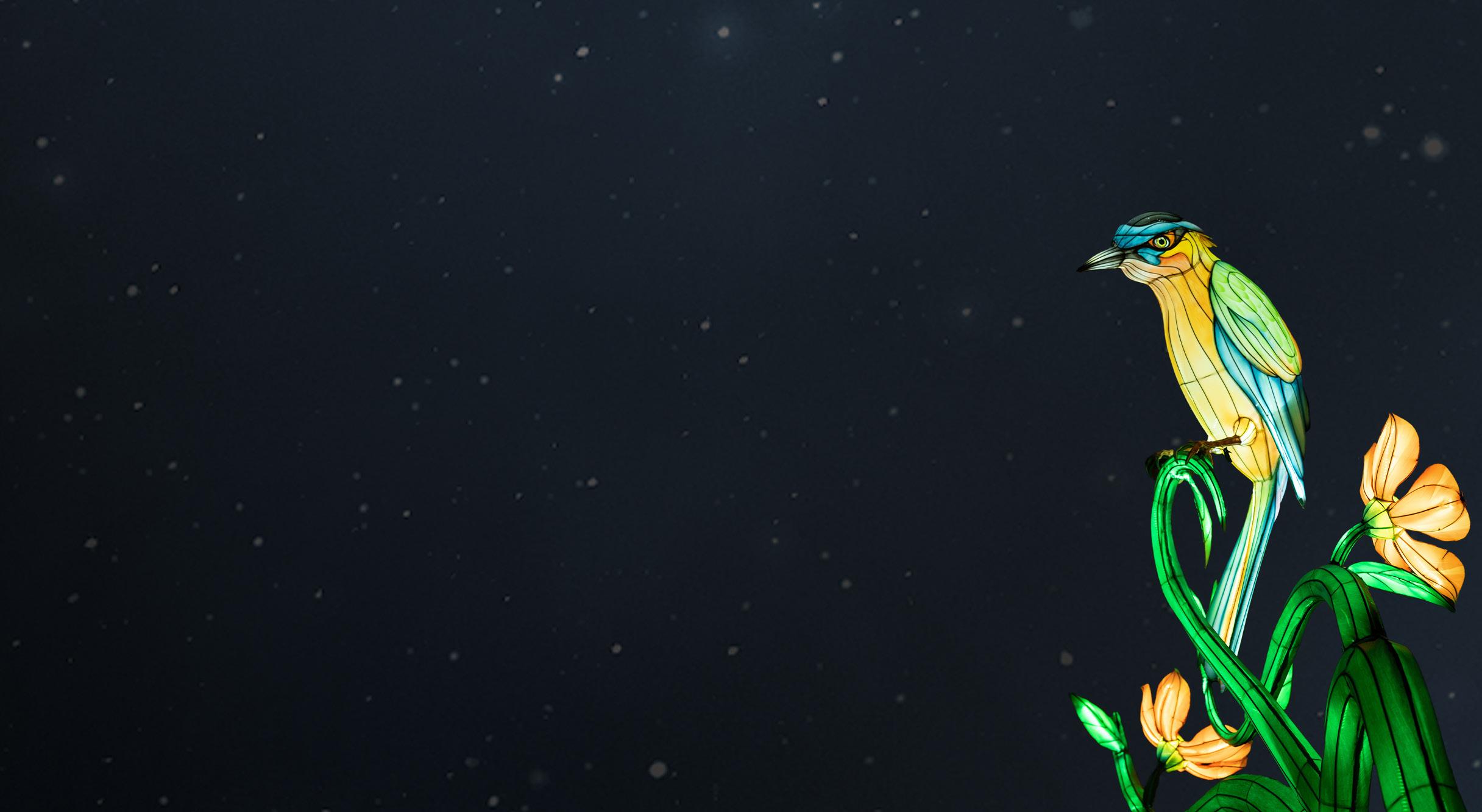
December 18
Ages 0 to 3
Come celebrate the holidays with us at Stroller Safari: Colors of the Wild ,A ZooLights Lantern Experience. Families will enjoy a guided stroll through the breathtaking lights of Colors of the Wild, meet an animal ambassador and receive a surprise gift to take home. This is a wonderful, relaxing evening for the entire family.
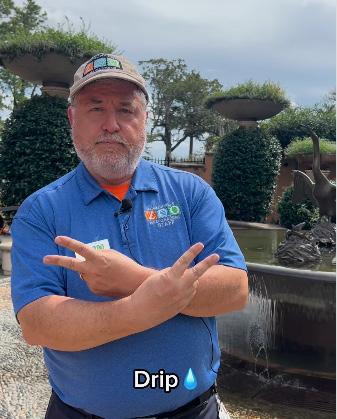
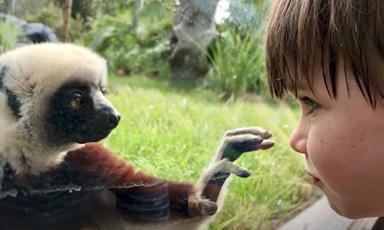
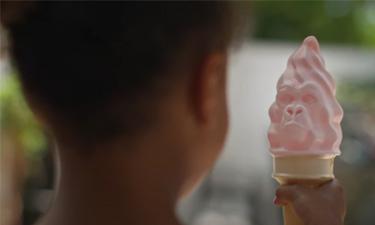

Todd Passed the Vibe Check (Instagram)
Our Education Programs Need You
Adventure is Closer Than You Think
There's Only One Place Where You Can Really Go Wild
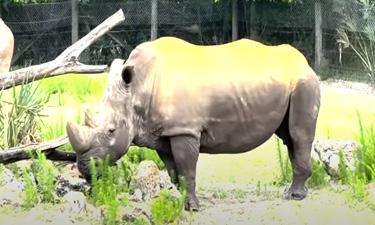
Oldest Southern White Rhino Needs Surgery
To see additional videos please visit our YouTube Channel
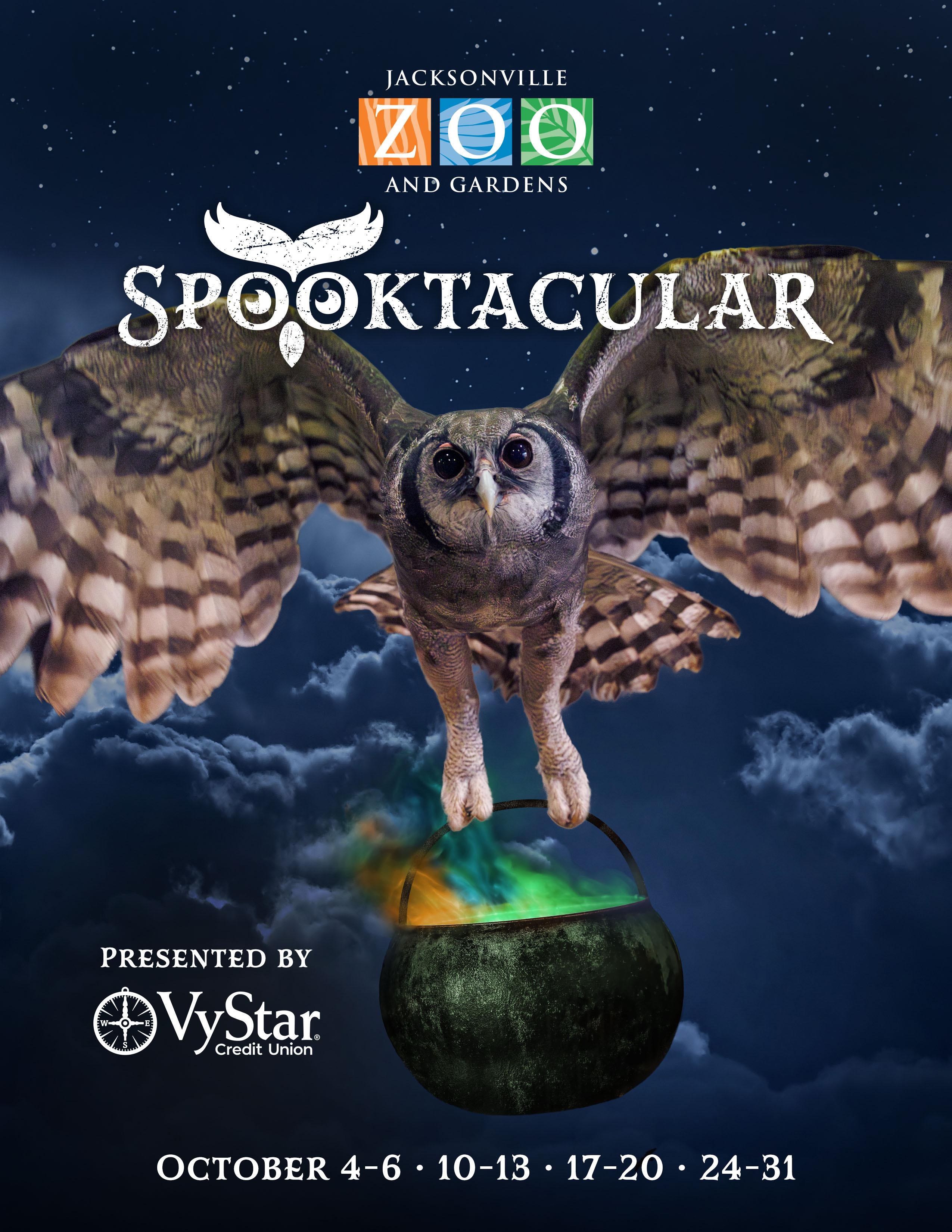
Interactive fun creates a curiosity for learning. As Nature Agents, you can discover, learn and bond together on a digital scavenger hunt using the NEW Explorer Quest app!


DOWNLOAD EXPLORER QUEST
APP MANUALLY OR SCAN
By Aimee McDonnell, Applied Animal Wellbeing and Research Officer
Every year during Halloween and the winter holiday season, Jacksonville Zoo and Gardens comes together to put on a spectacular display that extends the educational and recreational opportunities for our visitors after normal business hours. Not only does Spooktacular and Colors of the Wild help expand the fun opportunities that our visitors can experience, but it also helps to advance our mission of connecting our communities to wildlife and wild places after dark. Nighttime events have become a staple not only here, but at many AZA-accredited facilities in Florida and beyond. But because AZA institutions are mission-driven organizations that prioritize wildlife wellbeing, it raises an interesting question: how do the animals in our care feel about these events going on during “bedtime” hours?
After all, many of us have pets at home who experience stress during one-night events like fireworks or Halloween trick-or-treating. These disruptions can significantly affect their comfort levels. But how do animals in a zoo respond to events with music and lights that last several nights and even weeks? Research suggests that changes in routines and sensory environments may negatively influence animal behavior and wellbeing, and prolonged exposure to such factors can induce a state of chronic stress which can impact reproduction, immune status, growth and overall sensitivity to any potential stressful stimuli1,2. Many animal wellbeing experts across the AZA agree that sensory exposure for zoo animals during these nighttime events is similar to what they experience during daytime hours when the Zoo is open. However, all animals in human care grow accustomed to a certain routine, whether that be a house cat or a jaguar. Some individuals may find it difficult to adapt to the significant changes in their routine brought about by weeks of nighttime events featuring large crowds and intense music. In addition, assessing animal well-being requires a personalized approach, as each individual may respond differently to various factors.
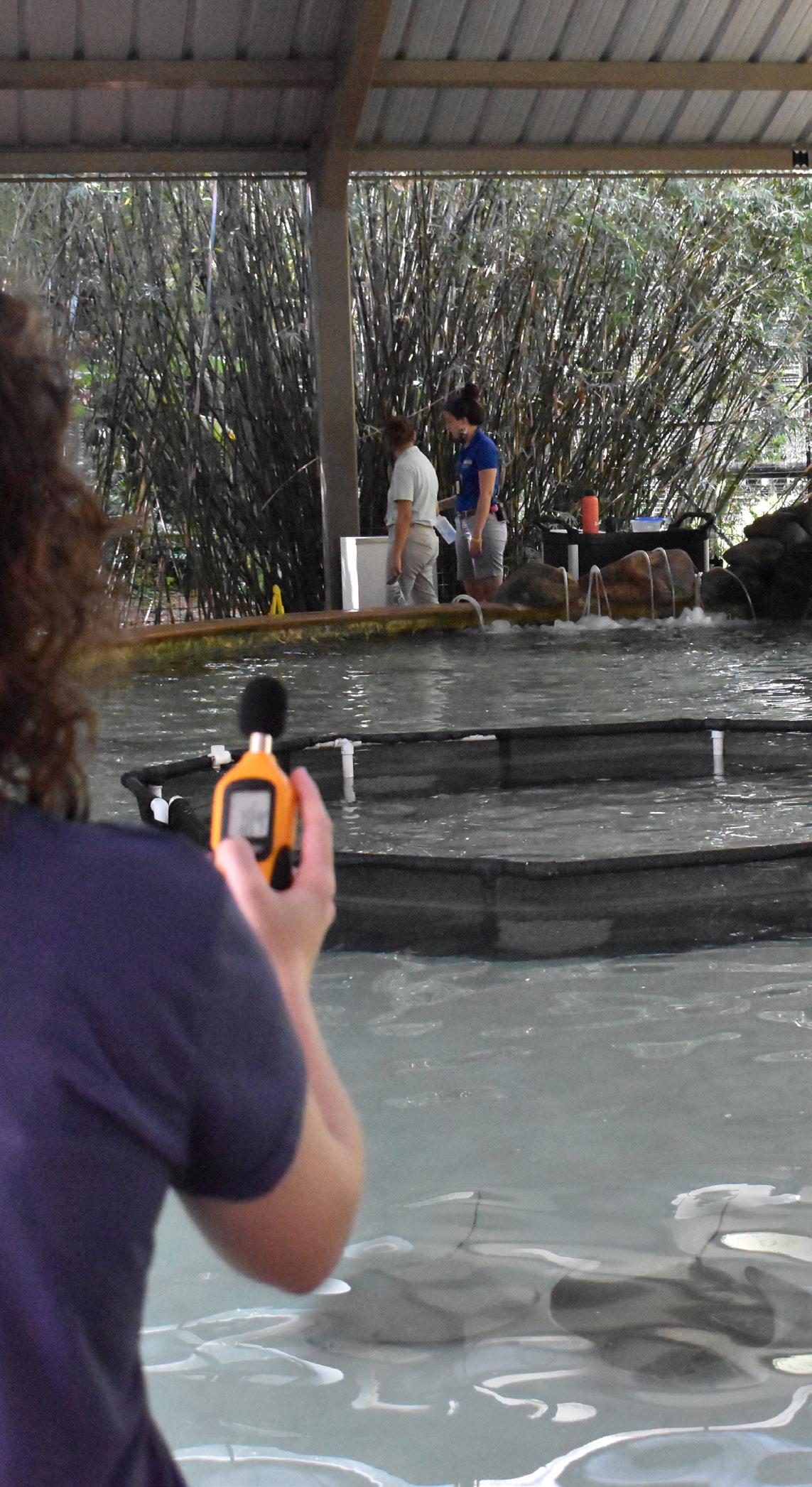
As an AZA-accredited institution, we must formally assess the well-being of every animal in our institution every year. These annual assessments can lead to additional ways of monitoring animal wellbeing, especially in response to a “significant life event” such as a habitat renovation, introduction to a new social group, construction or a special nighttime event. In 2021, several animal assessments mentioned concern about nighttime events. More specifically, Care Specialists wanted to better understand how loud these nighttime events get and how the animals were responding to the noise.
In response, the Animal Wellbeing team embarked on a two-year study (2021–2022) to answer these questions. In the month leading up to Spooktacular, the team collected behavioral data and decibel data on nights without any visitors or festivities at every animal habitat on Zoo grounds with the assistance of thermal and night vision cameras. This process was then repeated on every Spooktacular night during these two years to provide a comparison to see if the animal behavior changed on an event night compared to a “normal night,” and to see how loud decibel levels
got in animal areas during the event. Fortunately, we did not observe any significant changes in undesirable behavior from any of the animals in the Zoo’s managed plan on event night compared to non-event nights.
However, the team did observe high decibel volumes in some areas during the events. To mitigate the effects of such loud volumes, the Zoo and Gardens has adopted a policy that music playing on grounds during events should not exceed a certain threshold. In addition, Animal Care and Animal Wellbeing teams directly communicate with event staff to report any signs of discomfort or stress being exhibited by any animals during these events. During an event, careful planning is involved so that team members are aware of what sound elements will be present. This allows for different stakeholders to weigh in on whether specific sounds or event features could be stressful for certain animals and then advise a potential alternative that could be less over-stimulating.

By John Reed, Photography Volunteer & Snapshot Society Instructor
Let’s talk about shooting flora, specifically flowers this month. A whole book could be written about flower photography, but we don't have that kind of space so enjoy just a couple tips! This is also why I’m only talking flowers and not all the other beautiful flora at the Zoo. Our horticulture department does an amazing job of making the Zoo look good year-round, so let’s take advantage of that.
One of the “problems” with digital photography is that it’s quite easy to get caught up in all the complicated technical details made possible with our modern digital cameras and with post-processing. I think this complication is what drives so many people to simply go with the smartphone. There is nothing wrong with that and as I always say, shoot the way that makes you happy. This month, let’s move away from all the technical aspects and look at some simple things we can do without worrying about a single camera setting or having any detailed knowledge of how photography works.
No matter what camera you are using, one of the simplest and easiest things to do is not involve camera settings, post-processing or any other hightech knowledge. It is simply a matter of paying attention to your subject, the background and how you can change that relationship by only changing your position. Often it doesn’t take much. Slight changes in your position and line of sight can make a dramatic difference in the final photo. Getting closer, higher, lower or moving sideways are all easily done.
Look at the following examples. As you do, keep in mind, sometimes the change is not “better or worse,” but simply different. It is after all in the eye of the beholder. That said, there are some that I personally find to be much stronger images after the change.
Here are two examples of simply moving closer:
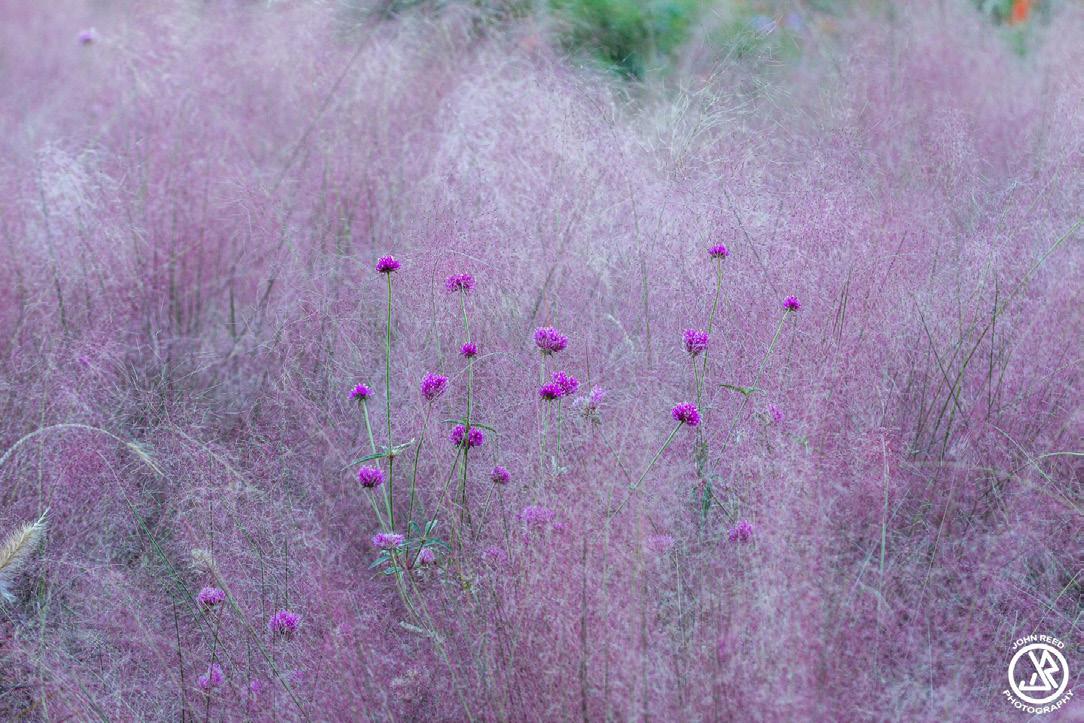
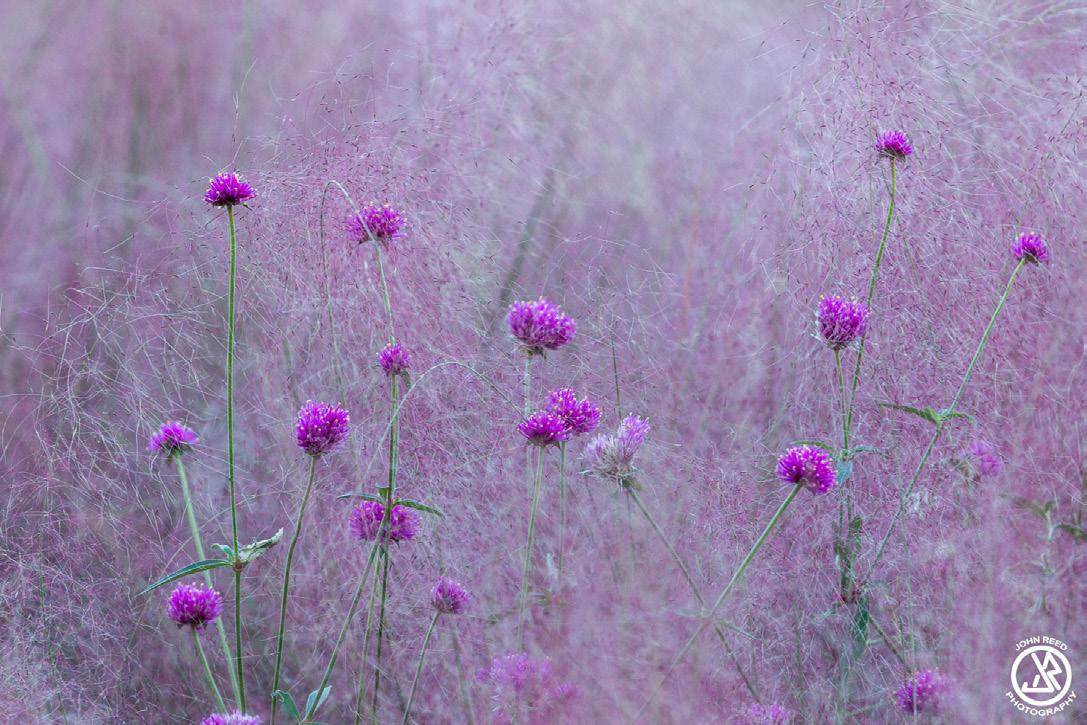
I think the image on the right clearly looks better.
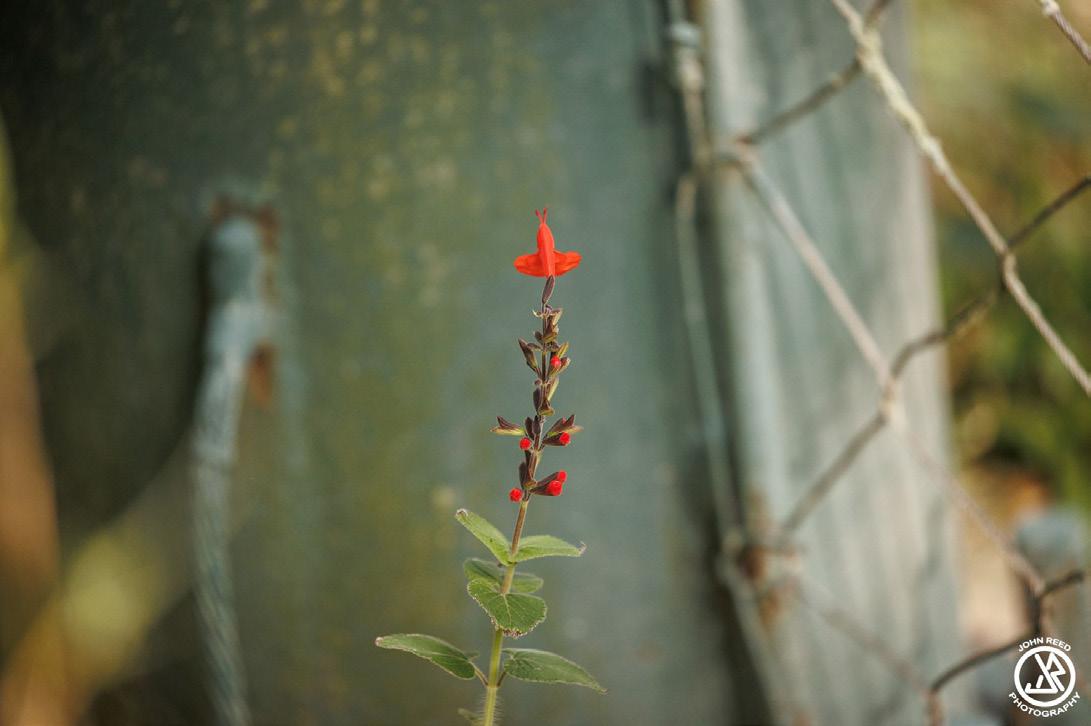
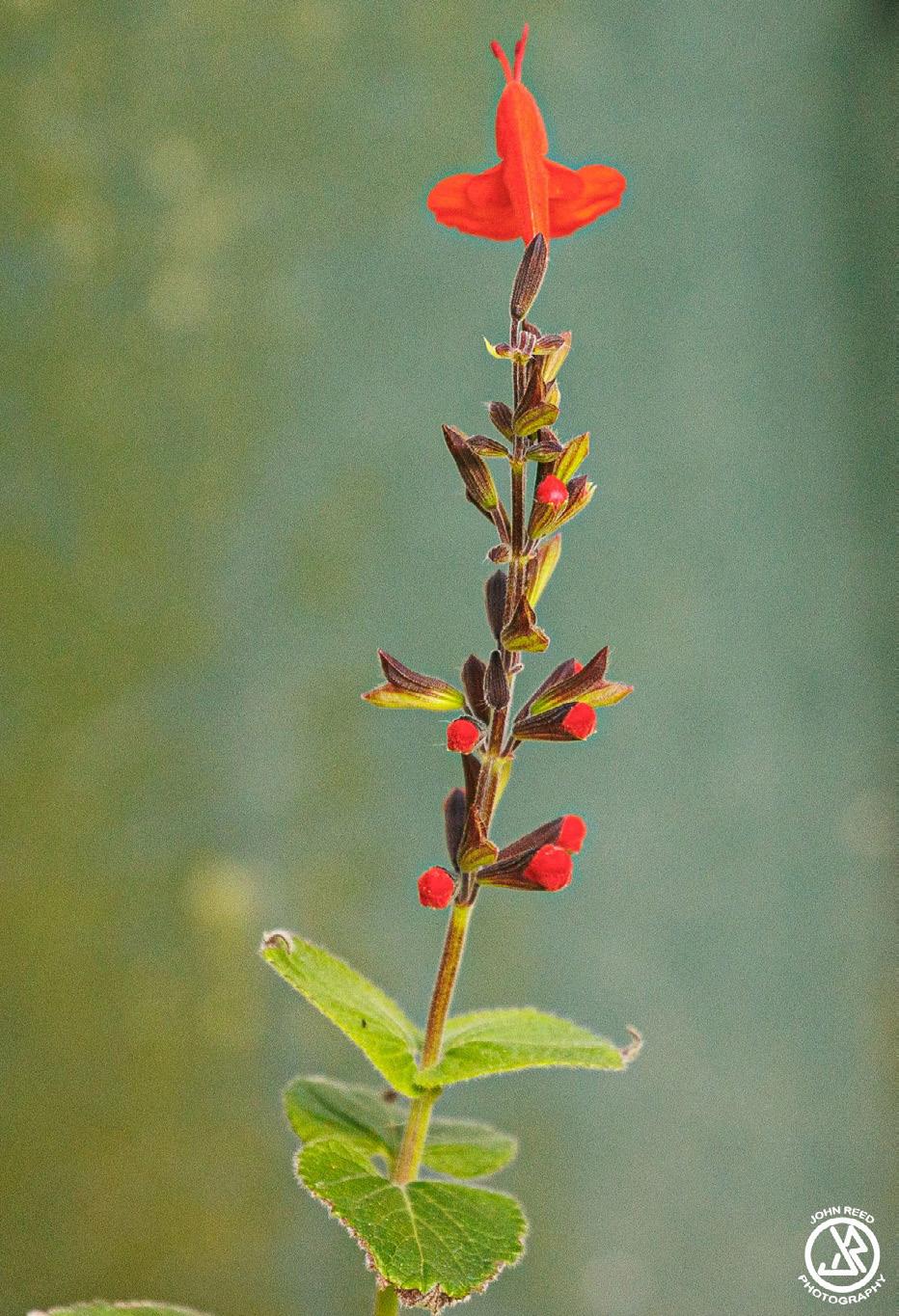
This pair shows getting low and looking up.
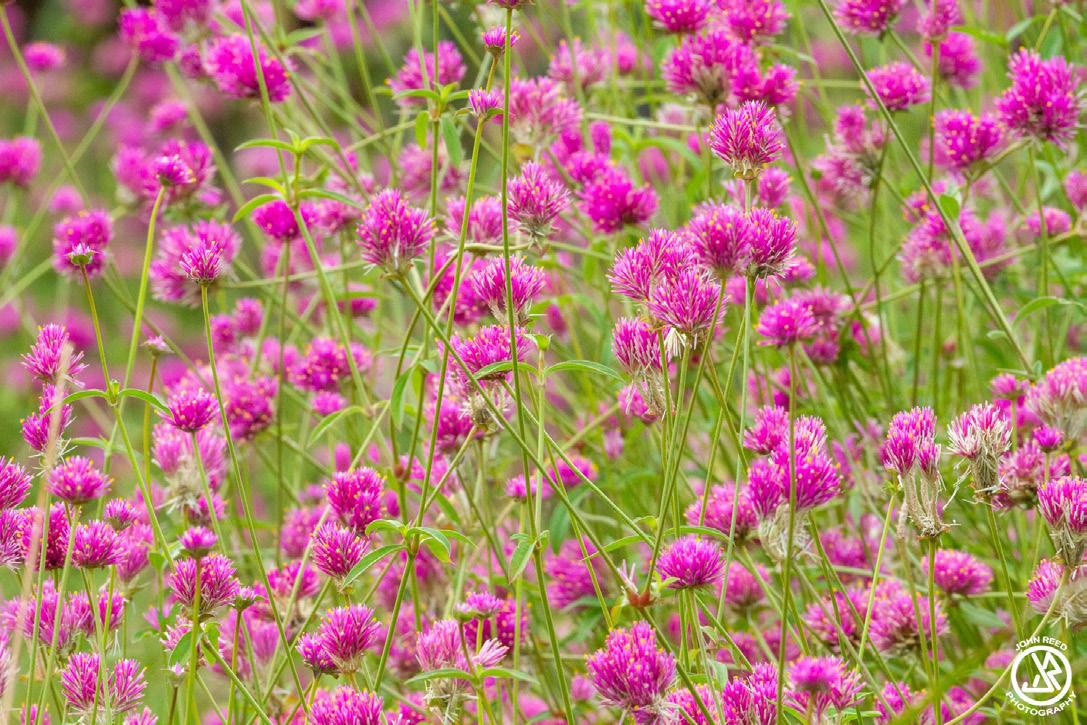
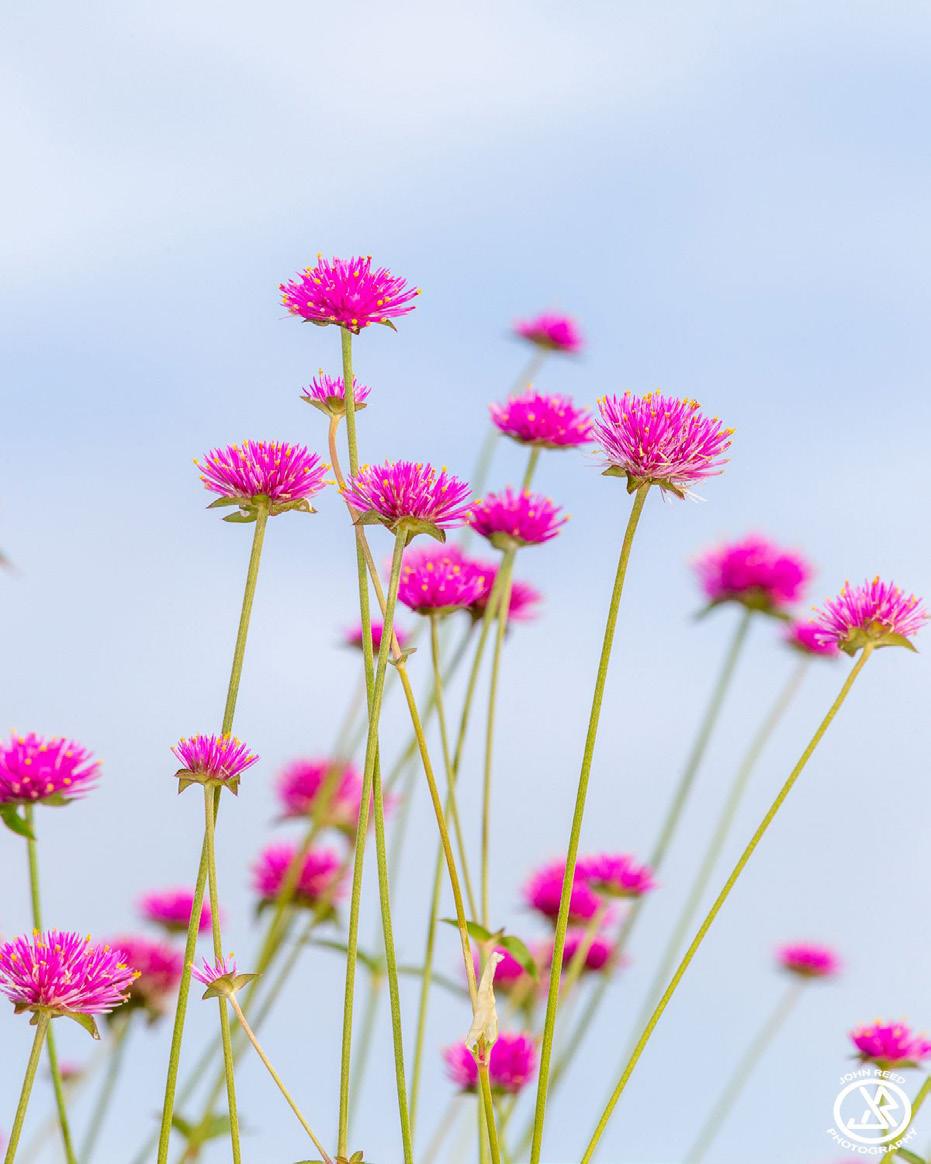
Here I moved sideways, see how subjects stand out:
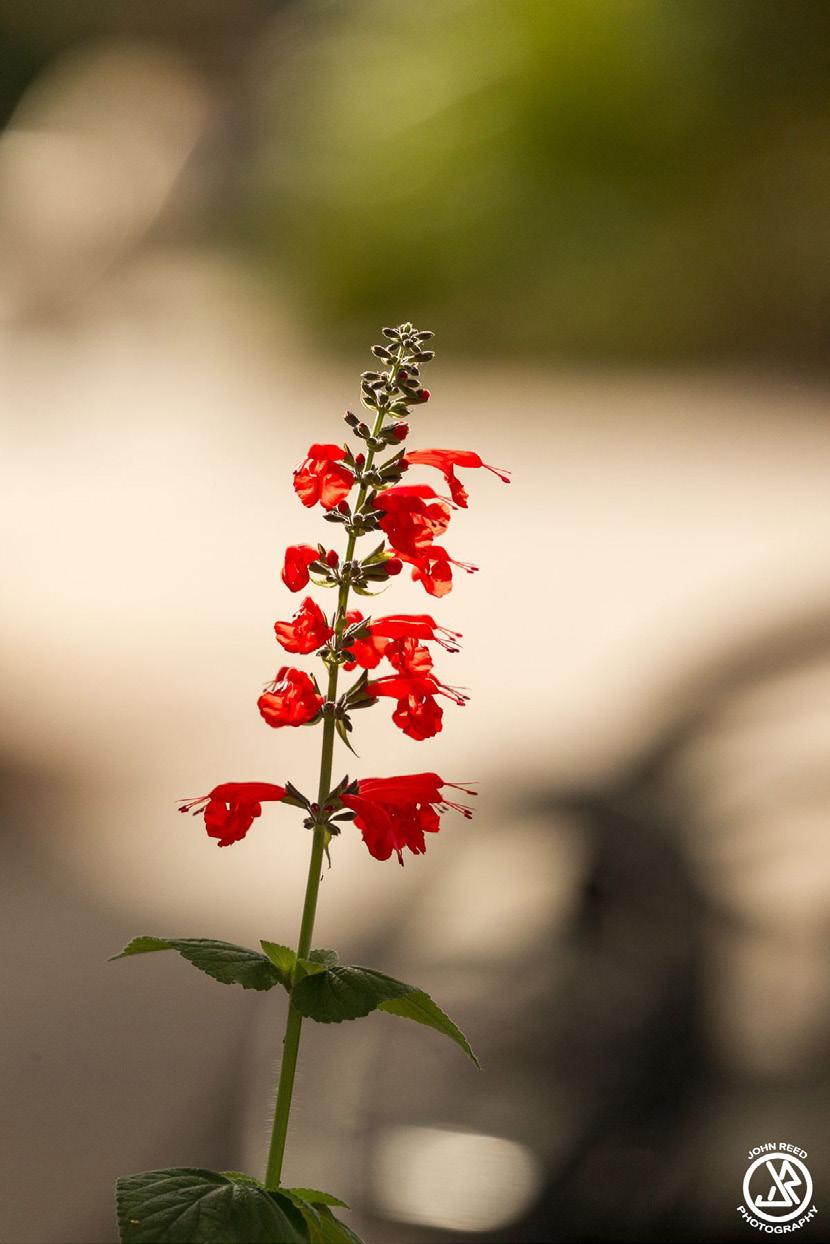

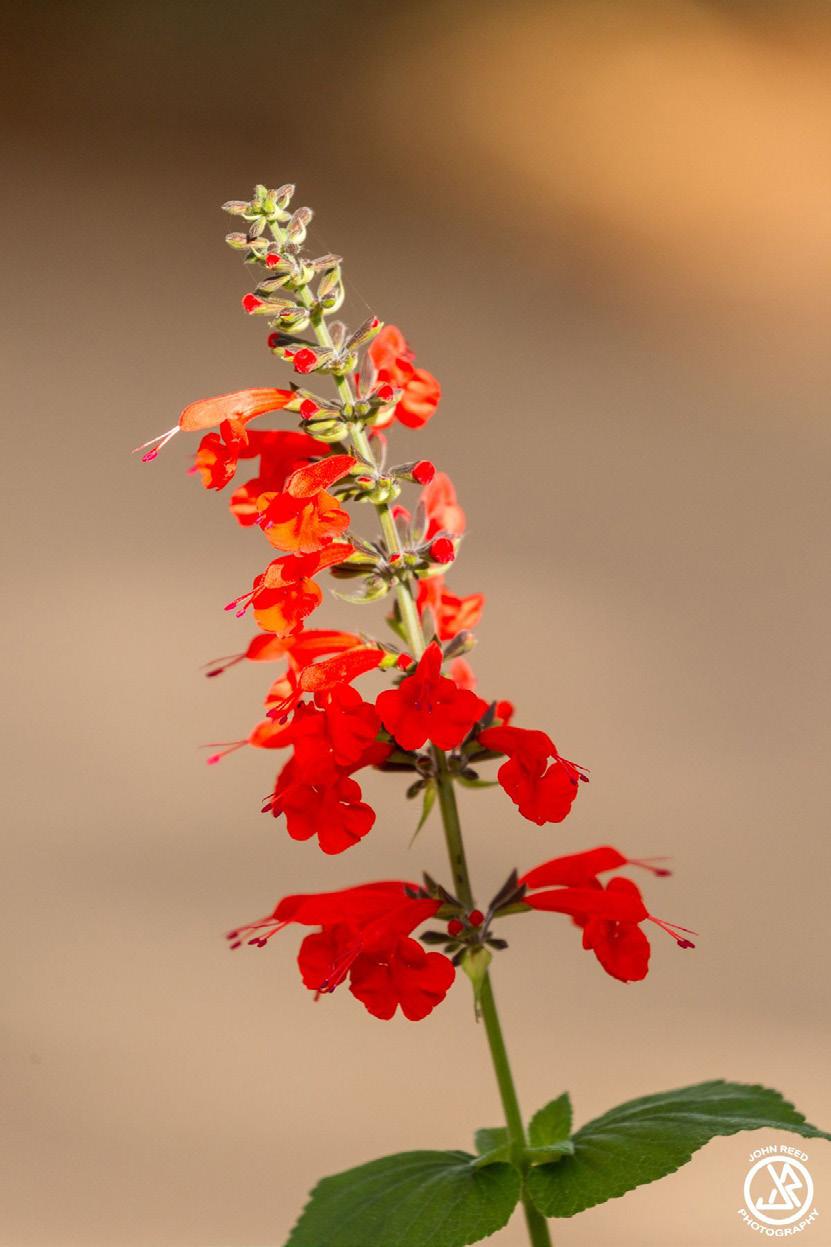
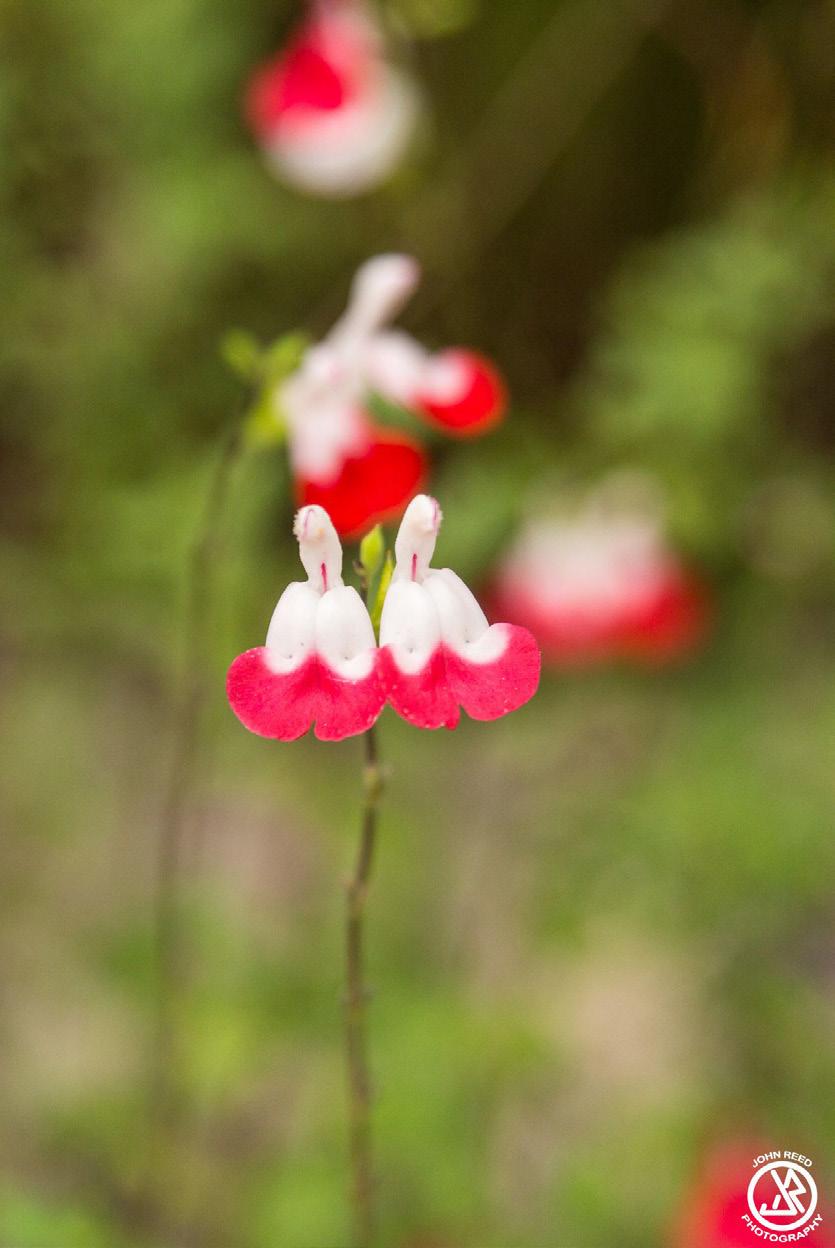
For all of these, I feel the cleaner backgrounds make much stronger images in that the subject has no competition for your attention.
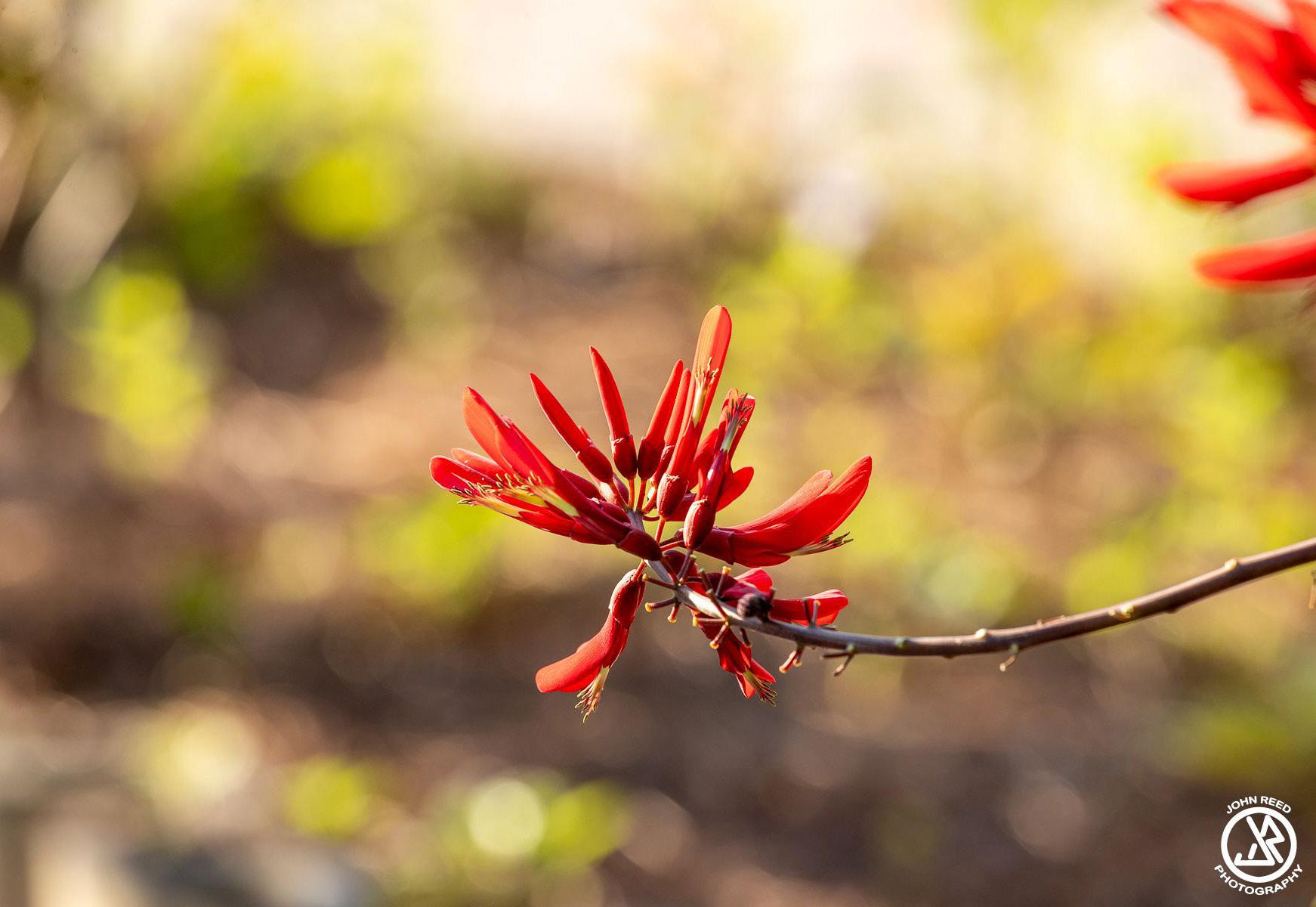
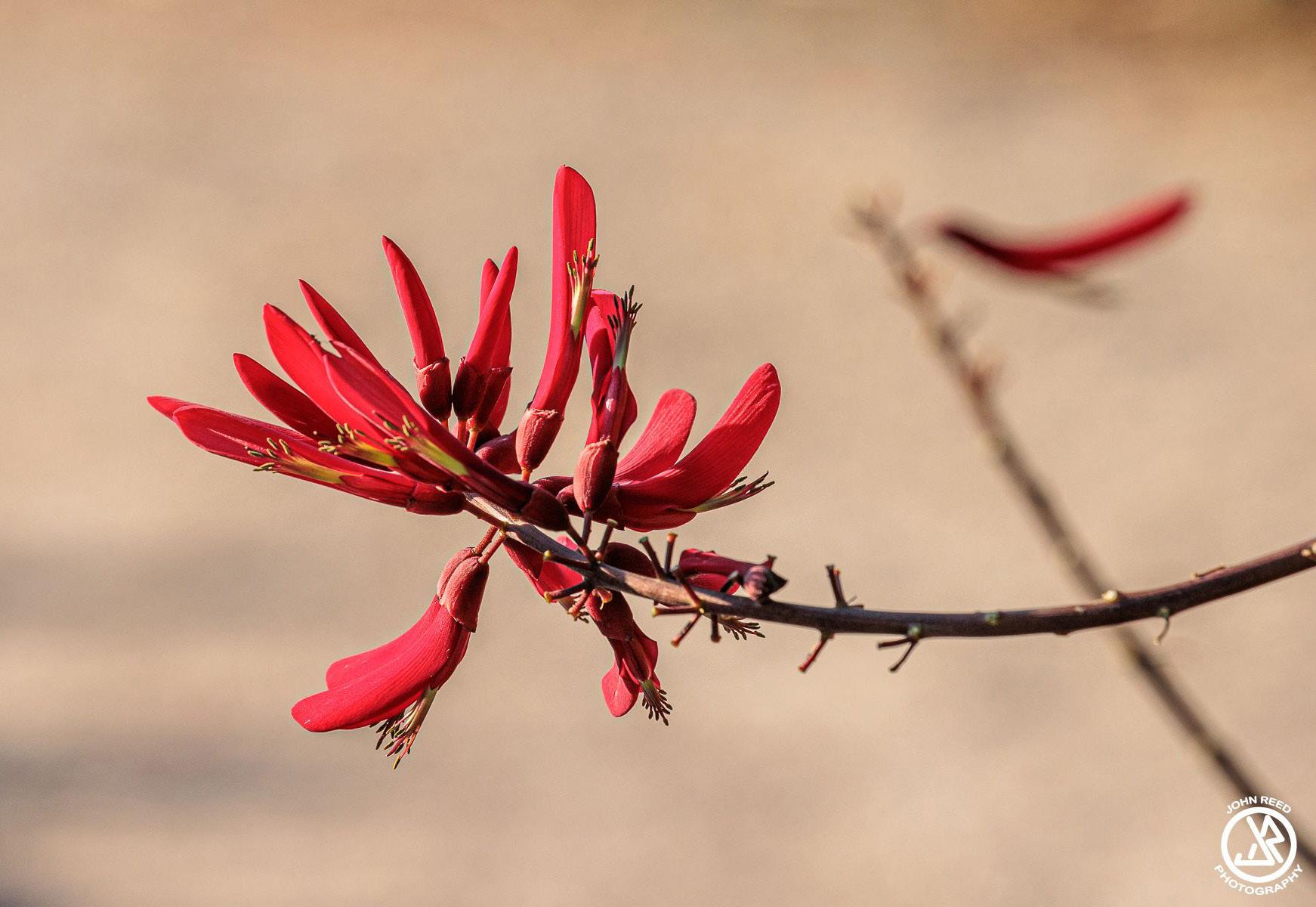
Finally, the easiest of all things to do- don’t have “horizontalitis.” Sometimes turning your camera sideways can make the images get much more interesting. Avoid wasted space on either side that adds nothing to the image. Generally, if the subject is taller than it is wide, turn the camera sideways.
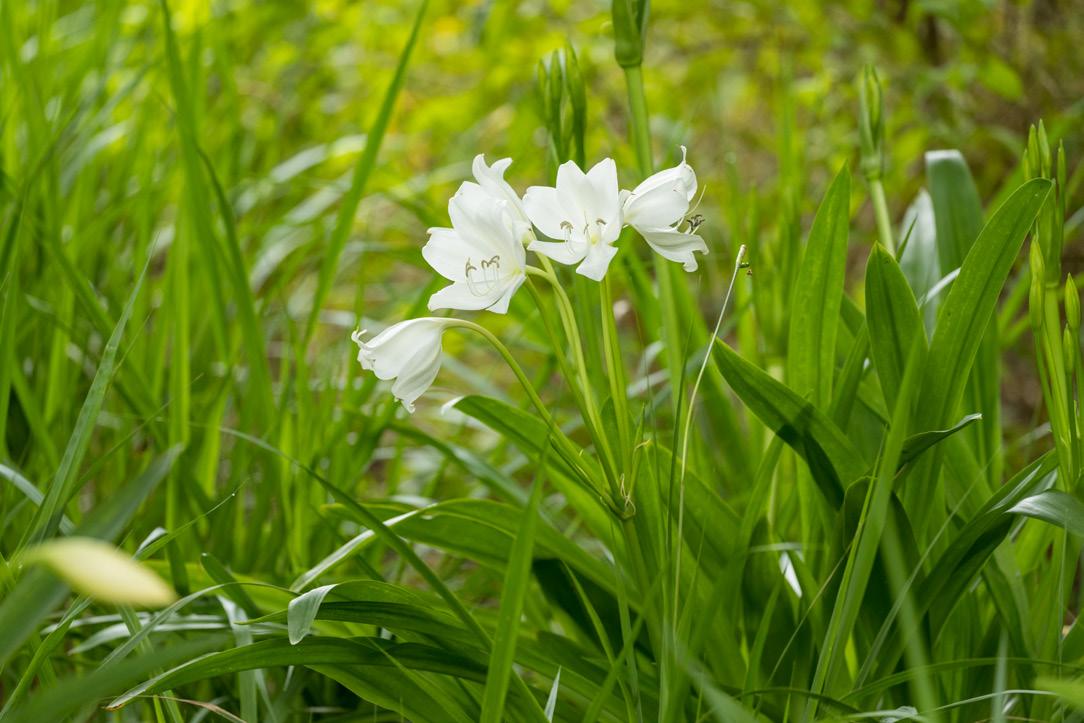
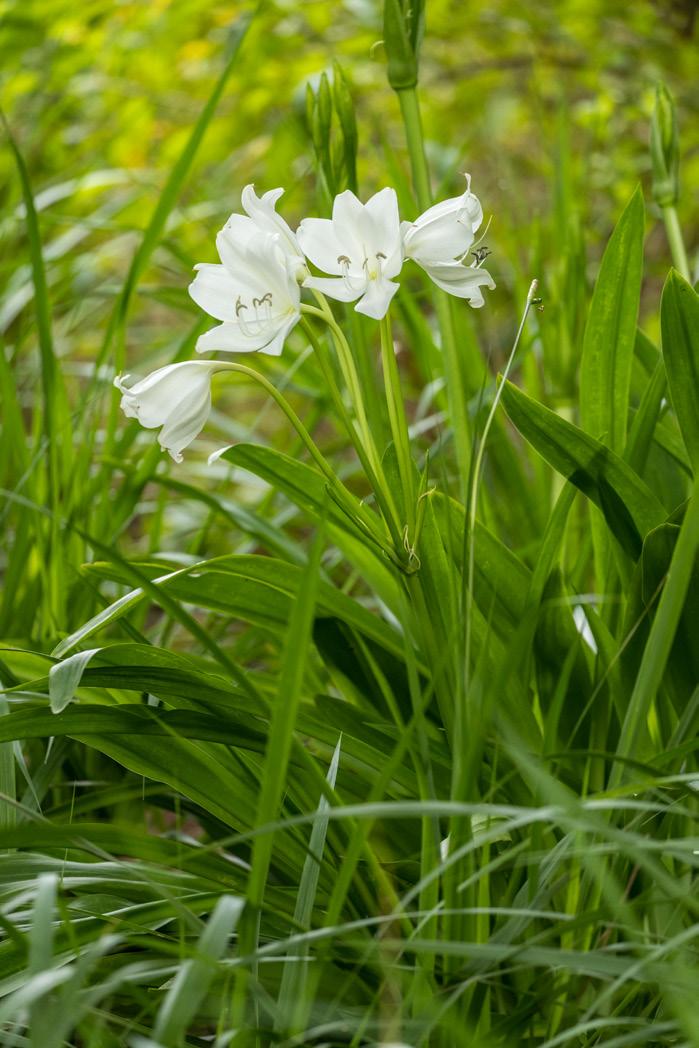
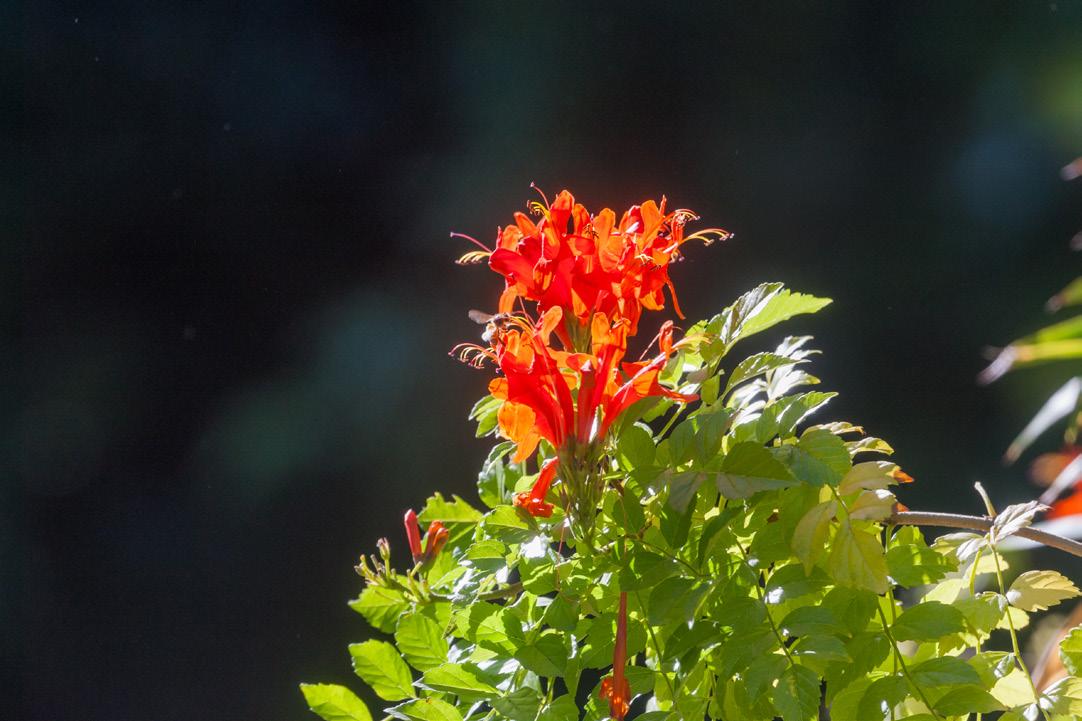

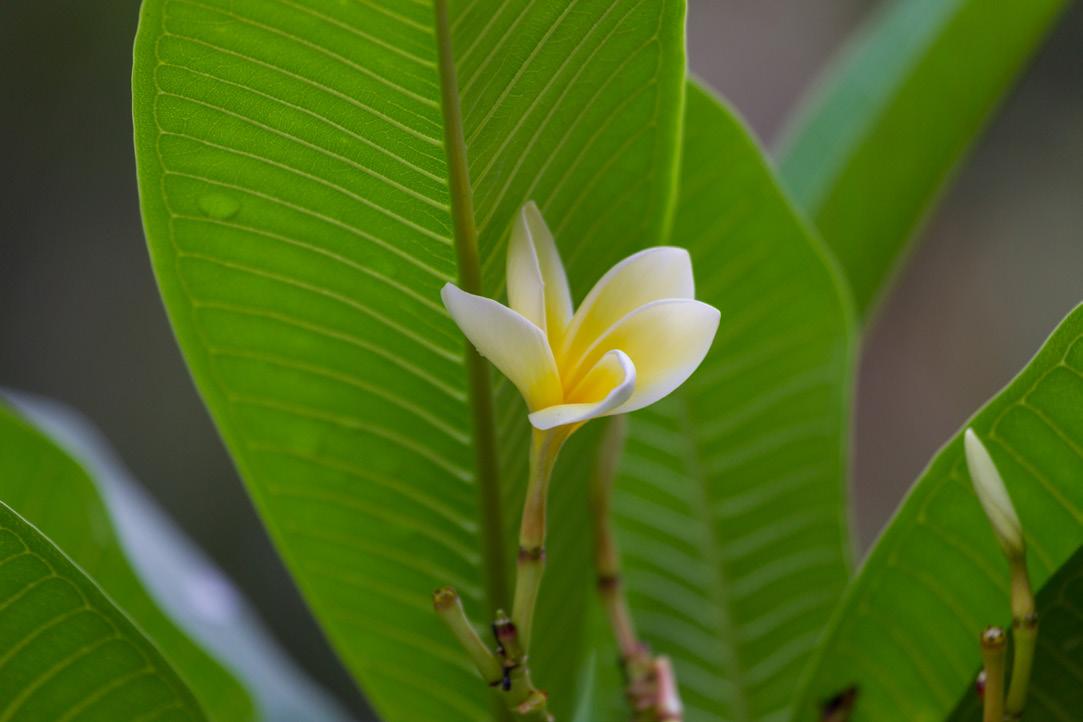

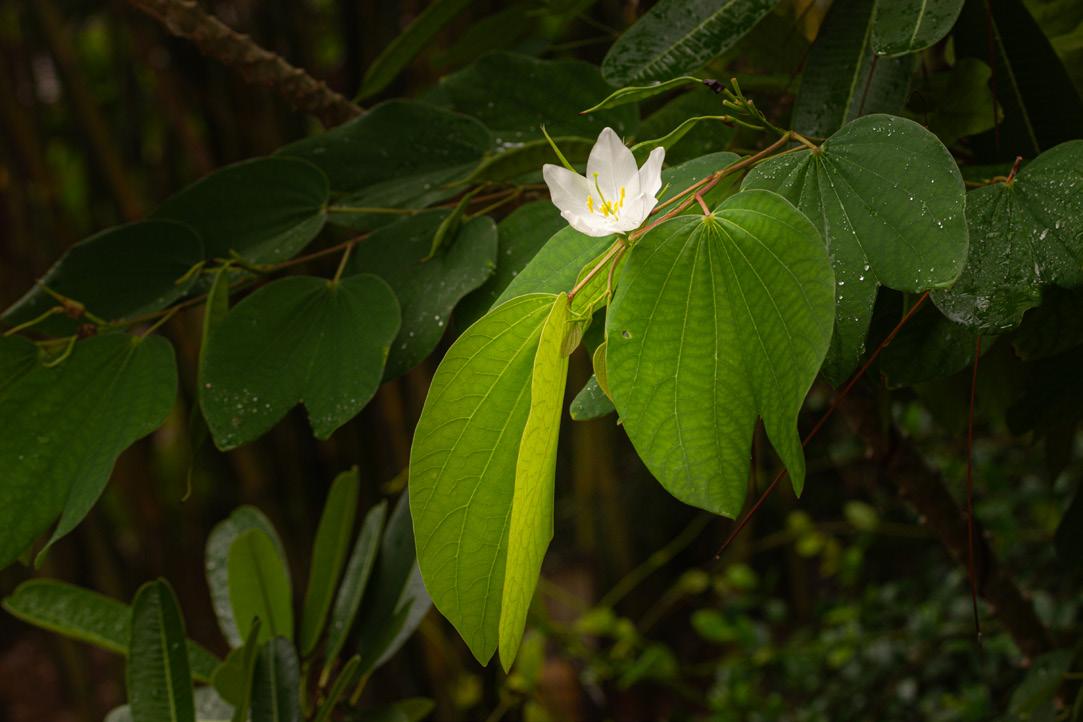
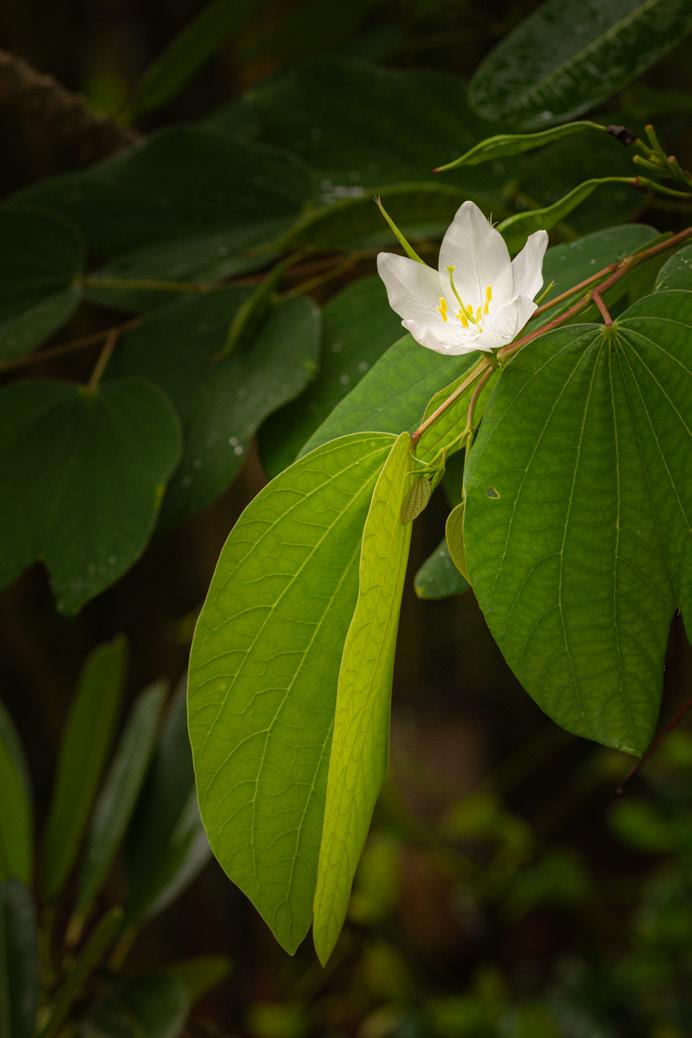
That’s it for now. Keep shooting and enjoying our amazing Zoo.
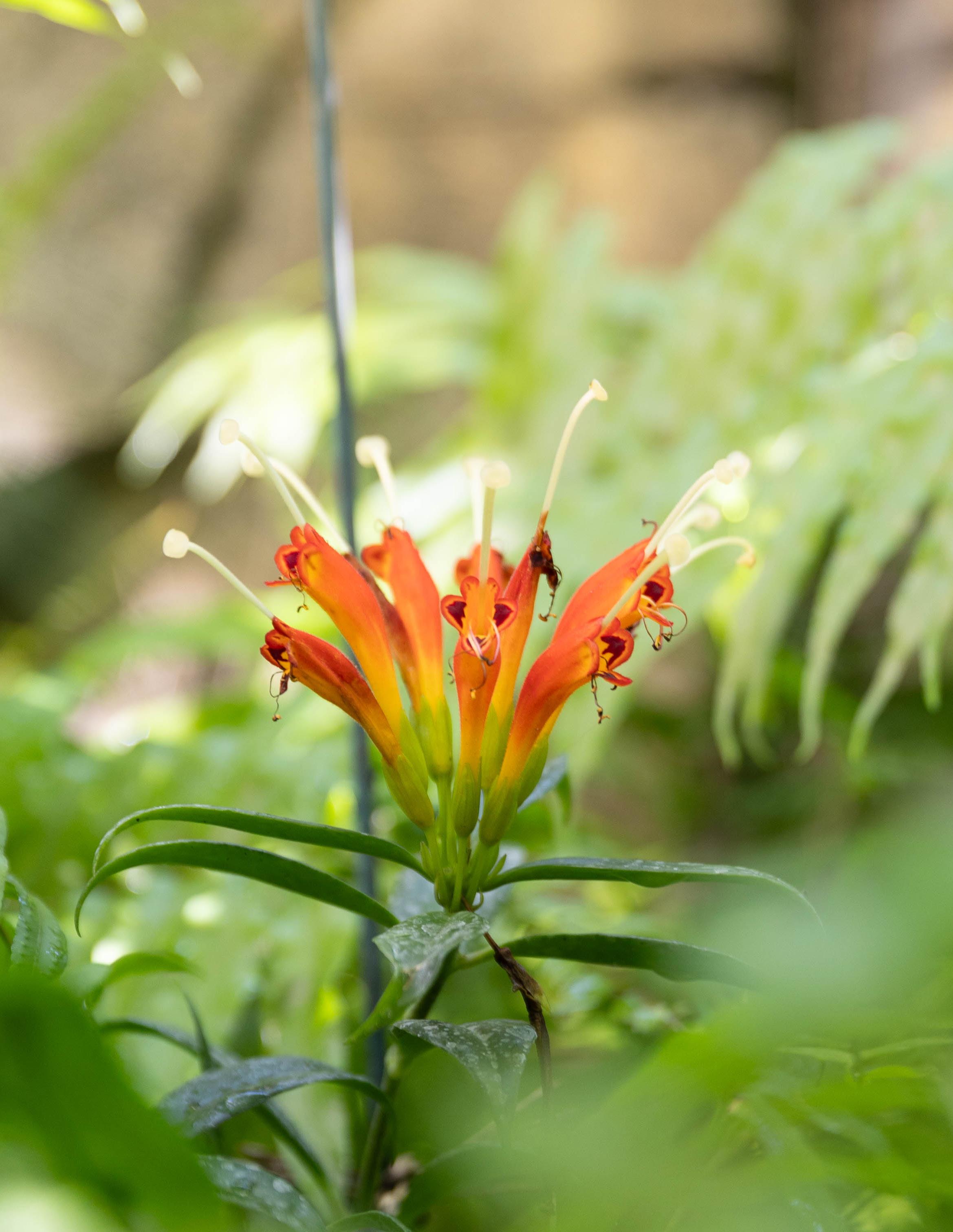
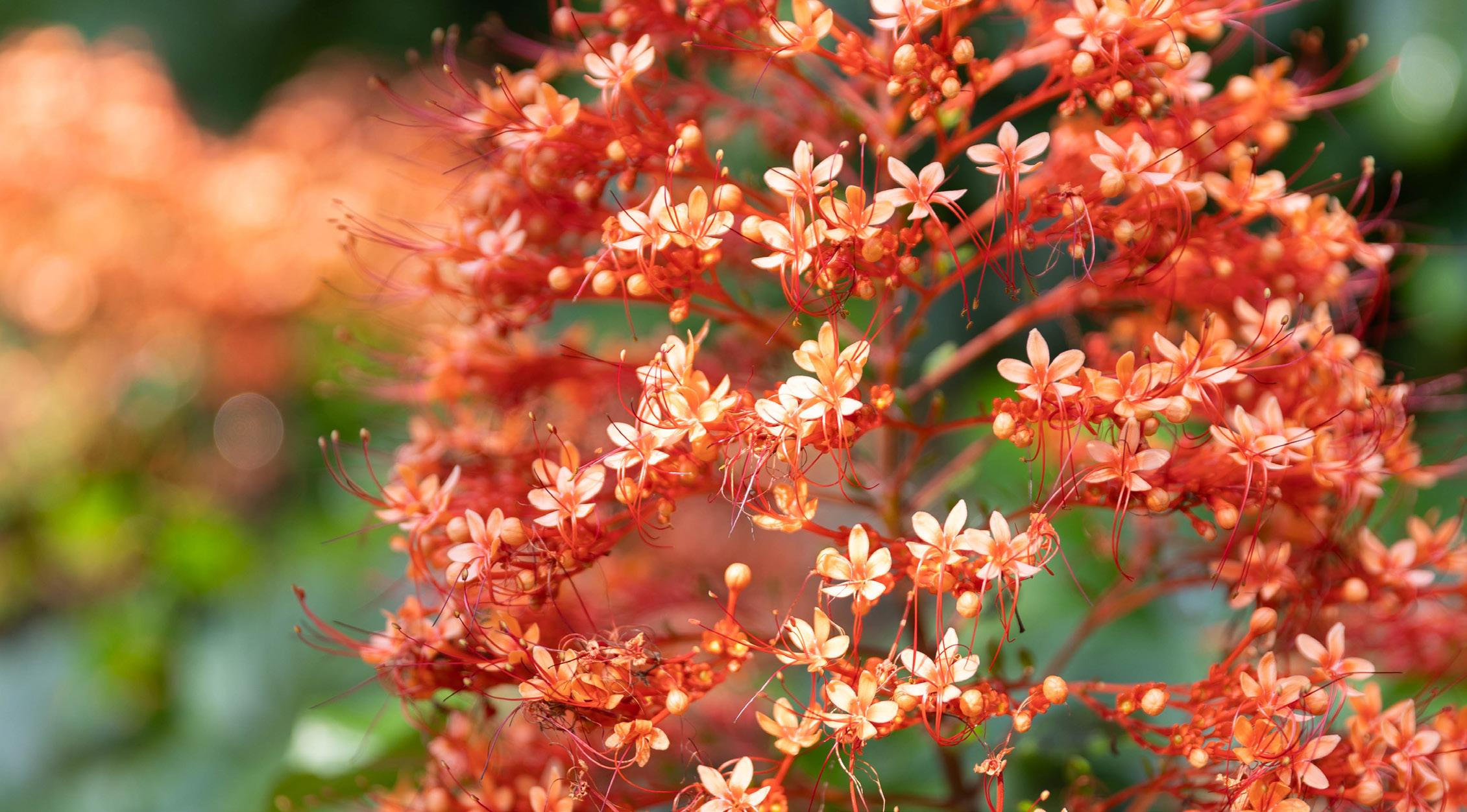
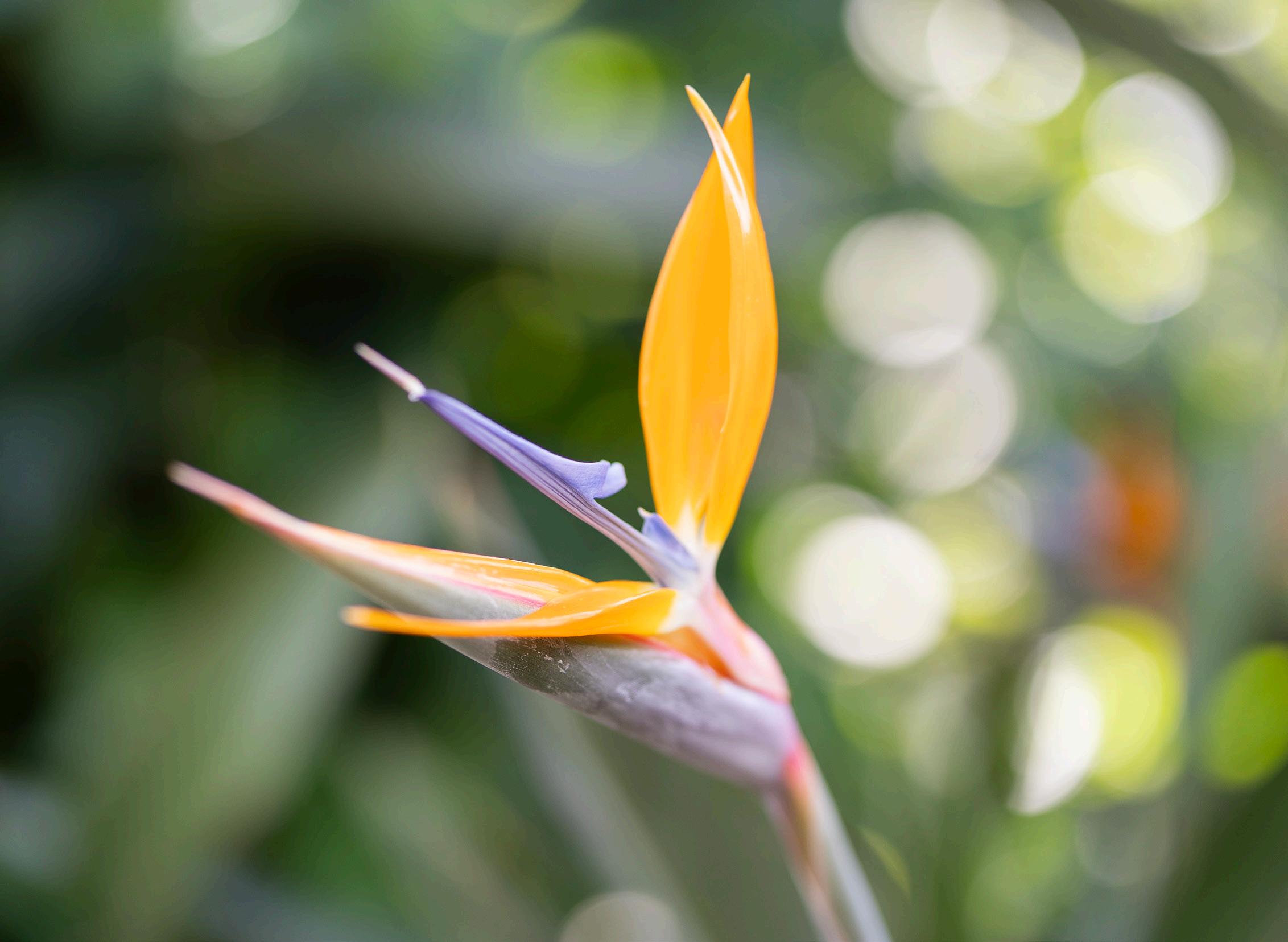
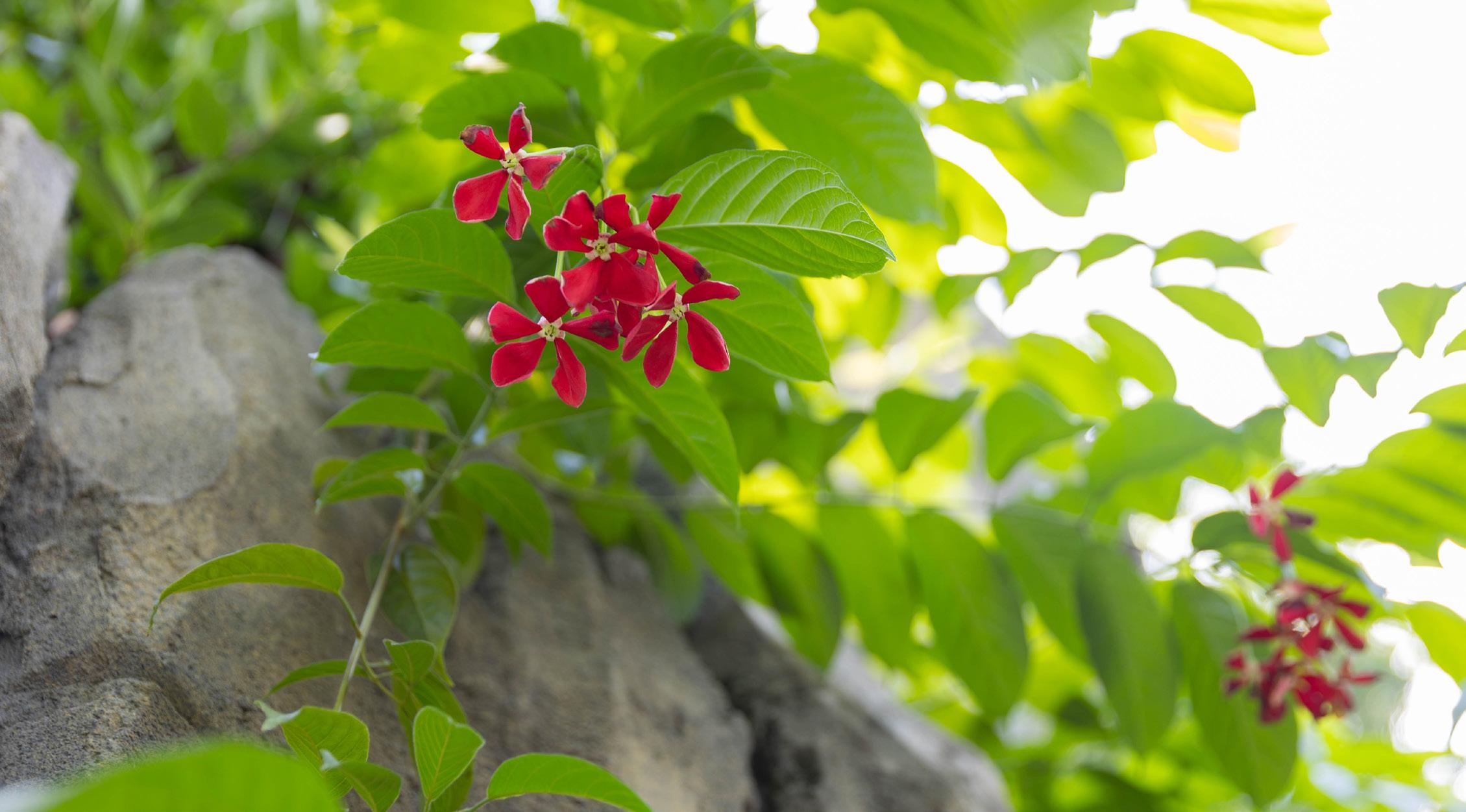
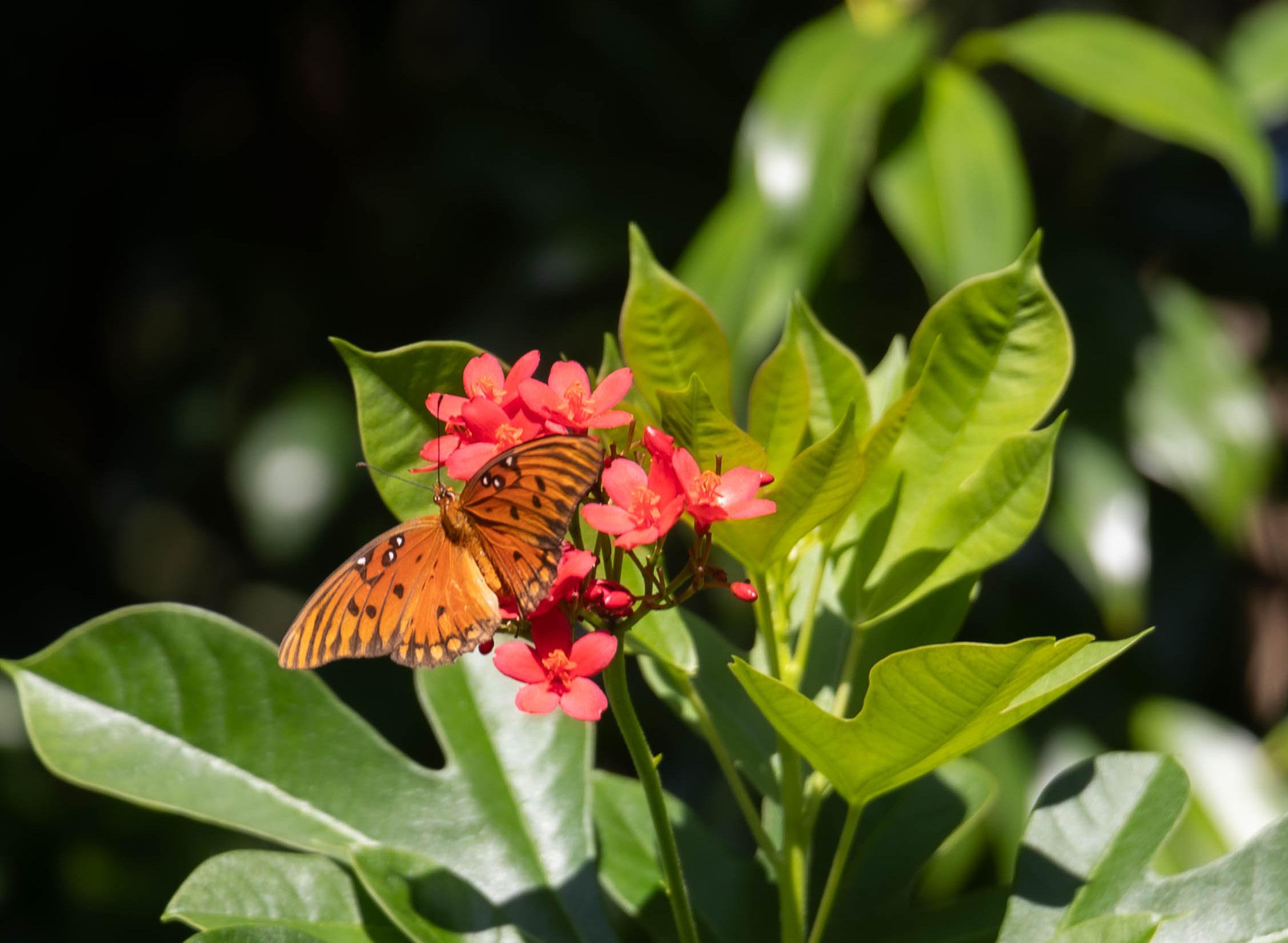
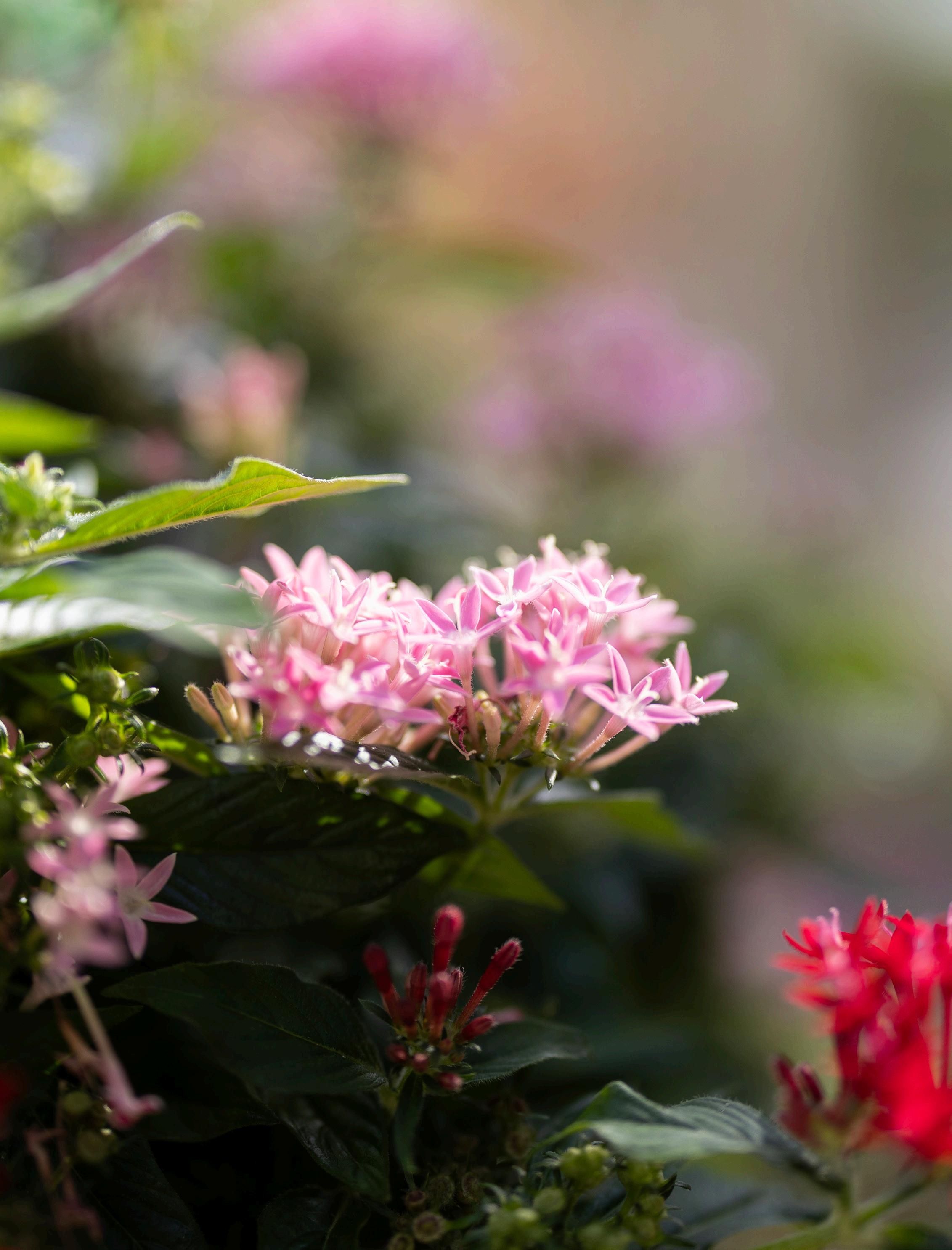
We are beyond thankful to our generous sponsors and local breweries for helping us host a successful Conservation on Draft event. Special thanks to our guests for coming out to enjoy fantastic food, amazing animal encounters and supporting our mission to protect wildlife!
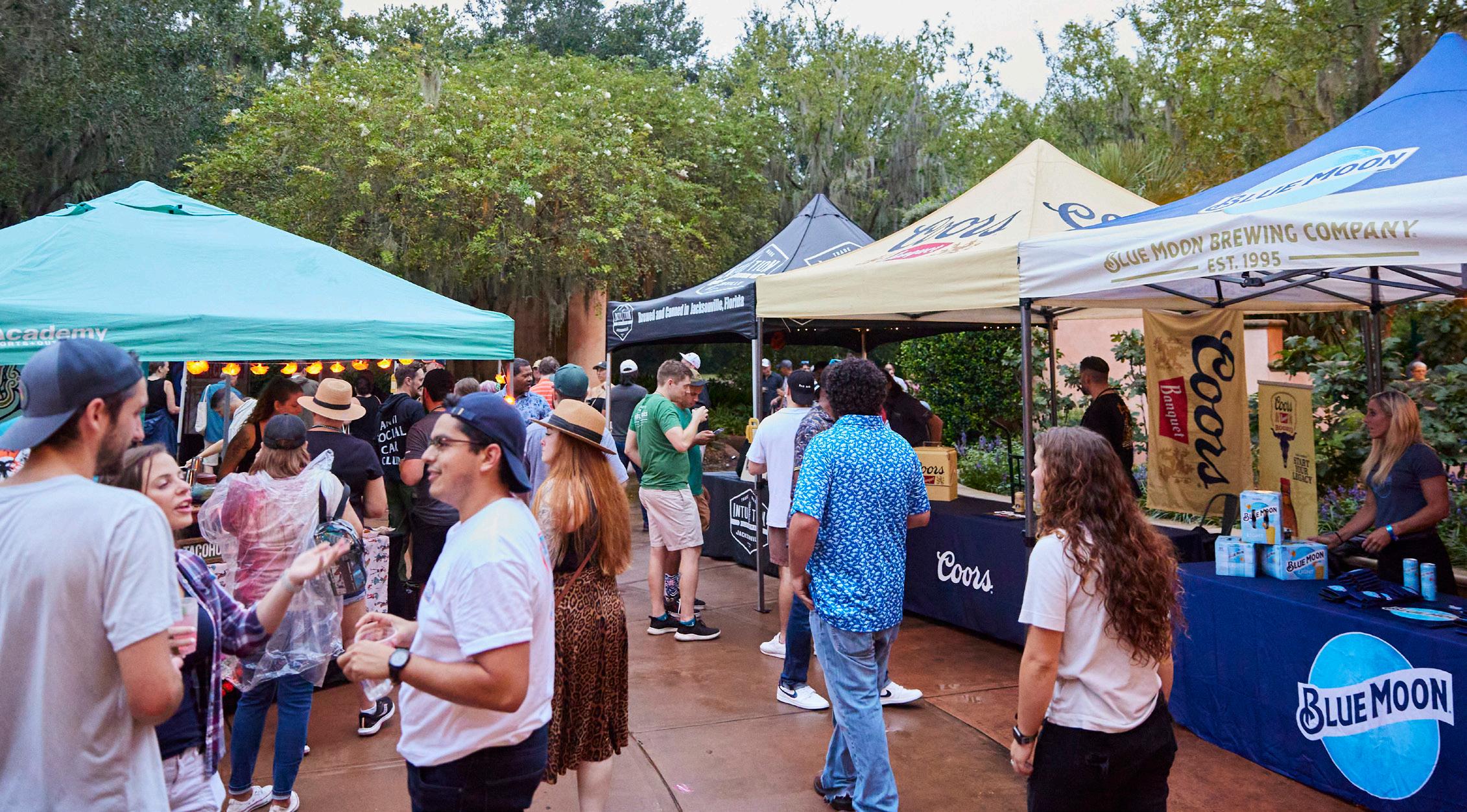
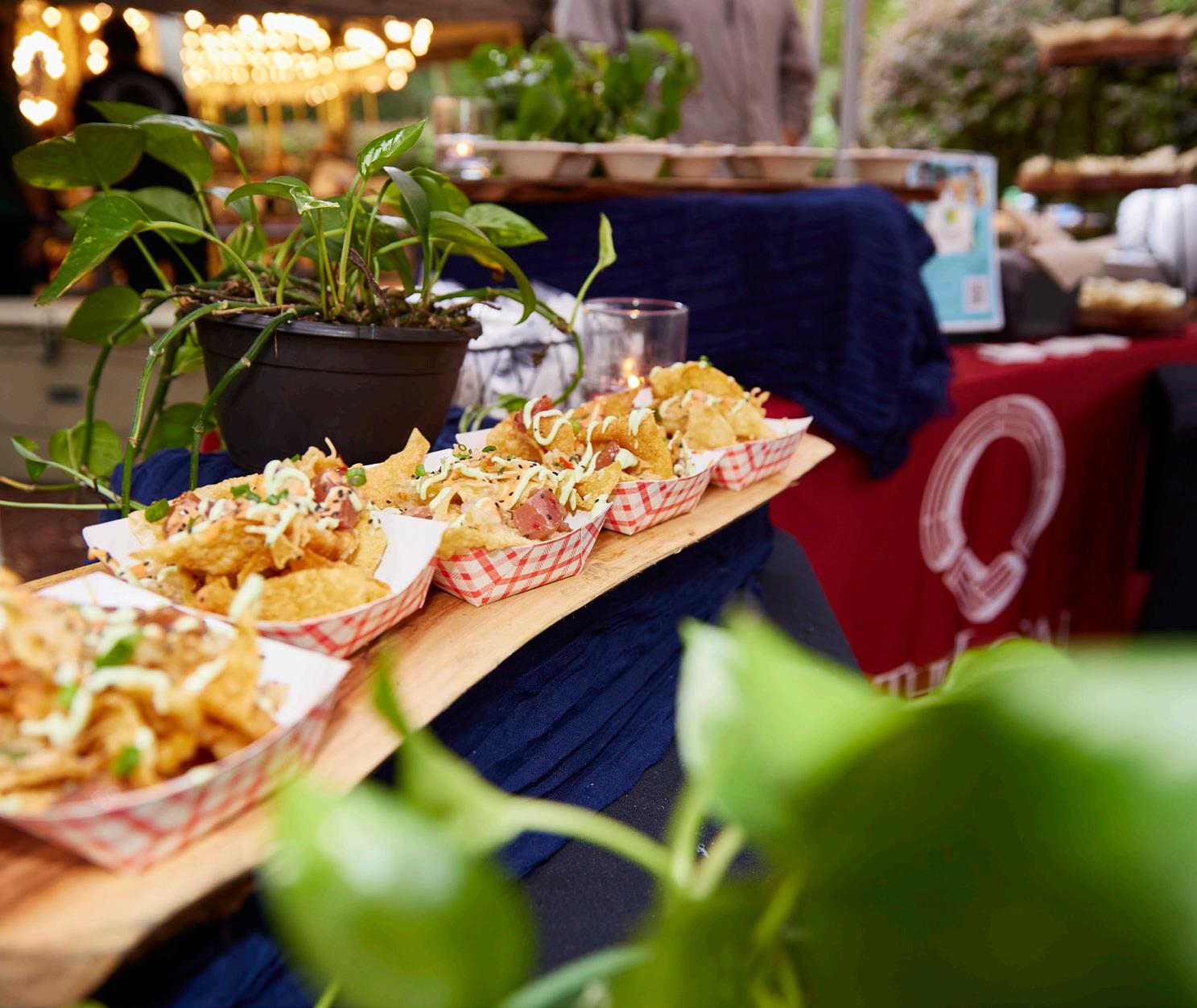
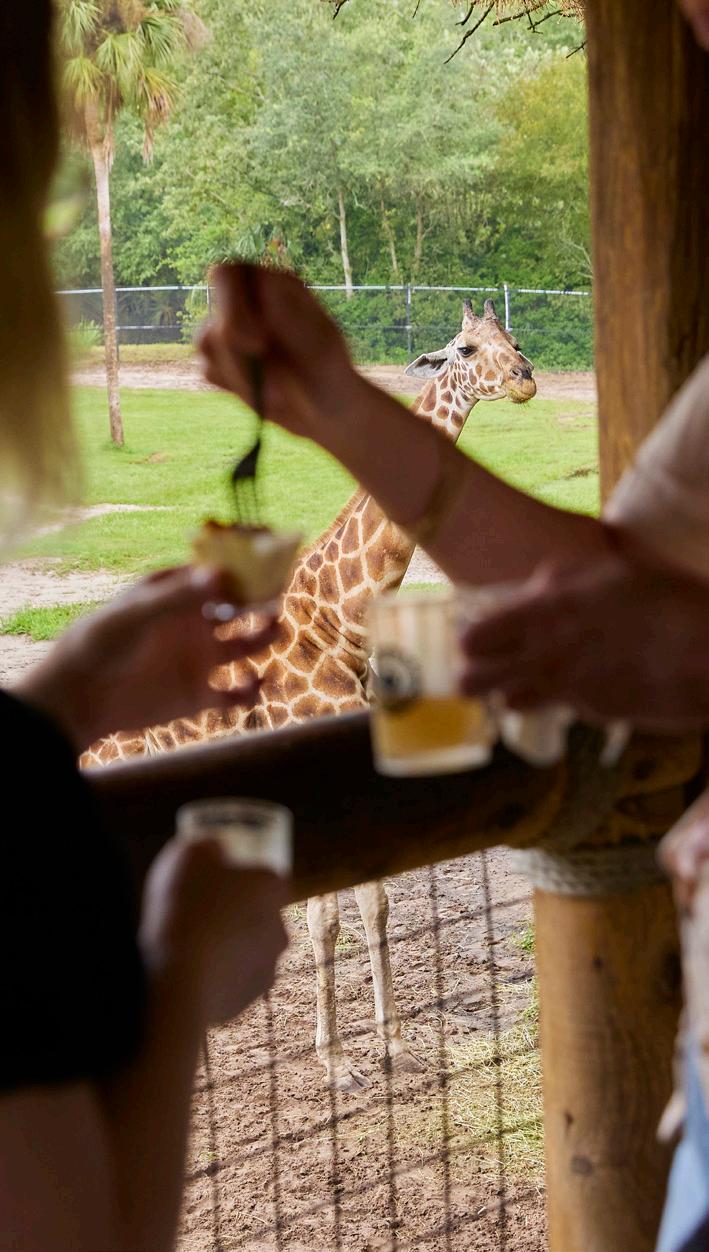

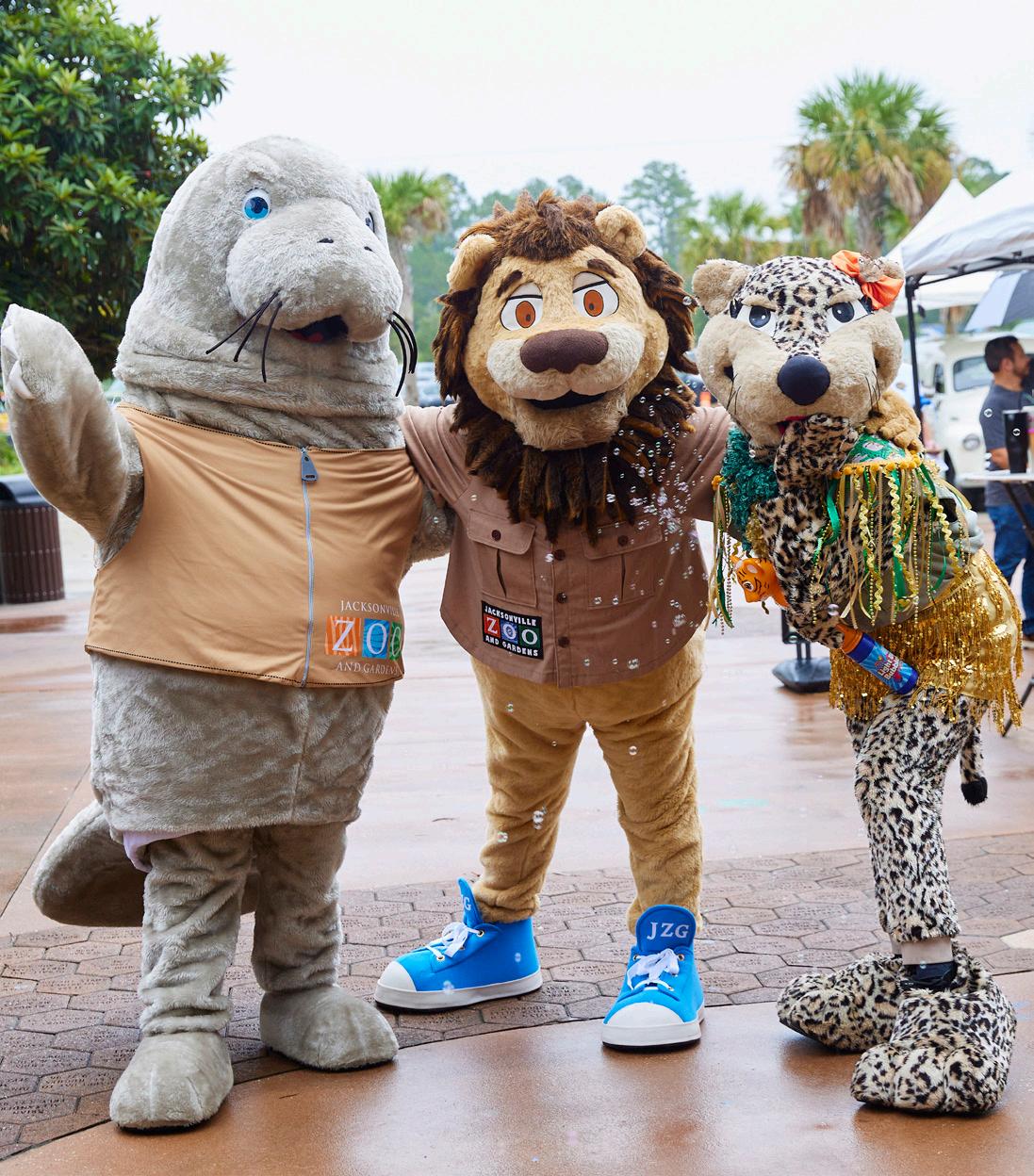

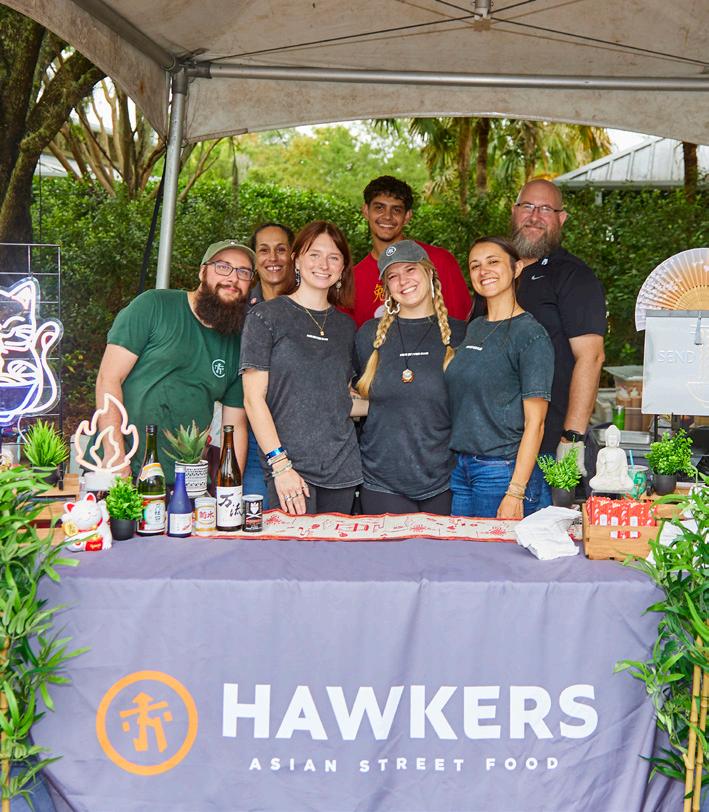
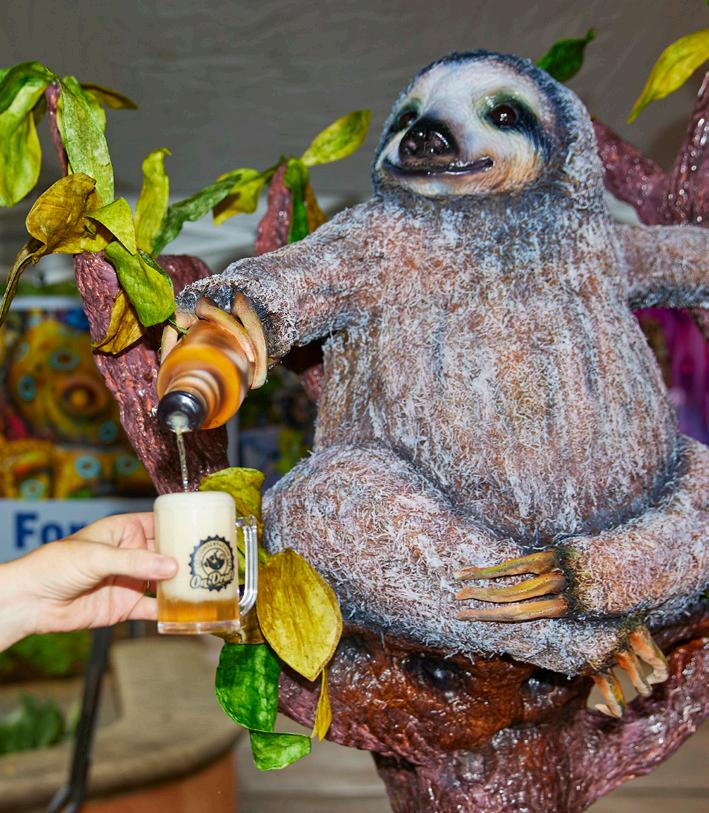


Thanks for reading Wild Magazine. See you at the Zoo and Gardens soon!